Why is the “earthy” Wabisabi style so charming?
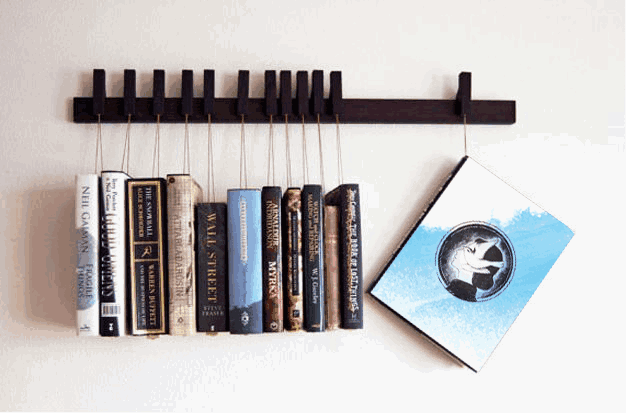
Wabi-sabi aesthetics: the superficial but profound
“Imperfect” design is more in line with real life
What is Wabi-Sabi?
Wabi-sabi comes from the Japanese word "wabi-sabi", which is an Eastern Zen state of mind that believes that true beauty is imperfect.
It comes from the Three Dharma Seals in Buddhism, namely, impermanence, no self, and nirvana, especially impermanence. The Japanese pronunciation of "sabi" means "loneliness" and "withering", and its ideological source can be traced back to the Zen culture. During the Southern Song Dynasty, the monk Rongxi brought Zen to Japan.
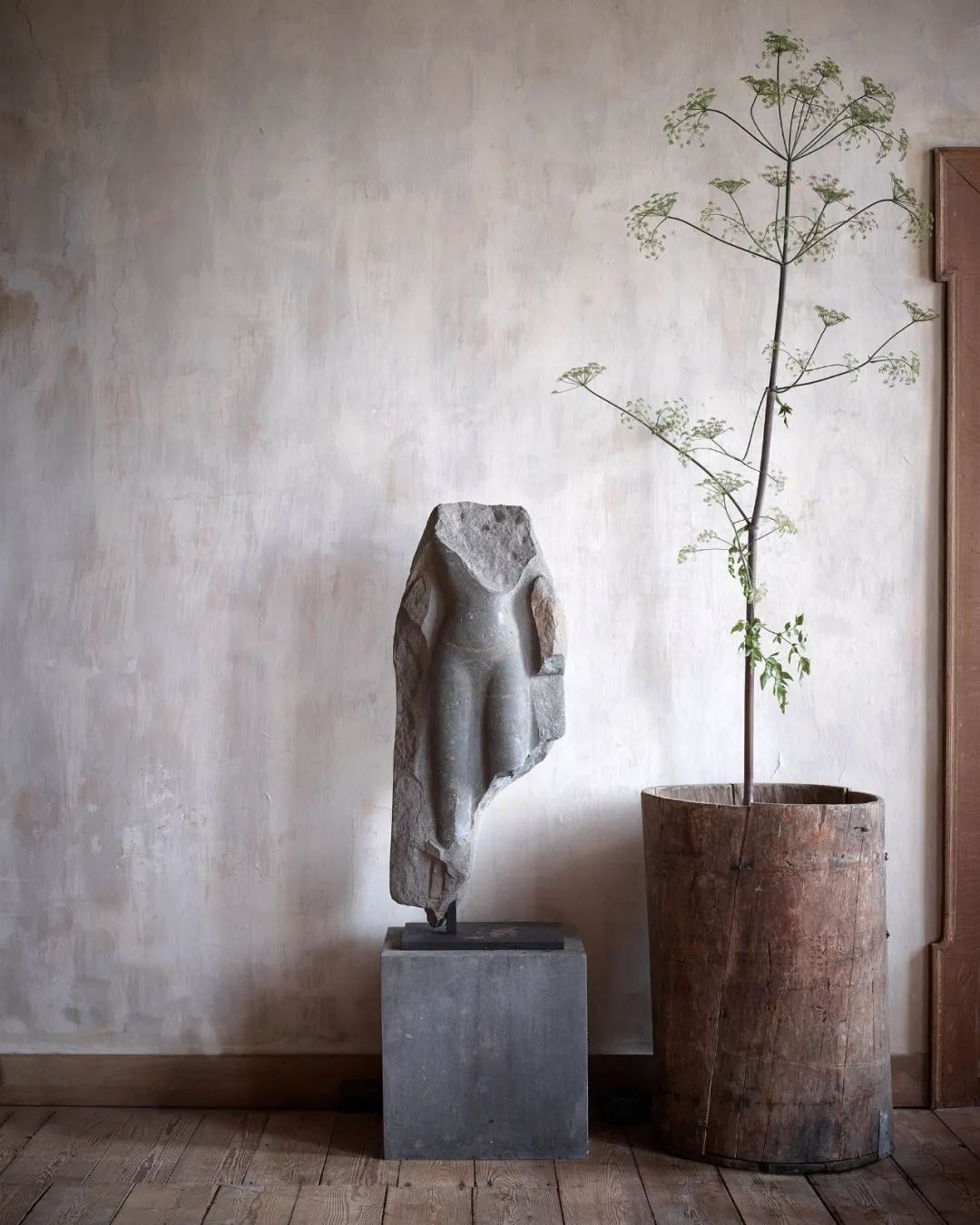 Axel Vervoordt in the spotlight
Axel Vervoordt in the spotlight
The word "wabi-sabi" itself comes from Zen Buddhism. It goes against the river of time and glimpses the minimalist life through a quiet space. Later, it became an integral part of Japanese aesthetic consciousness.
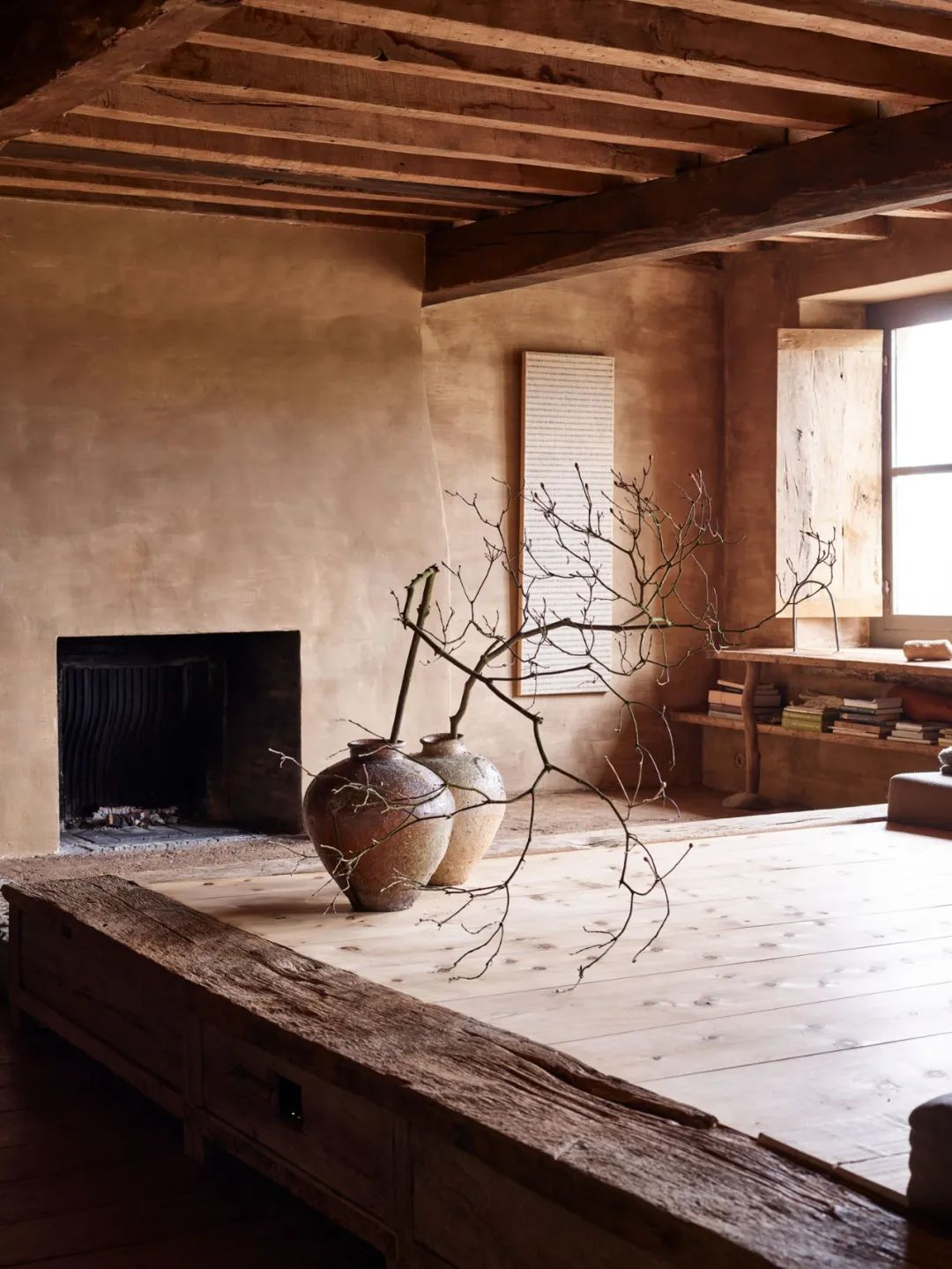 Axel Vervoordt in the spotlight
Axel Vervoordt in the spotlight
Some people believe that Wabi-Sabi is the highest state of oriental aesthetics. It is a Japanese aesthetic that is centered on accepting transience and imperfection. In layman's terms, it may seem shabby, but it is the highest state of aesthetics.
In recent years, the "earthy" wabi-sabi style has been in full swing and has been favored by designers in various fields. So how to design a wabi-sabi aesthetic space? The following 15 cases will tell you the answer~
Home in Forest
Design: Yana Prydalna
The designer pursues simplicity and plainness, does not require very complicated structures, chooses natural materials, does not use bright colors, and integrates American unruly style. Hand-made customization and original wood create a harmonious and comfortable atmosphere.
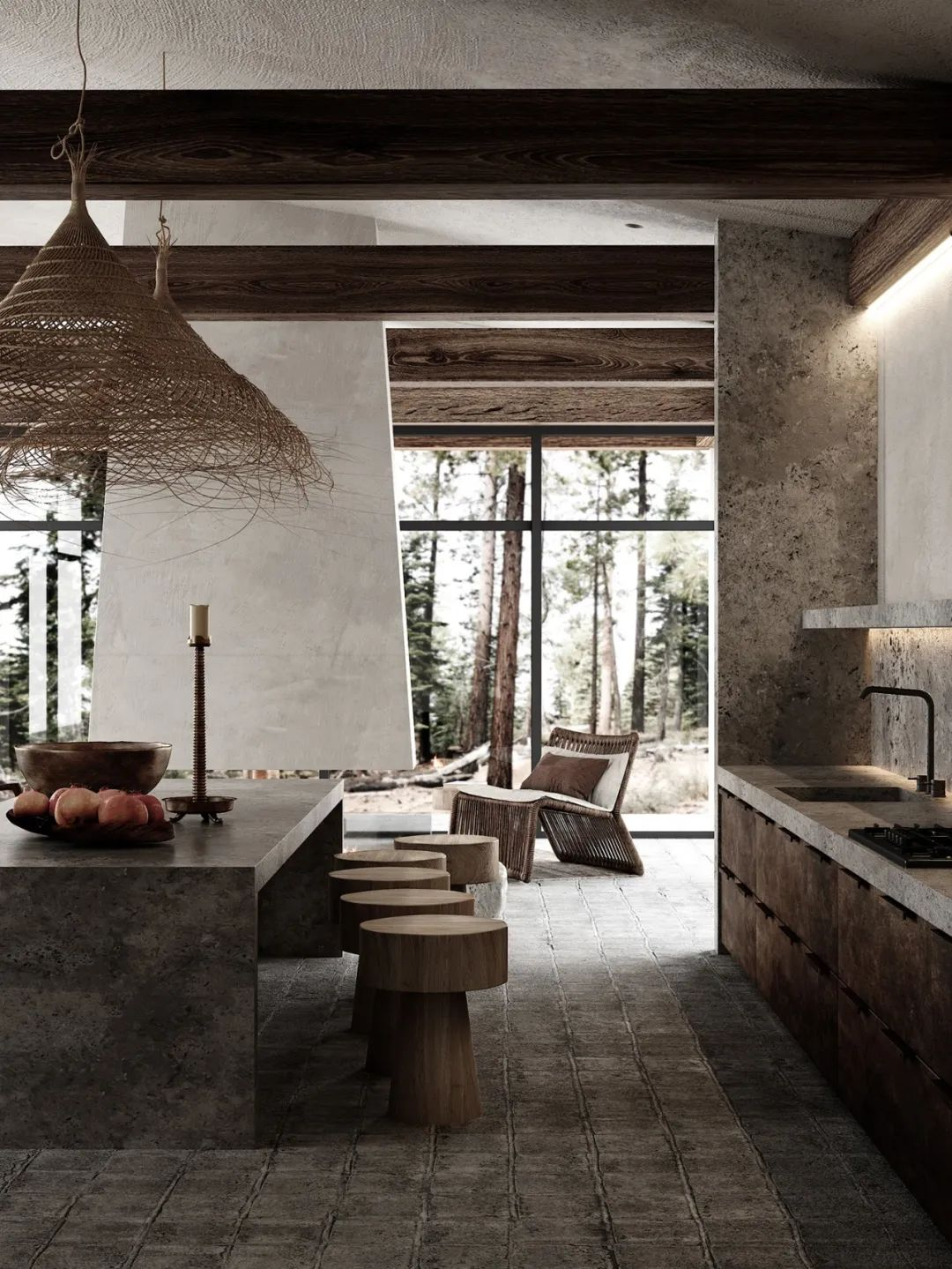
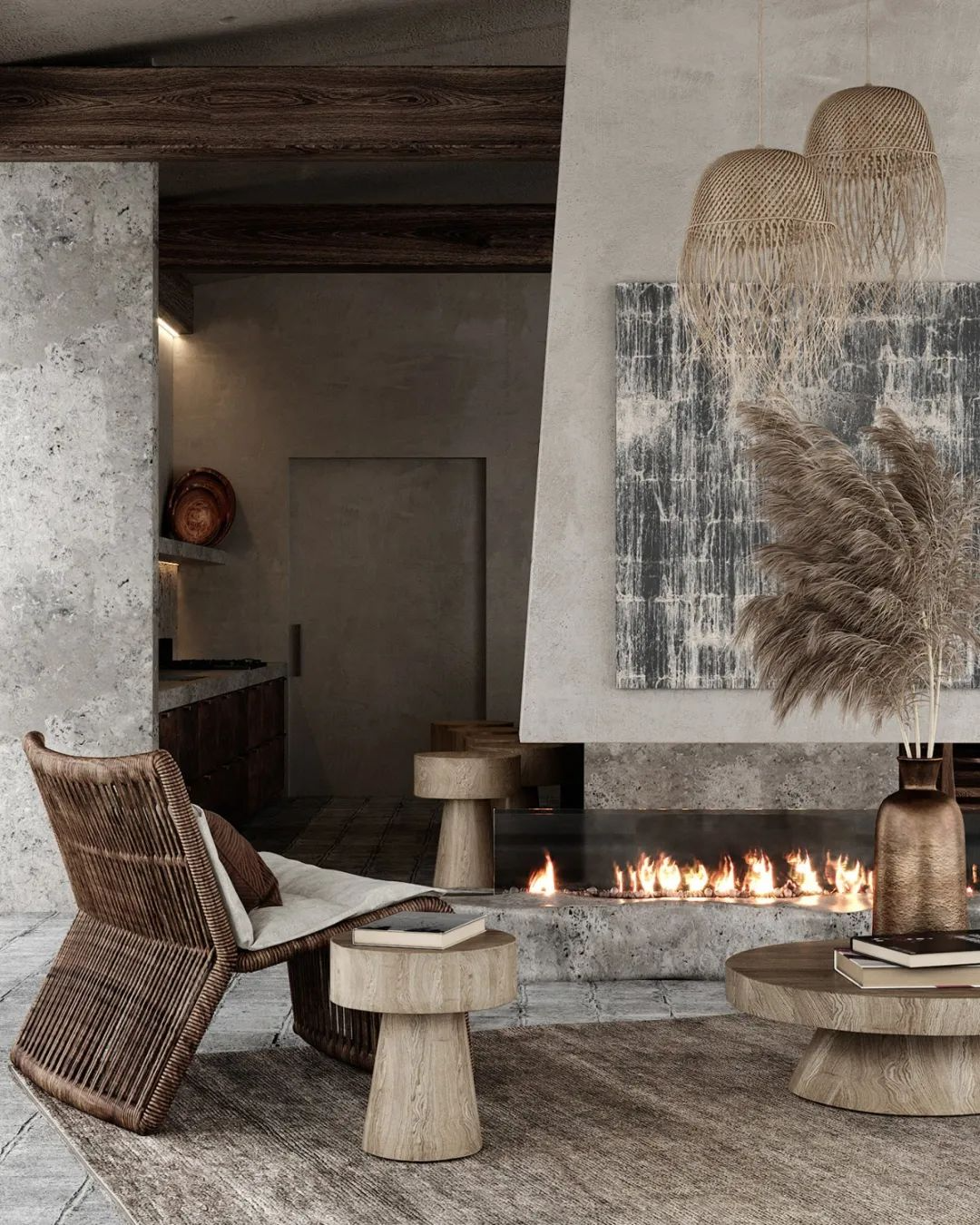
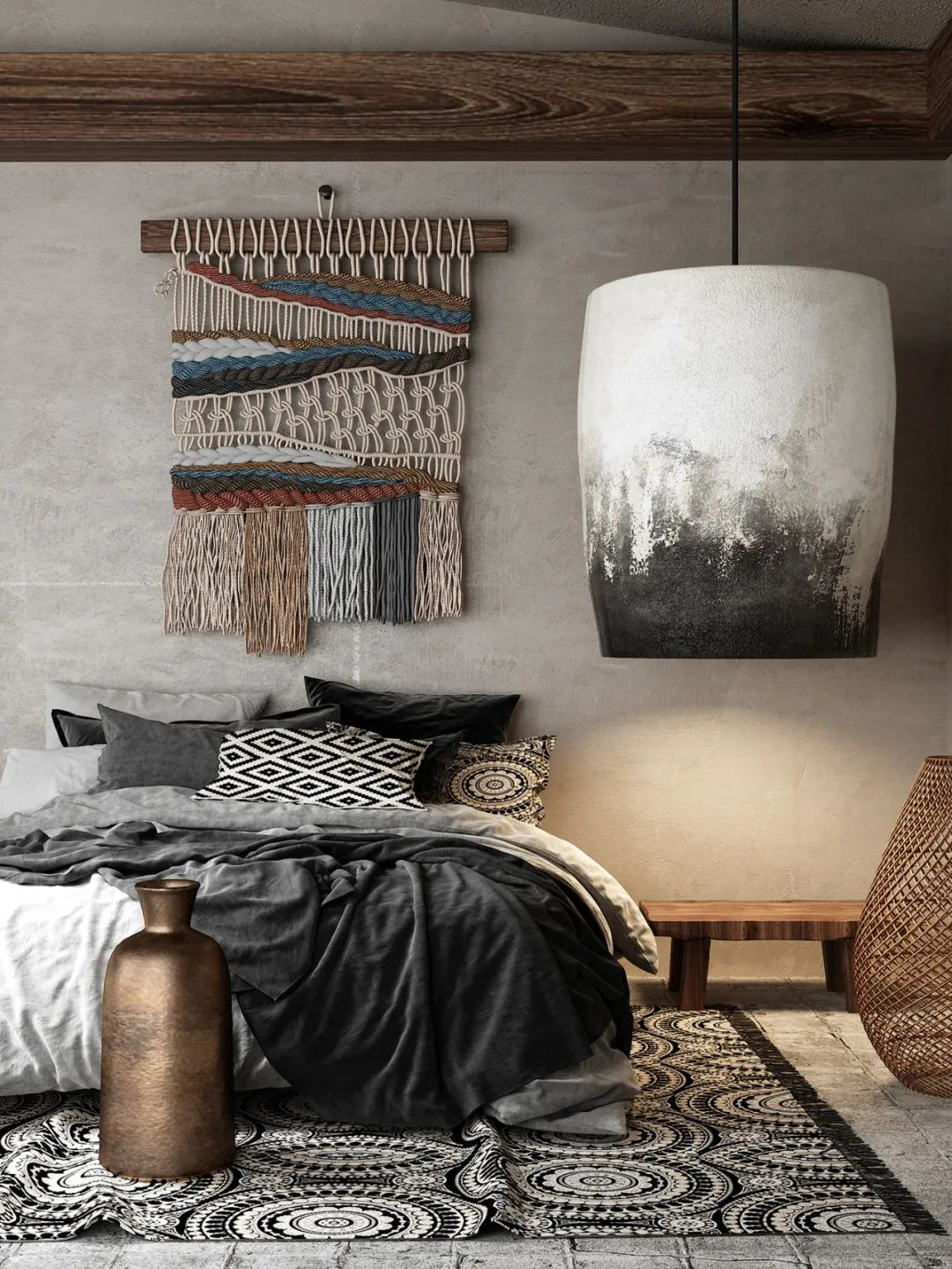
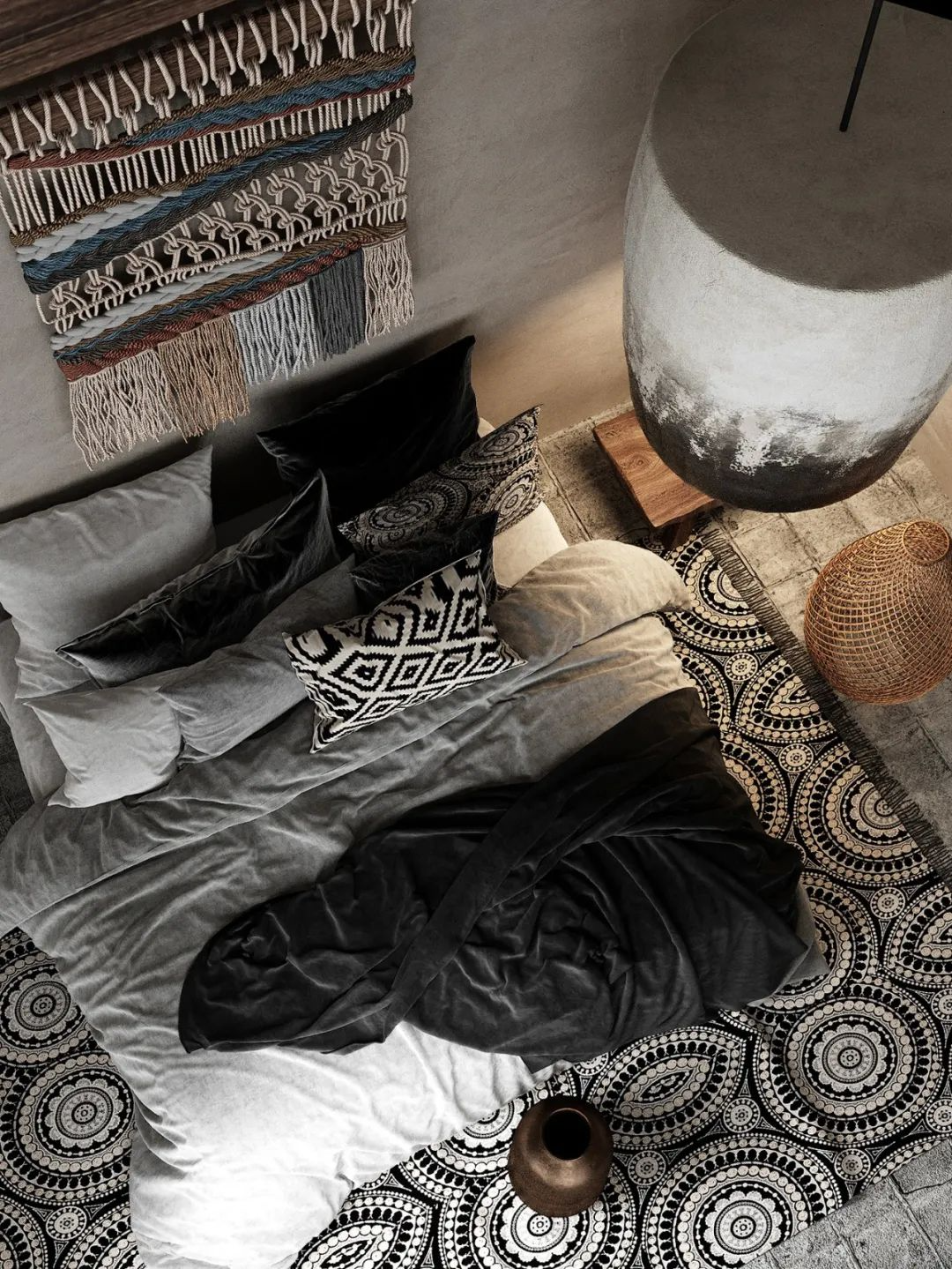
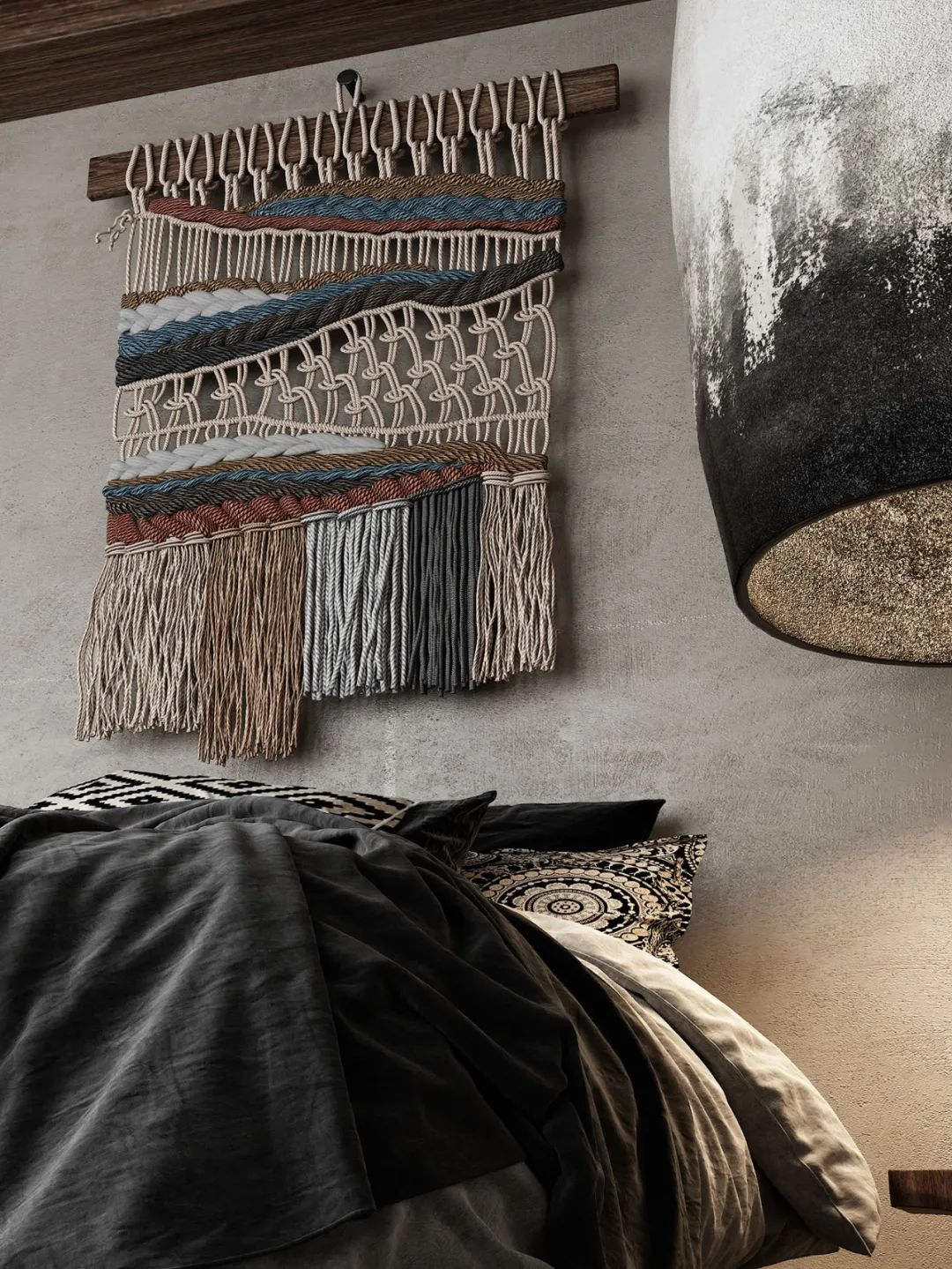
Hotel Alberta
Design: Yana Prydalna
The task of hotel design is to get as close to nature as possible and create an atmosphere with nature. Yana Prydalna likes this method to create interior design very much. The tables, chairs and even lamps in the restaurant exude a natural atmosphere in the form of weaving.
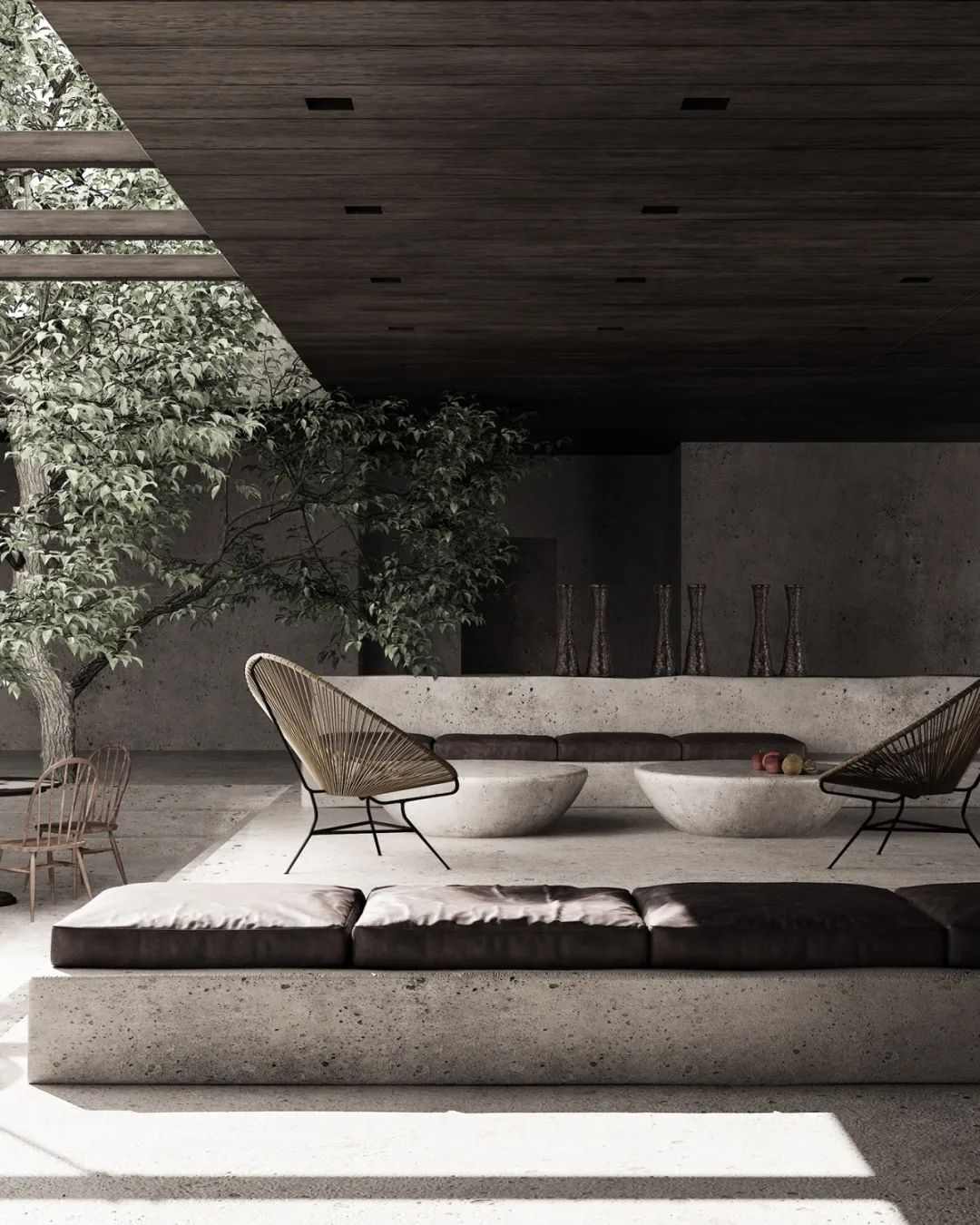

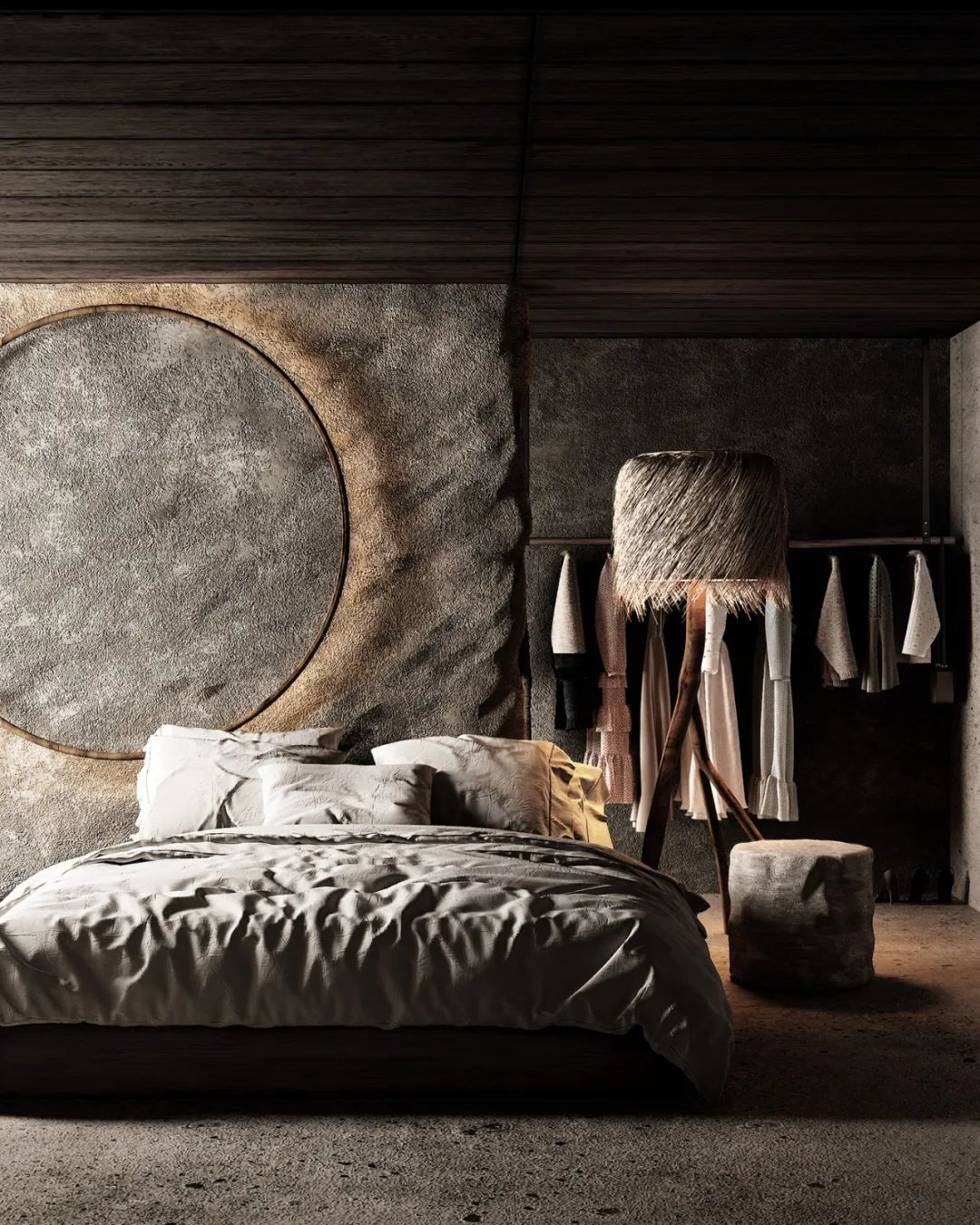

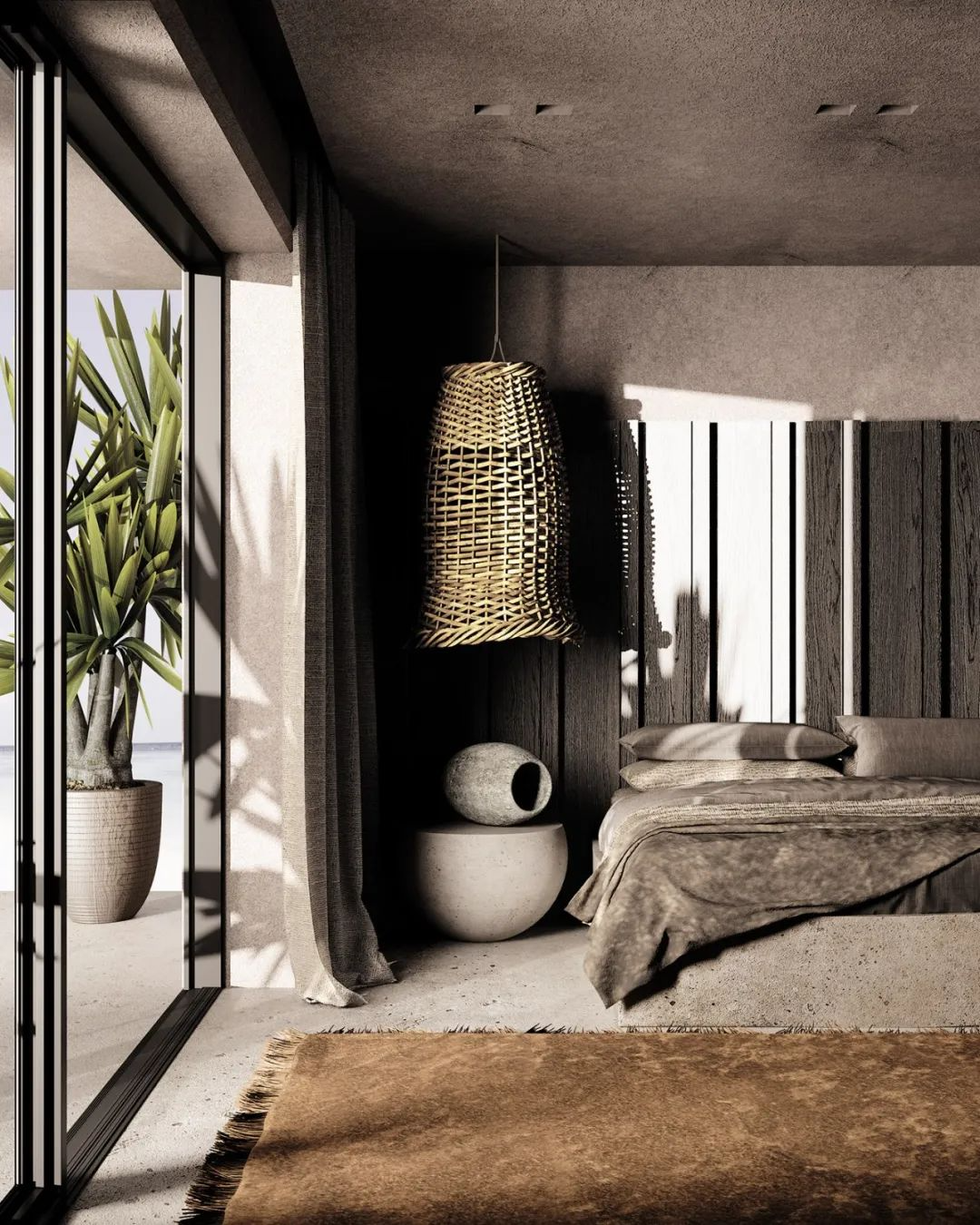

Rough Wabi Sabi
Design: Yana Prydalna
The walls are covered with natural clay, a common design of Wabi-Sabi style. Various furnishings that look shabby but are actually full of charm exude a different temperament. Natural old wood can be seen everywhere, which contrasts with the rough walls and floors in a very harmonious way.
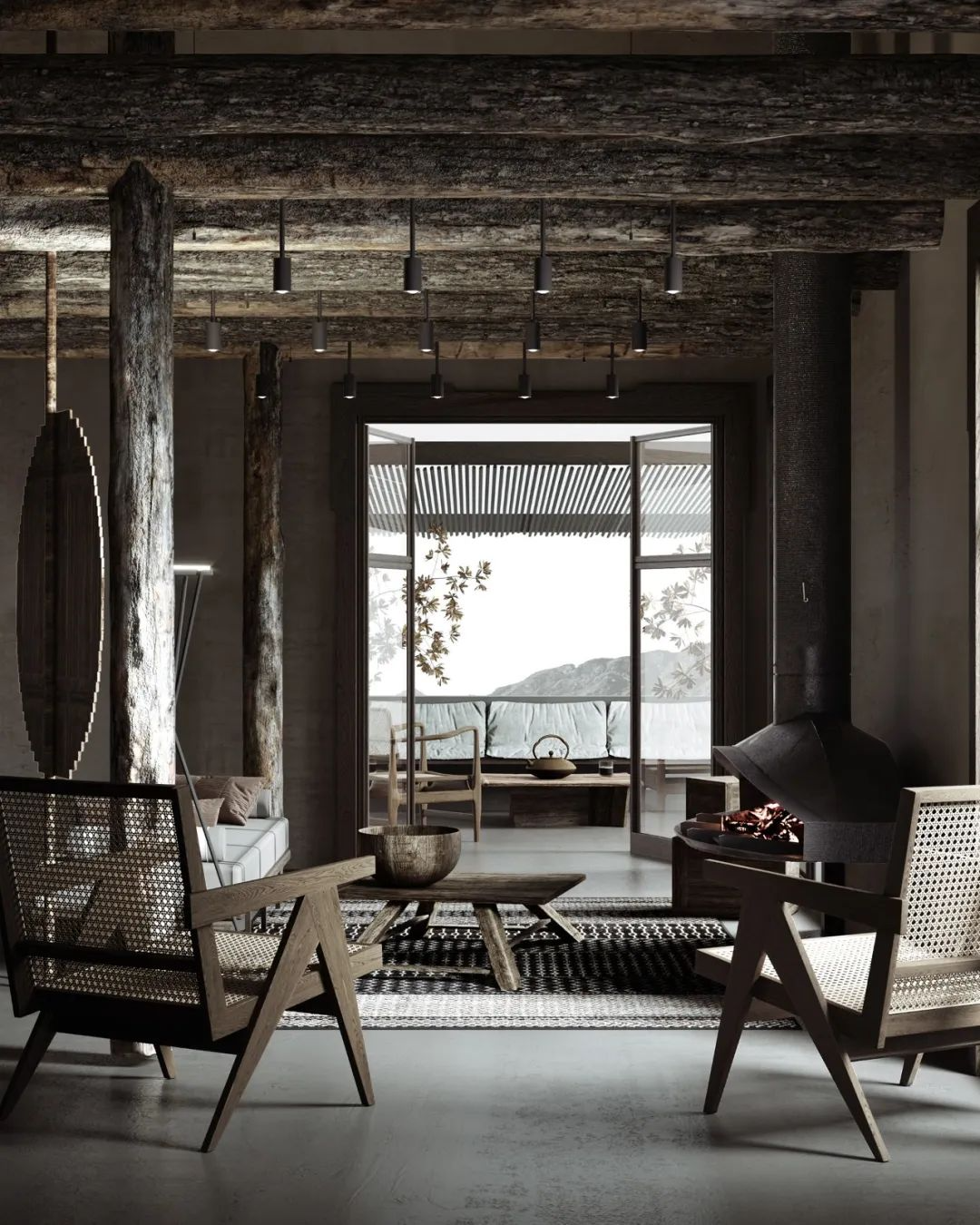
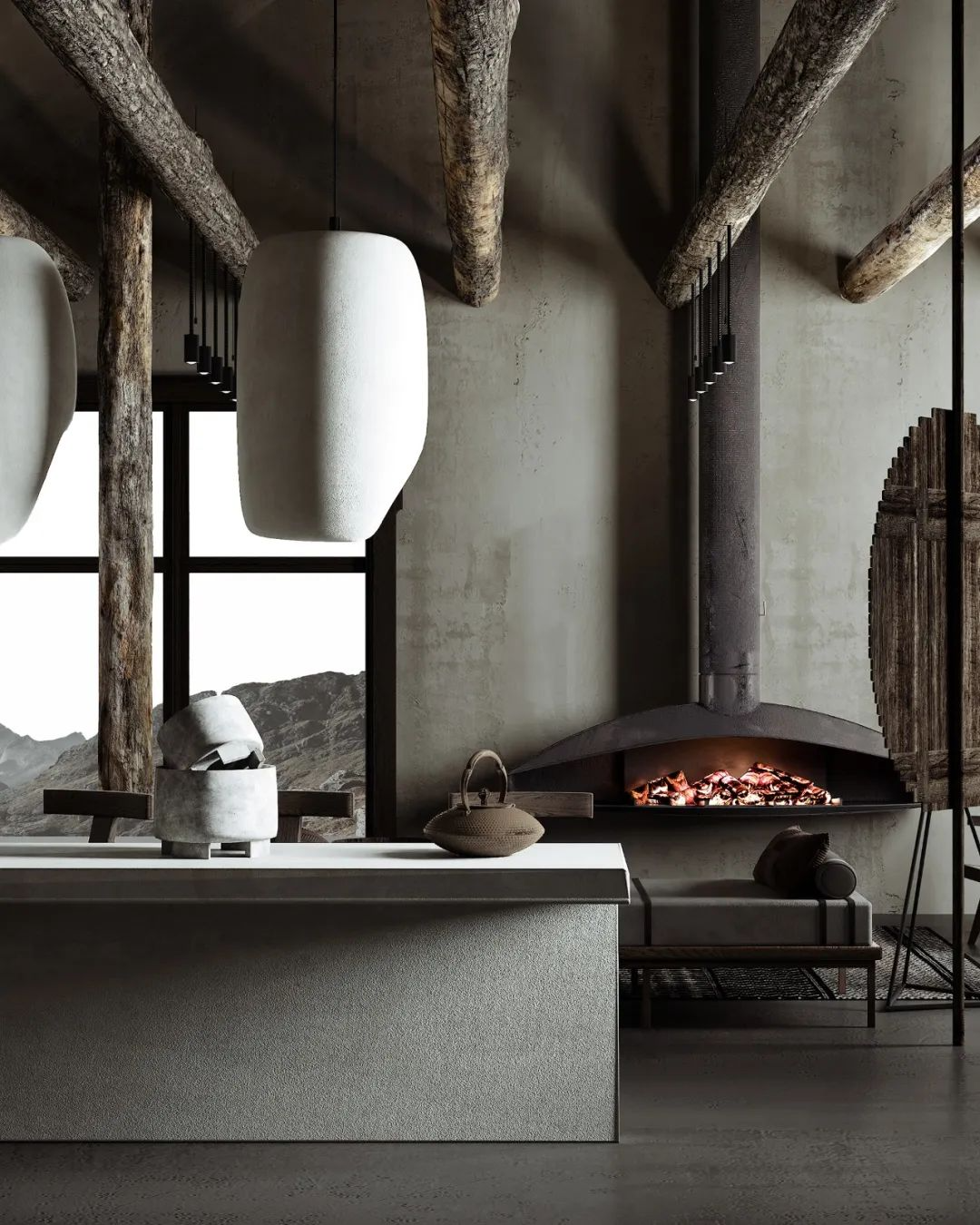
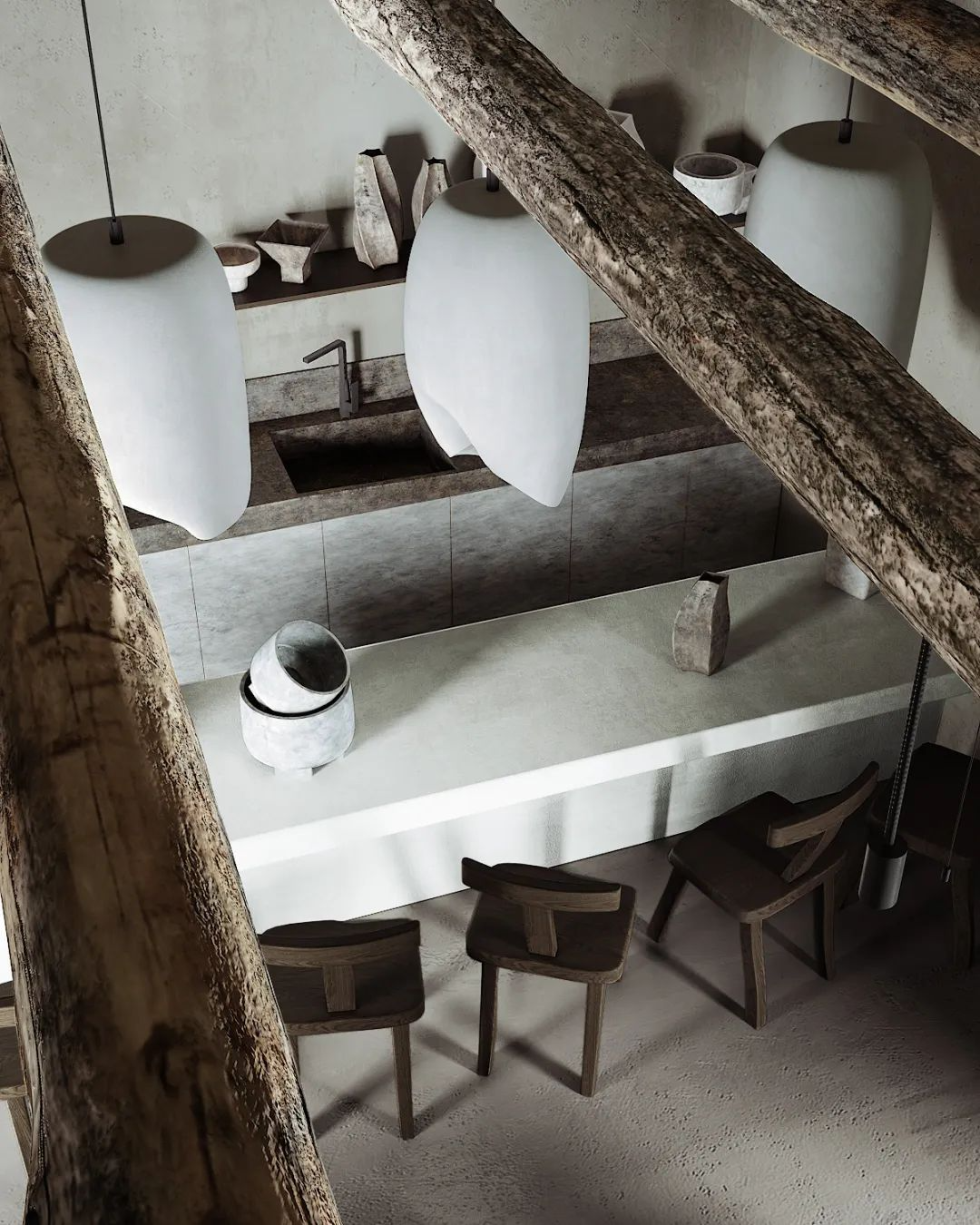
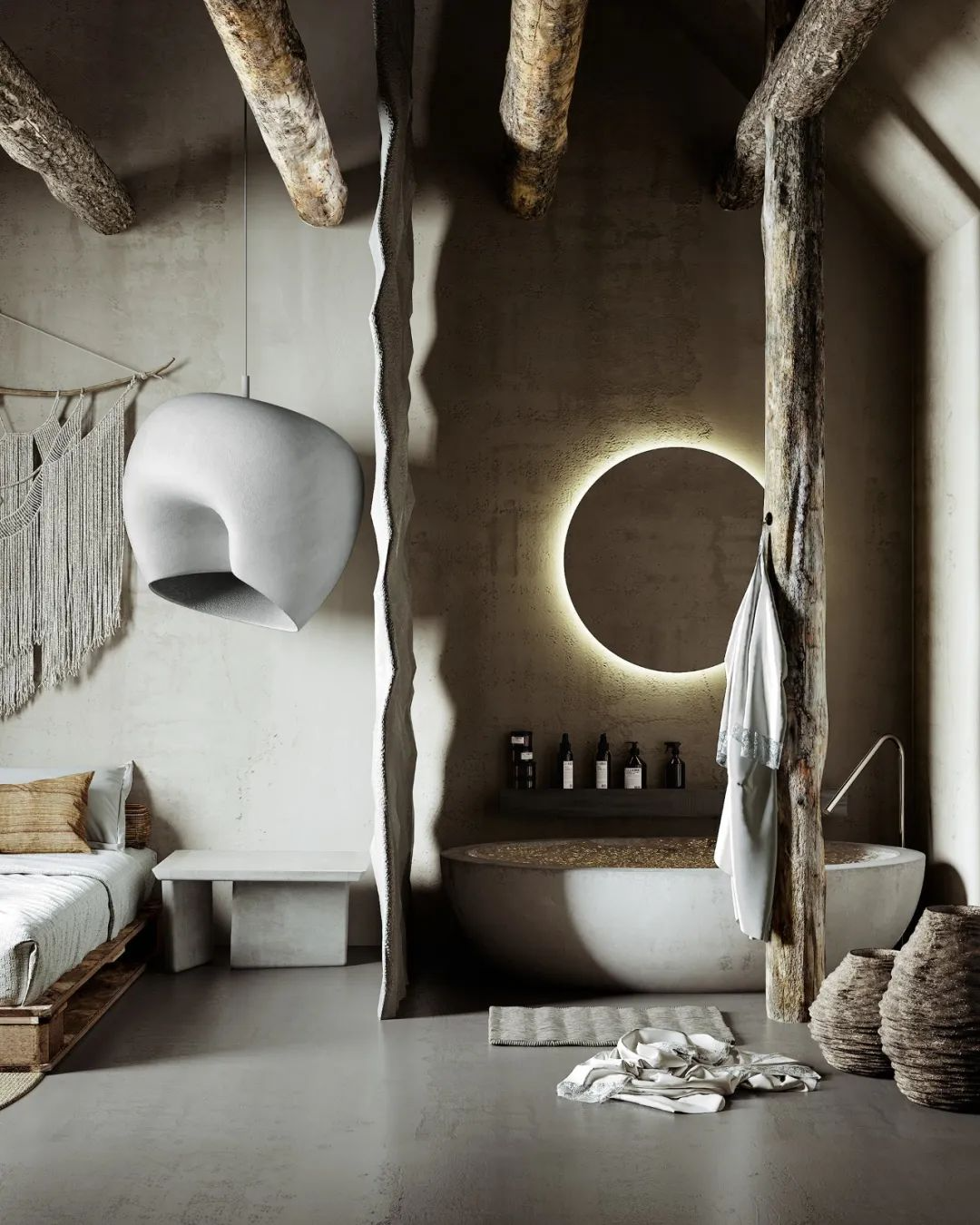
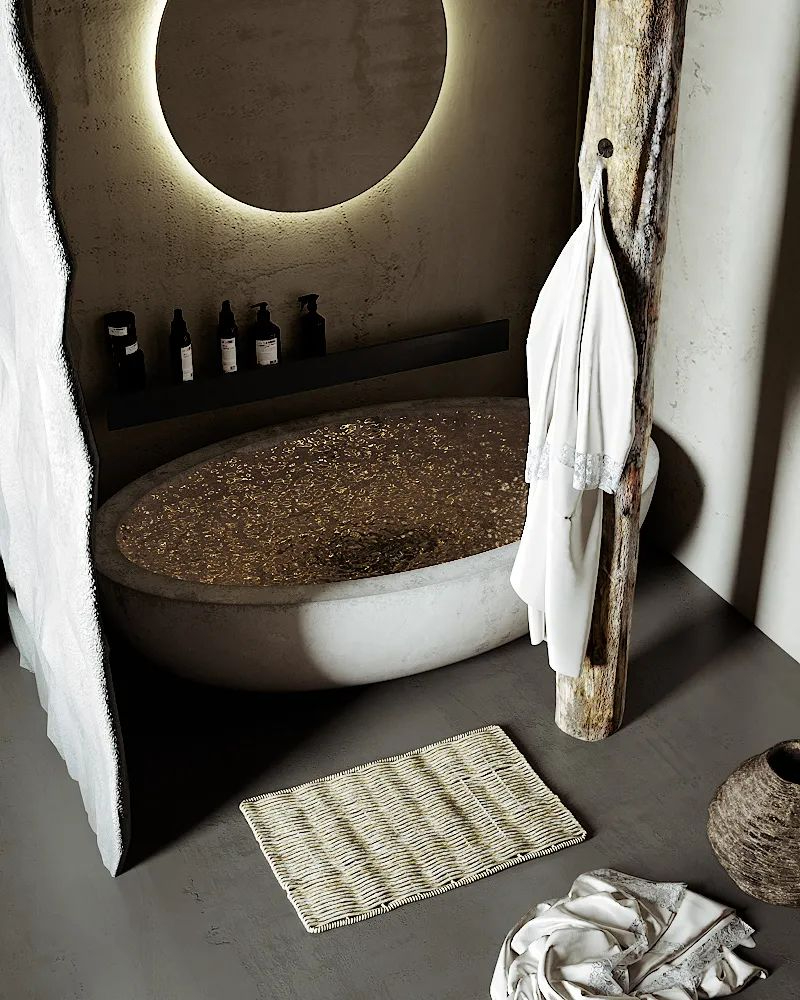
Imperfect Atmospheric House
Design: Yana Prydalna
This is a rural holiday apartment. Yana Prydalna is built entirely of natural materials. It is rough yet delicate and textured. Plants and artworks with ethnic characteristics are used to set off the atmosphere of the space. The open layout brings outdoor light into the interior, making it comfortable and elegant.
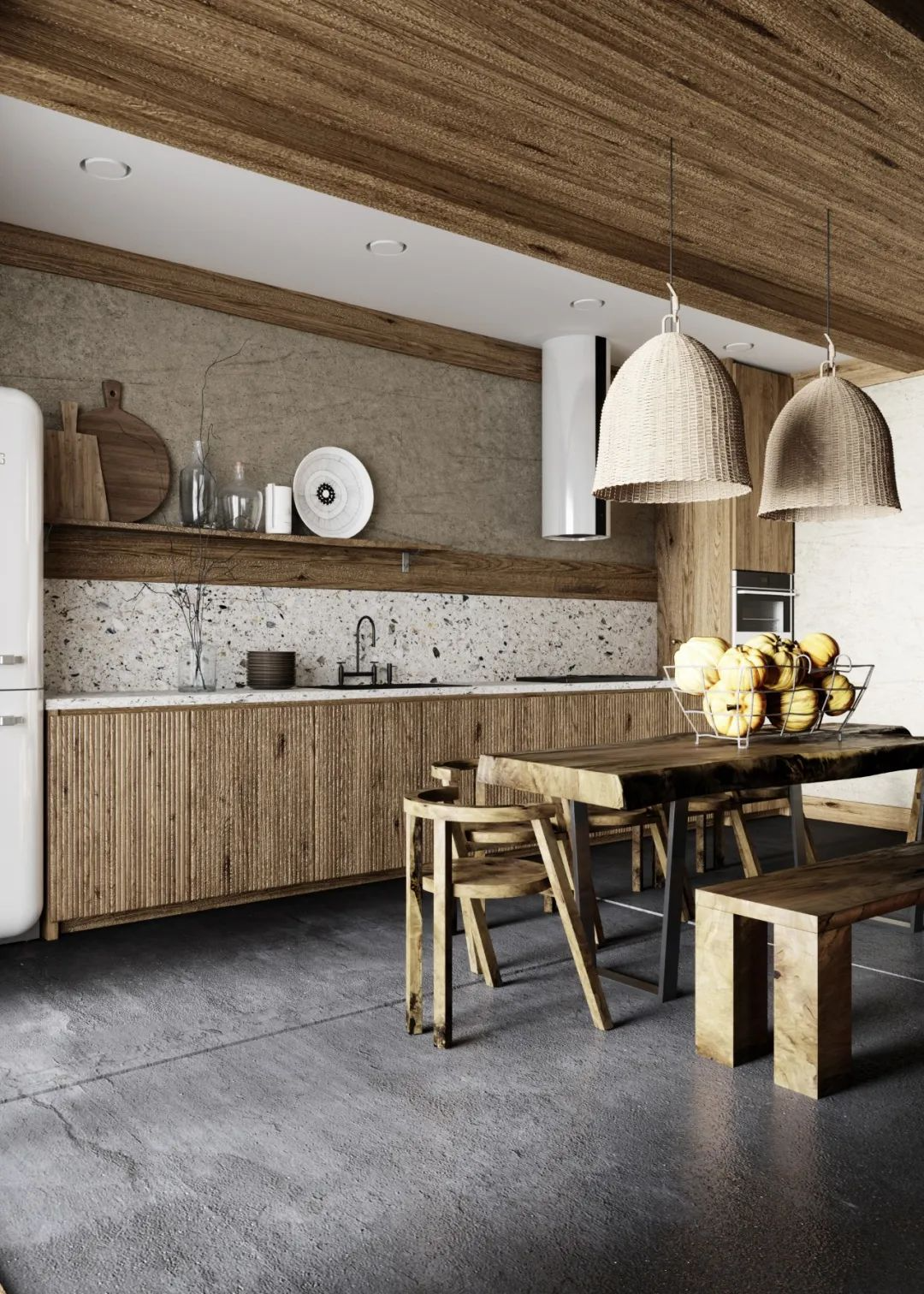
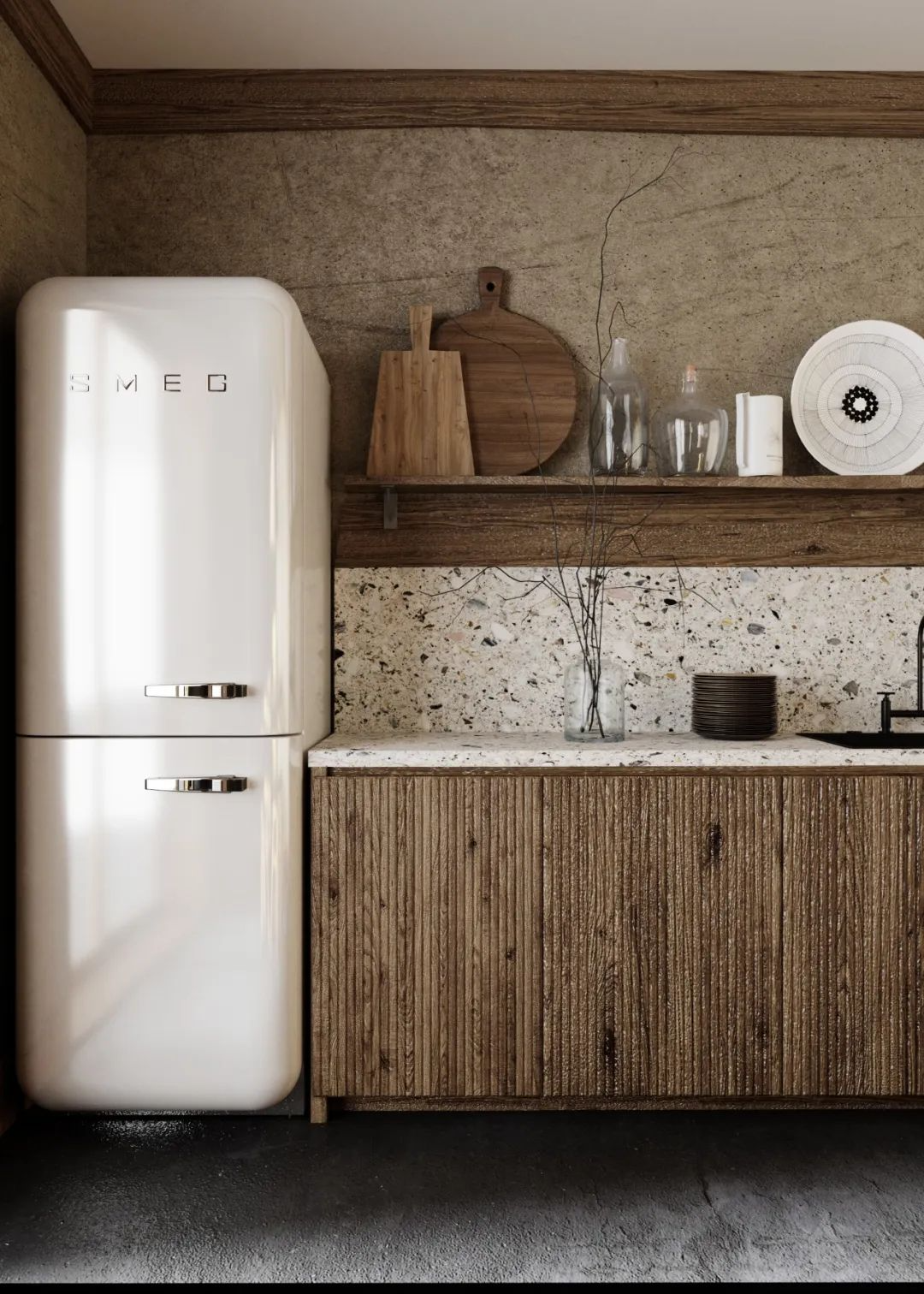
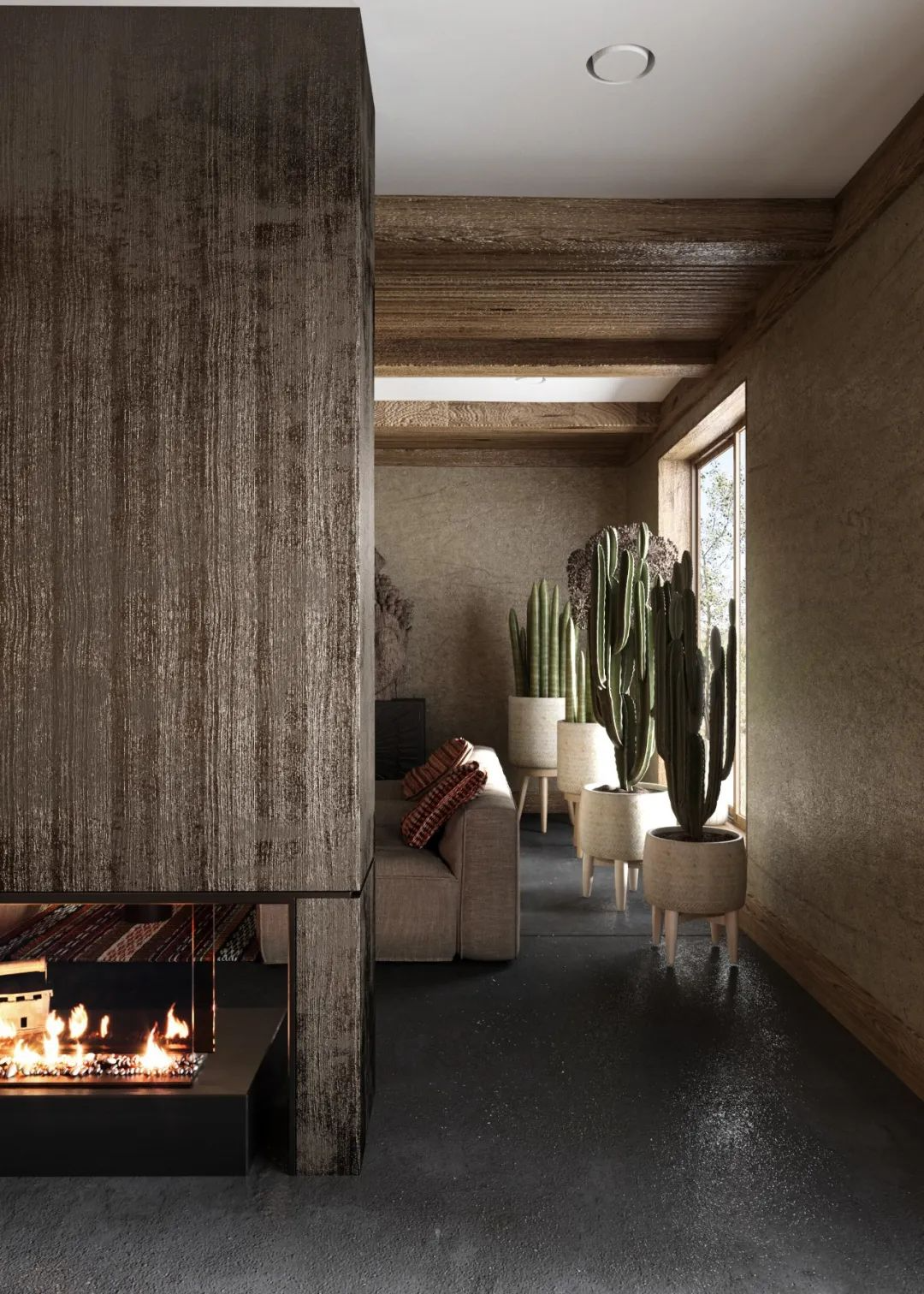
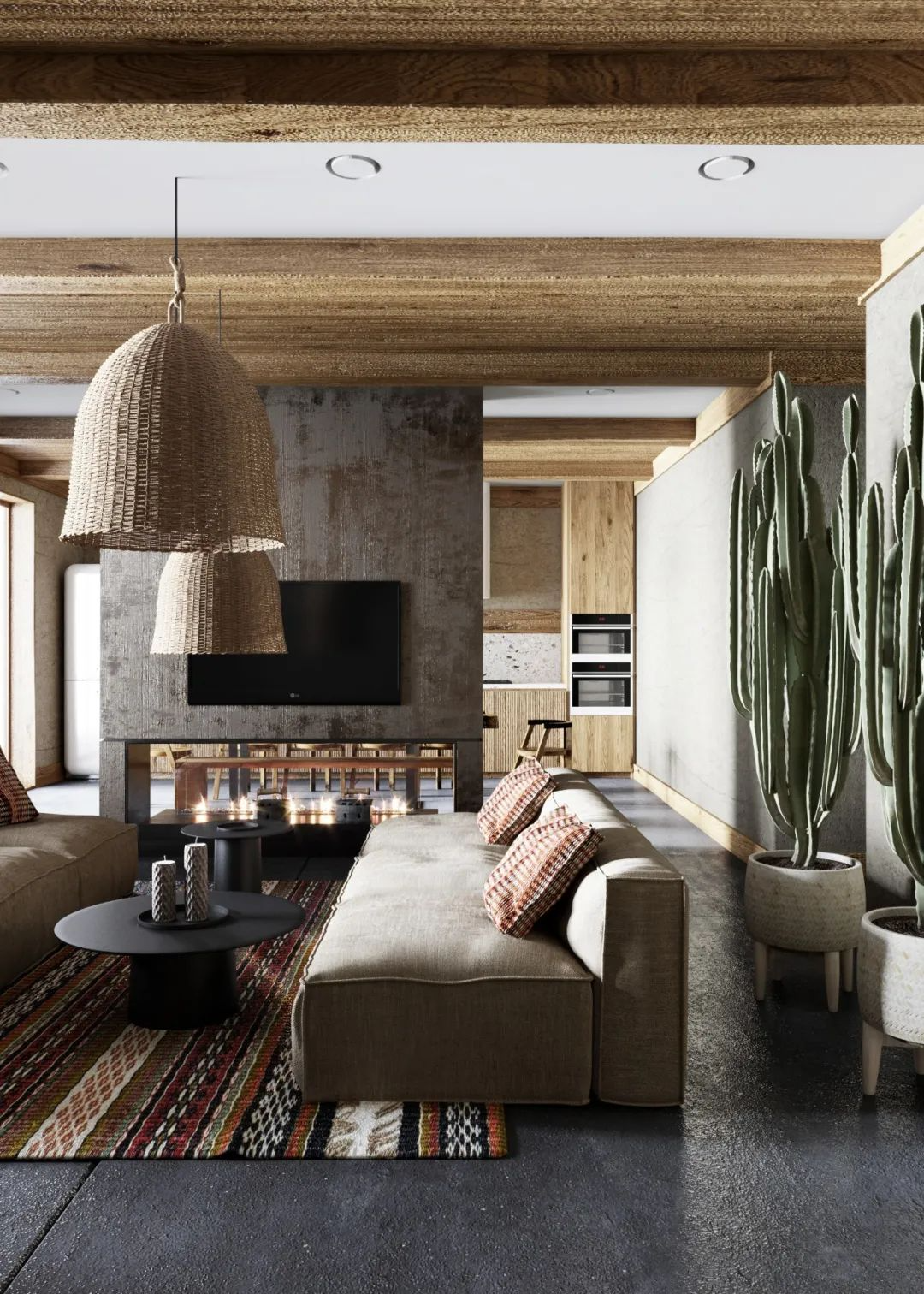
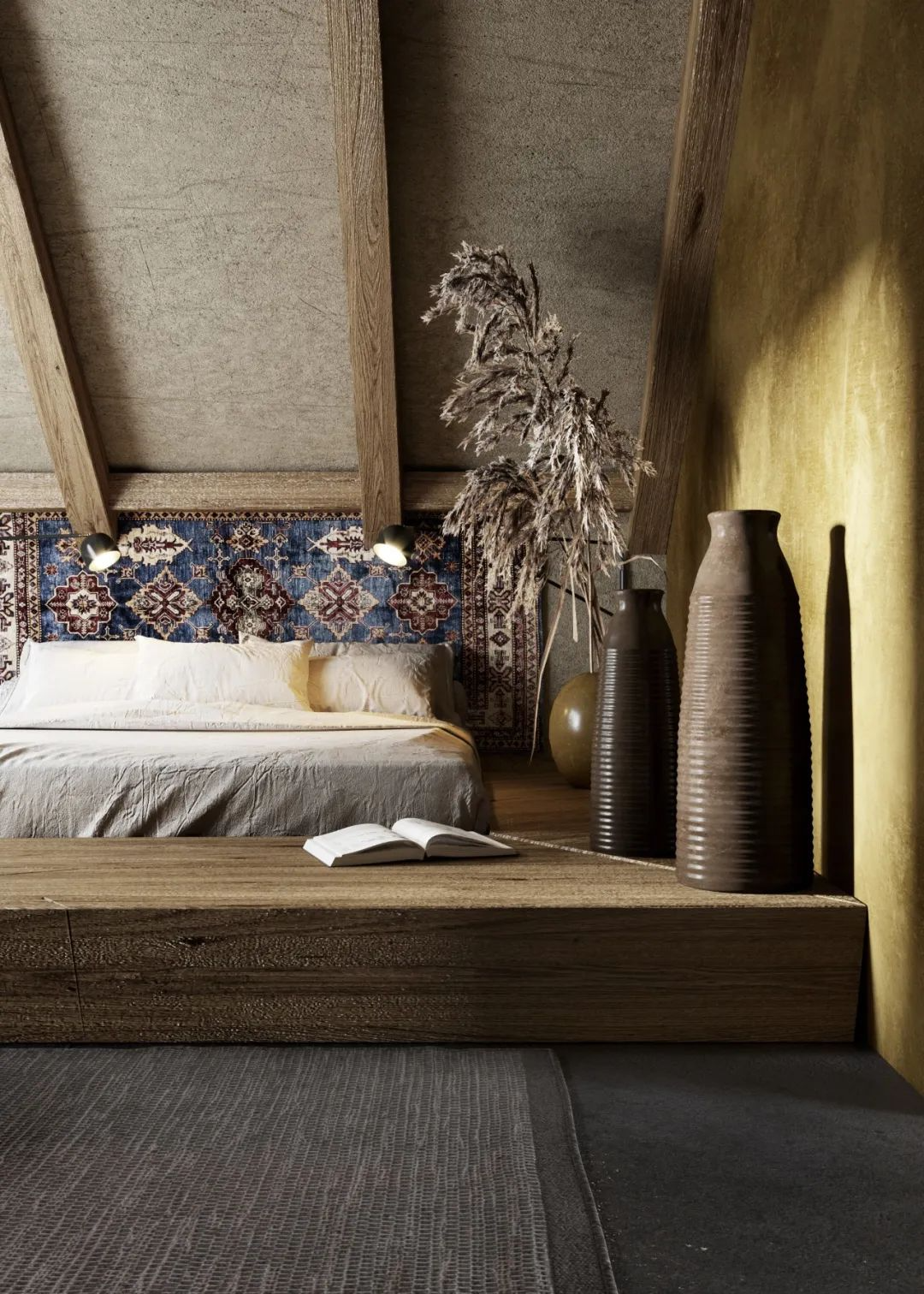
Golden Villa
Design: Yana Prydalna
The villa is located in San Francisco, California. The space design has natural tones. The designer created a unique style of wabi-sabi aesthetics by combining oriental minimalism with western aesthetic design elements.
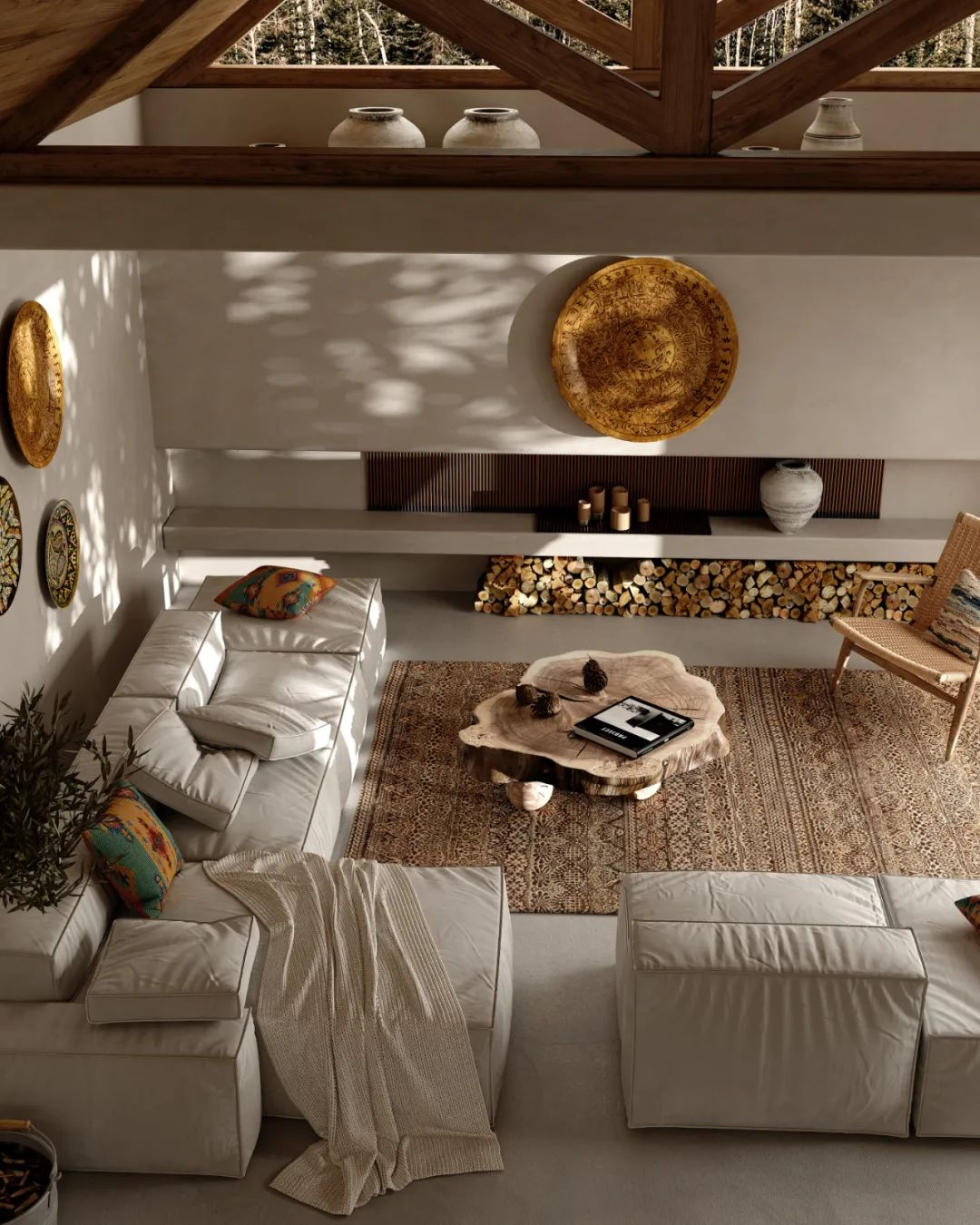
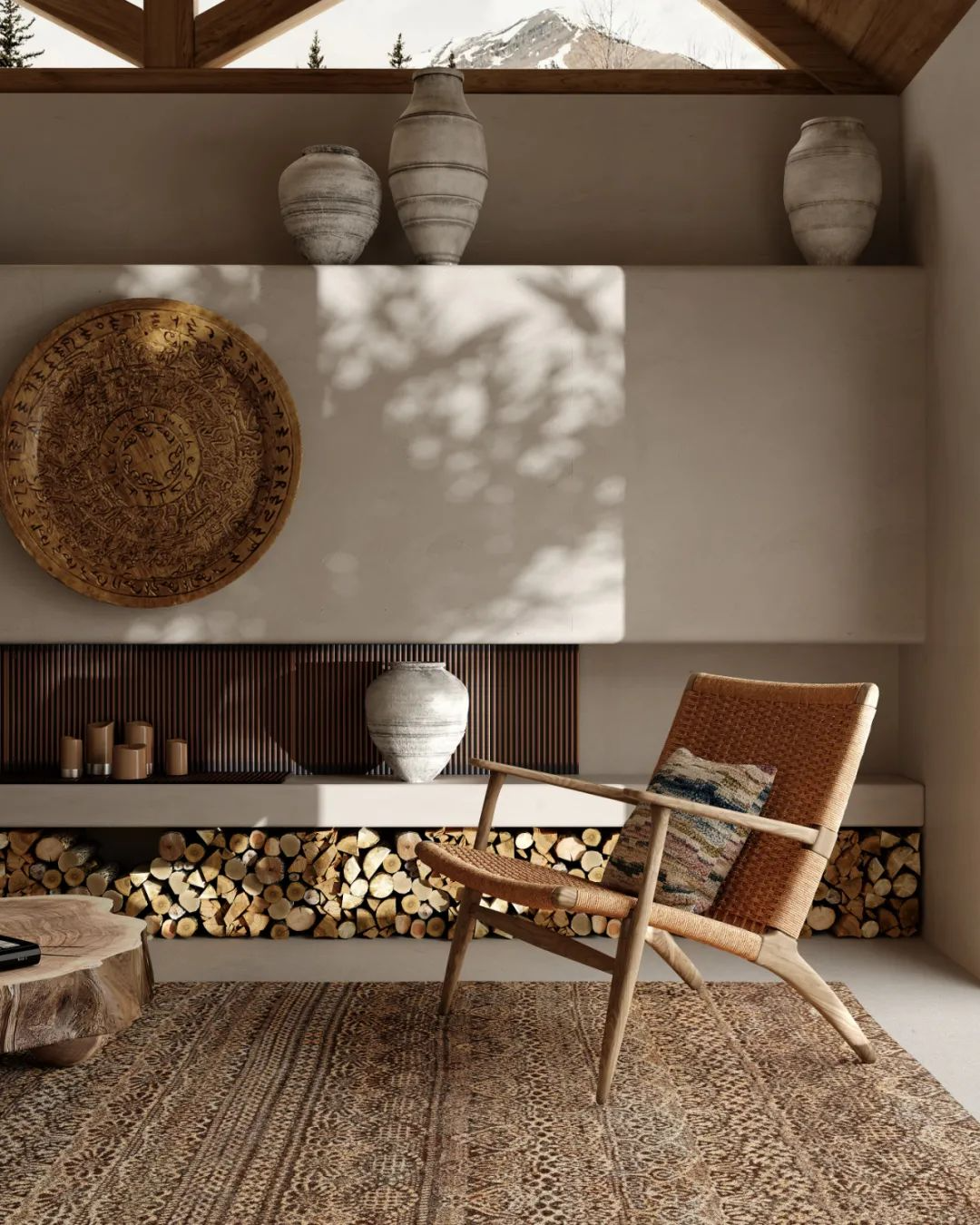
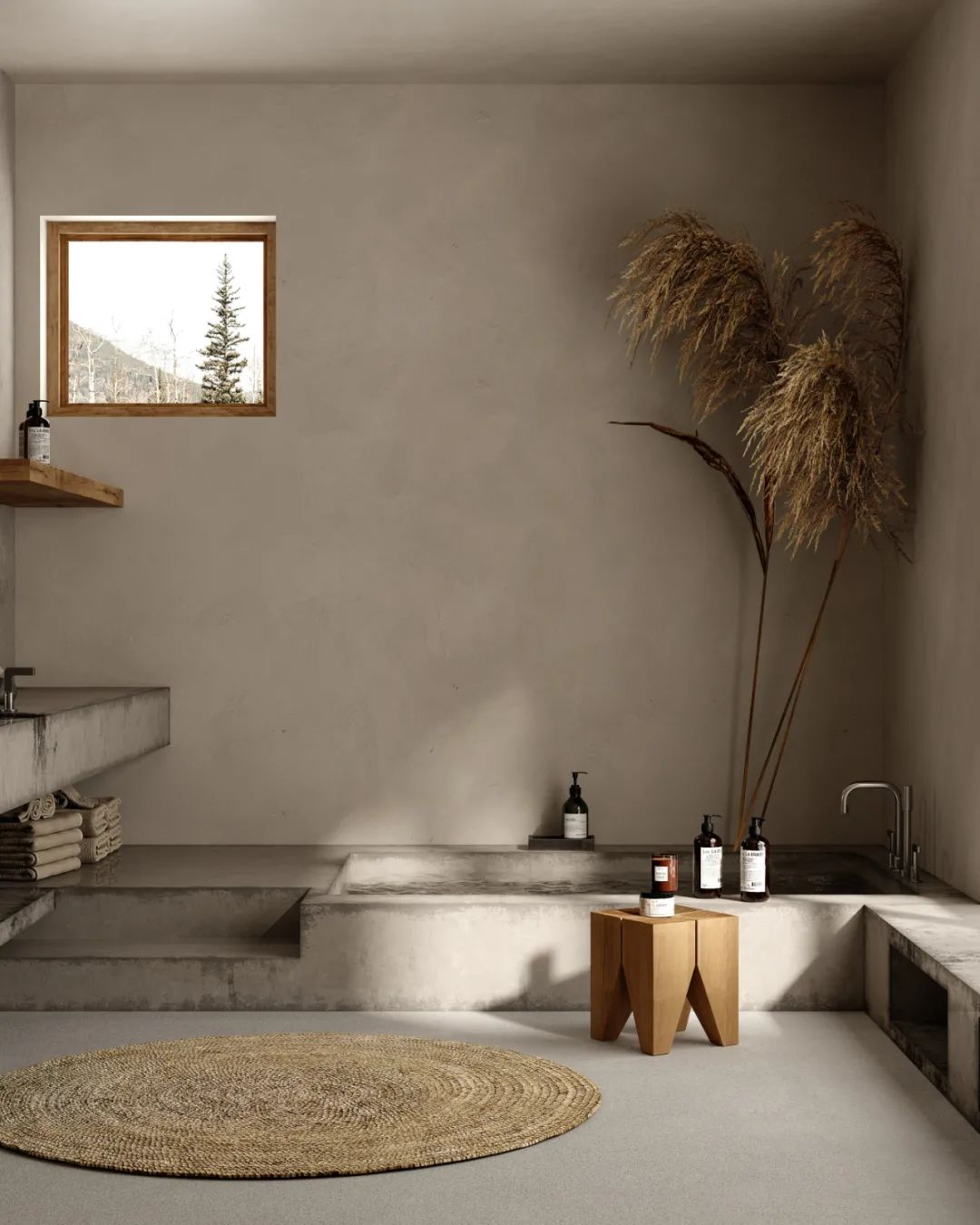
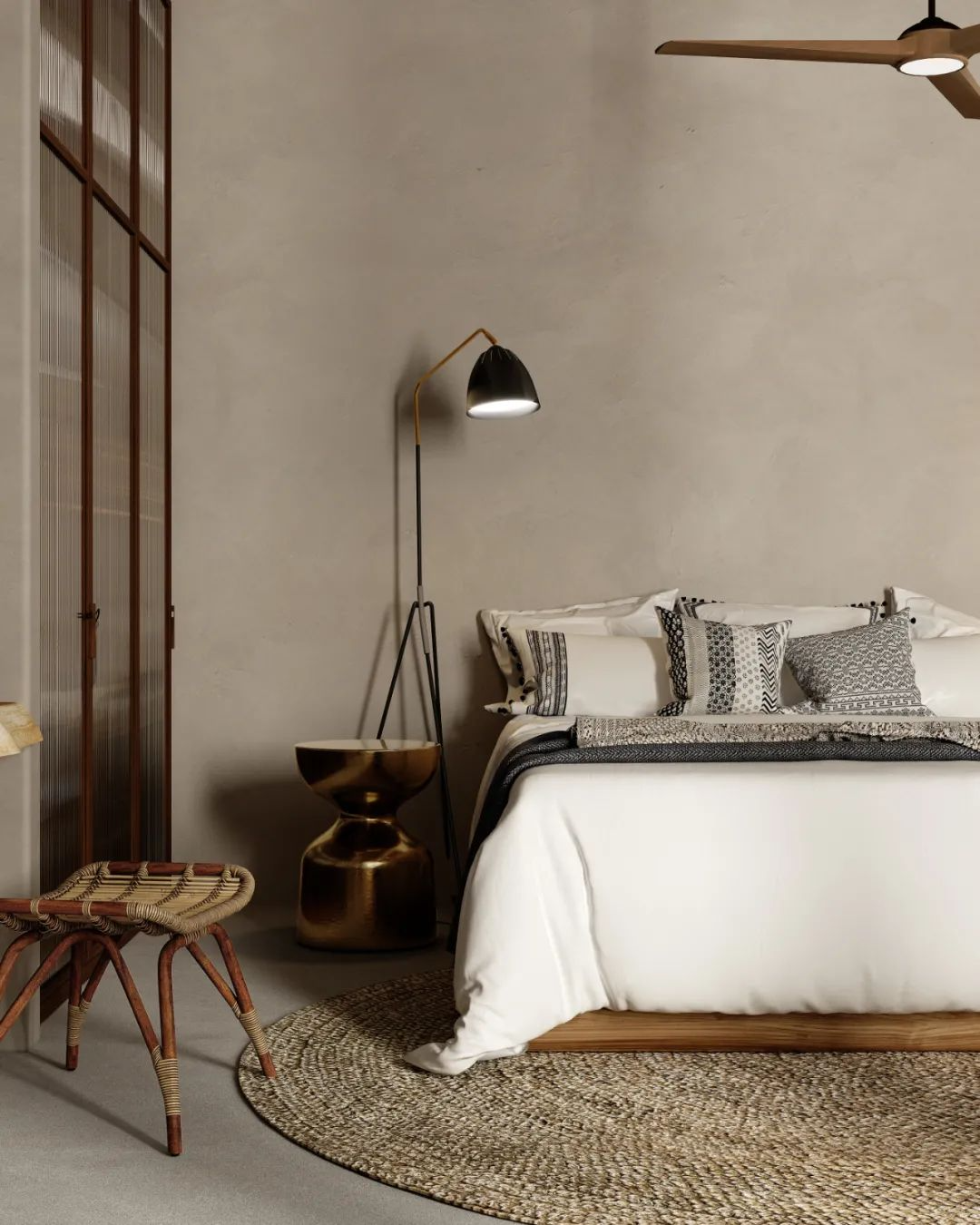
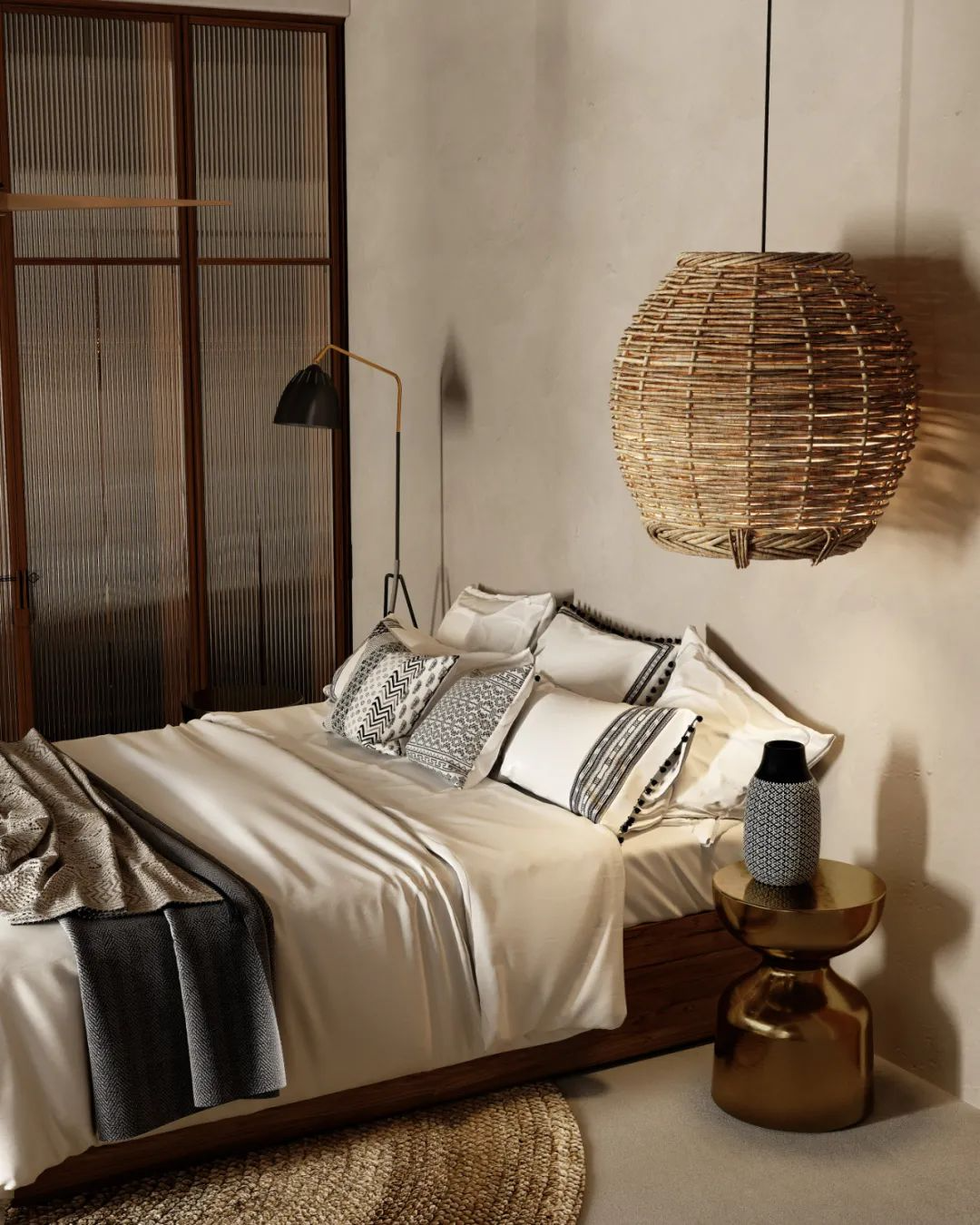
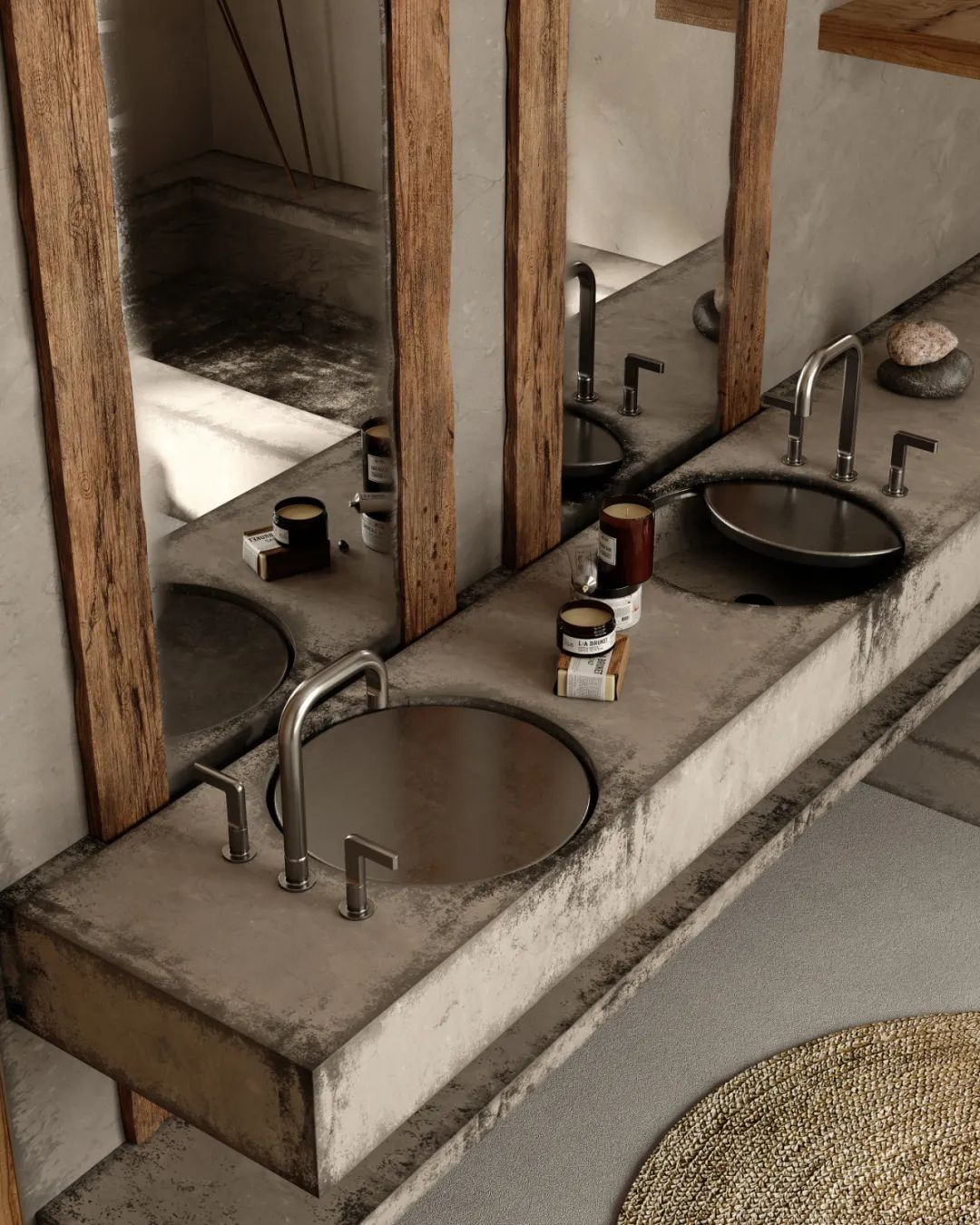
Cook House Kos
Interior Design: Annabell Kutucu & Michael Schickinger
Casa Cook Kos Bed and Breakfast is located on the Greek island of Kos. The designer created this boutique B&B with wabi-sabi aesthetics based on the concept of traditional Greek nomadic lifestyle. The clean lines contrast sharply with the rough, natural textures, showing a beauty full of time and modernity in the combination of exquisiteness and roughness.
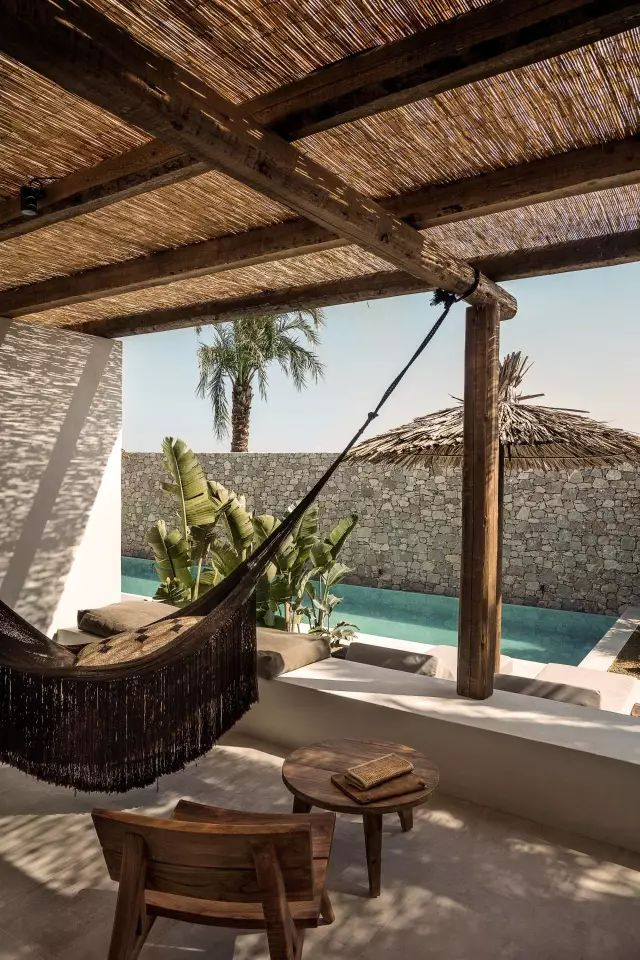
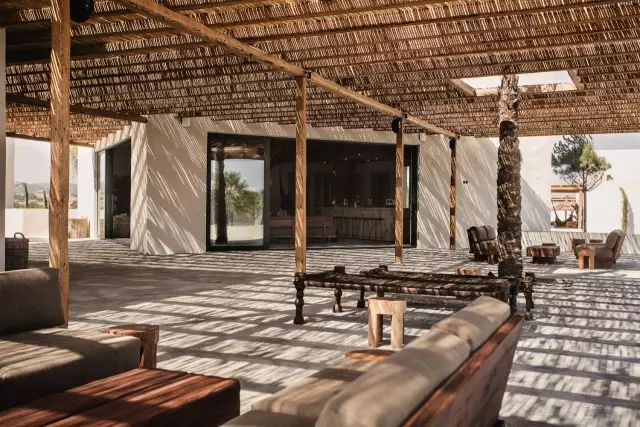
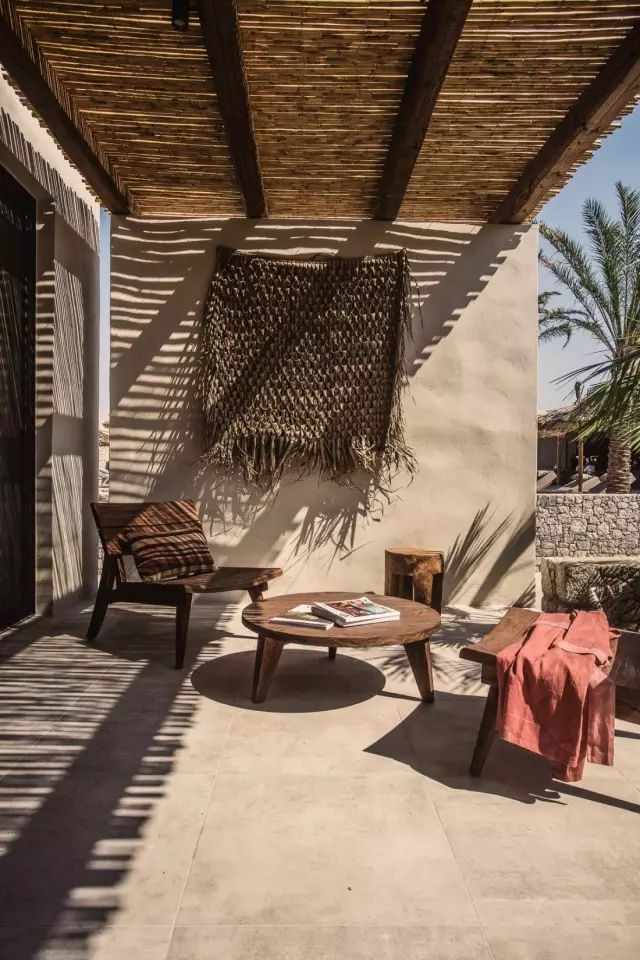
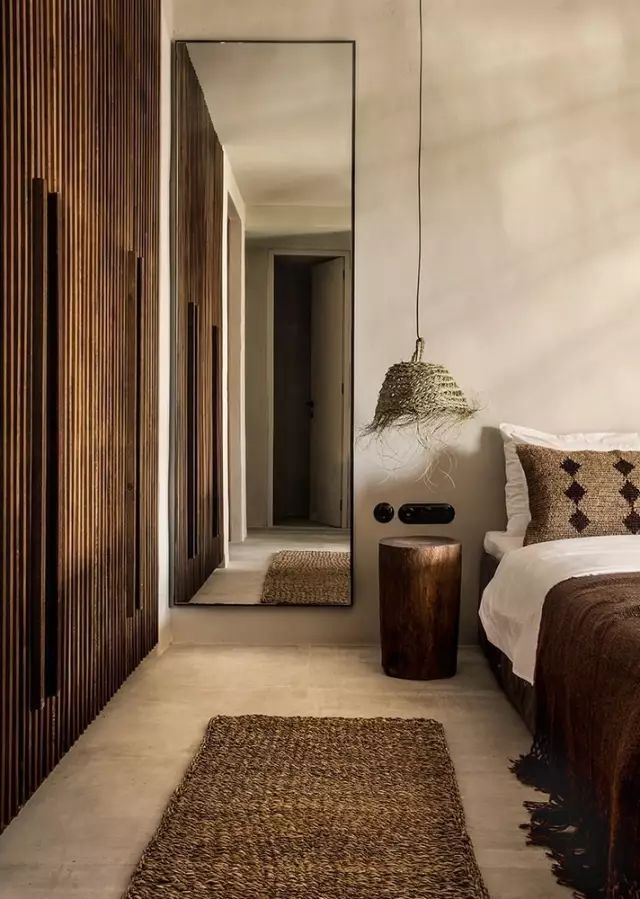
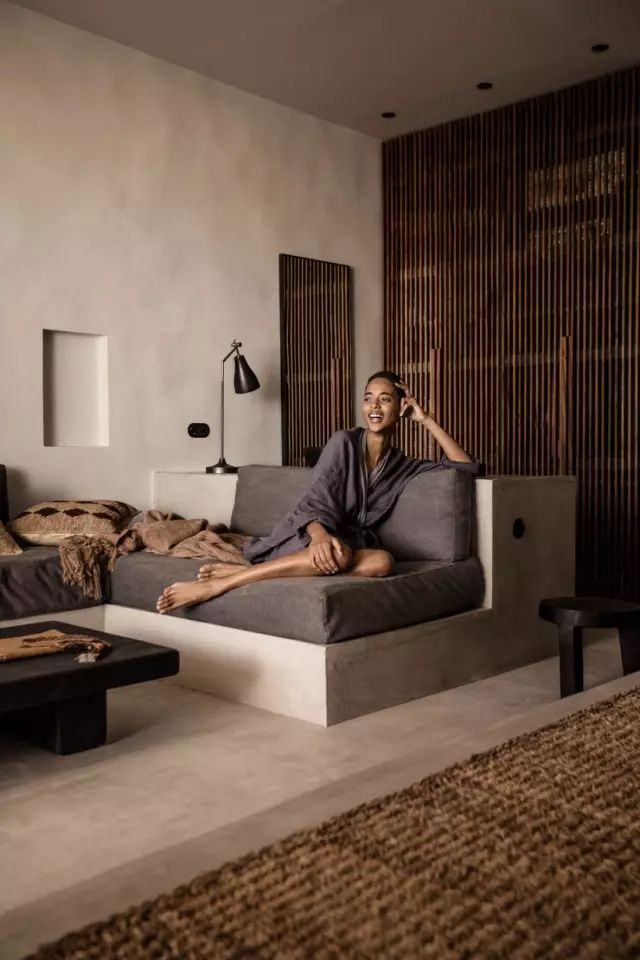
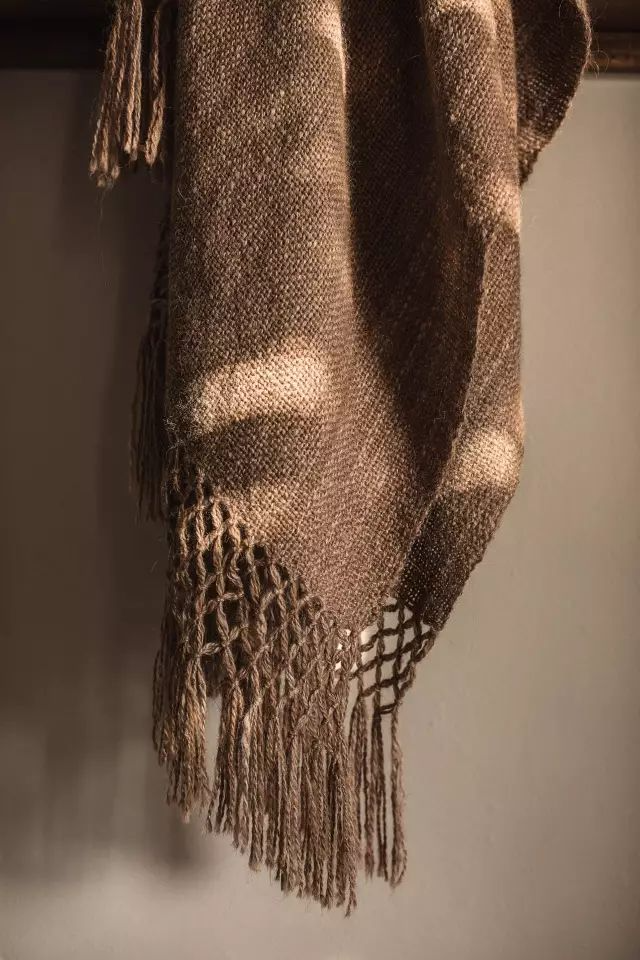
COOK House Gouna
Design: Fat Tony
The mottled cement wall in the bedroom presents an oriental aesthetic of wabi-sabi. The cement is matched with rattan carpets, making the whole space full of the original breath of nature. The simple lines of the living room echo the green plants of the tropical jungle outside the house, which is comfortable and simple.

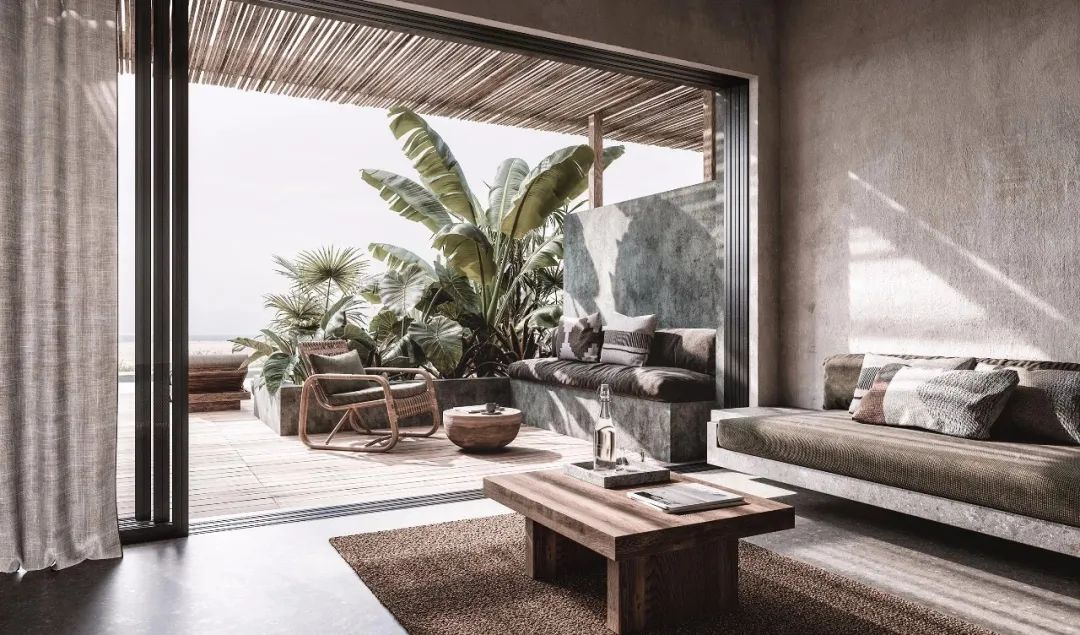
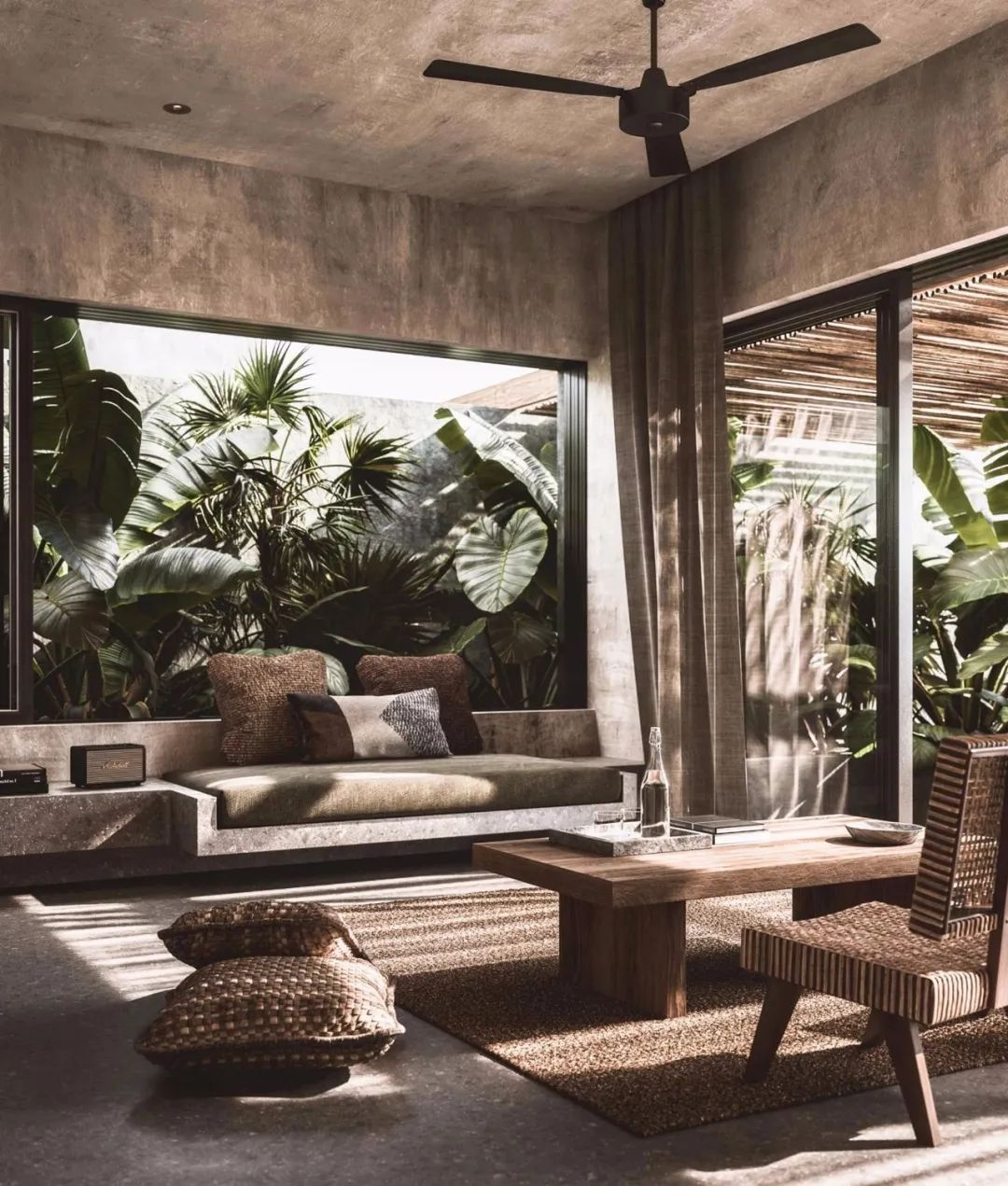

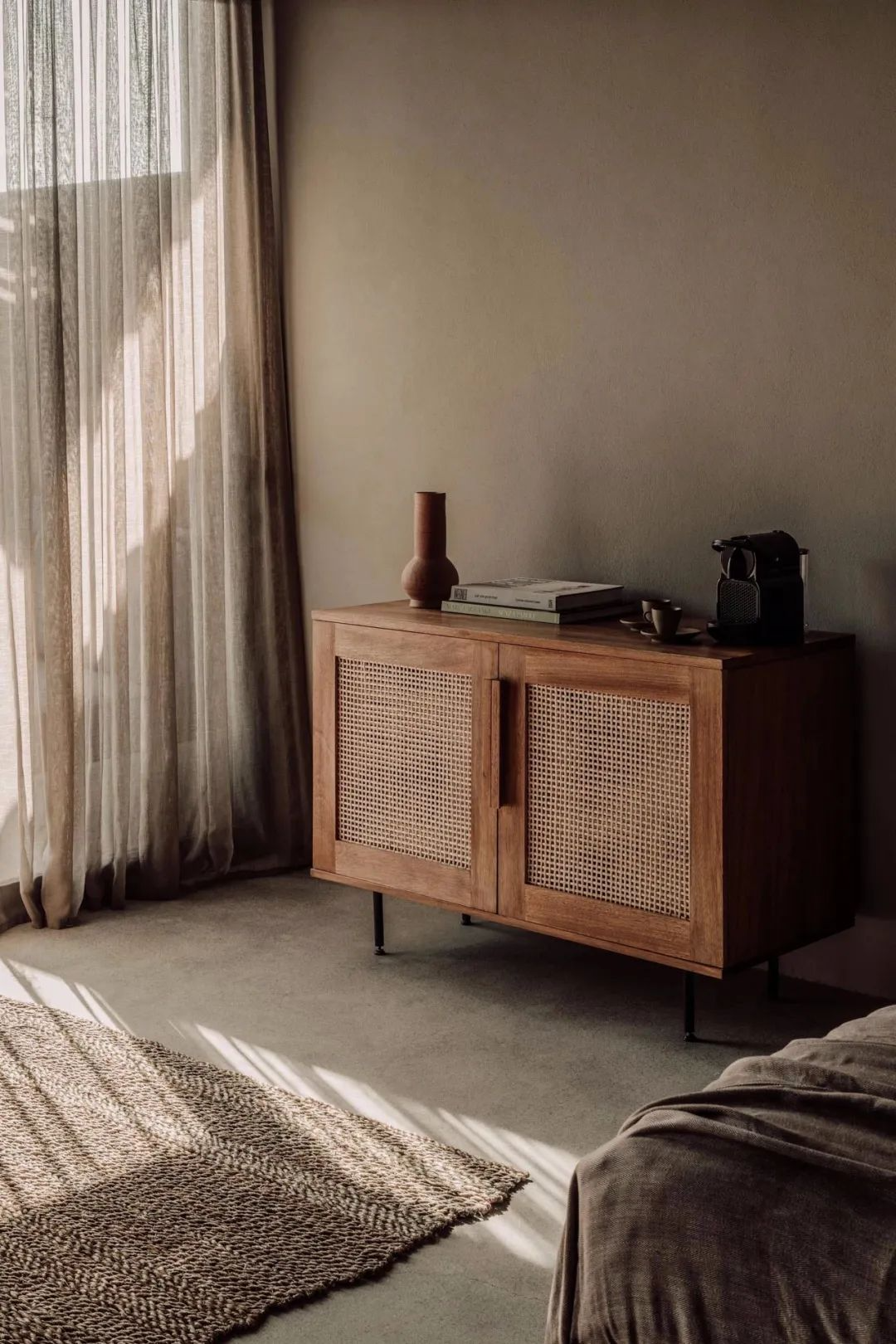
CASA COOK RHODES
Design: Annabell Kutucu
The unique unruly and wandering atmosphere of Bohemia has become the most important romantic image in the design of this space. Natural materials and earth tones create a harmonious sense of comfort. The soft texture of handmade objects also adds a warm and comfortable atmosphere to the space. Such a space also makes people unconsciously slow down their pace and blend into the embrace of nature.
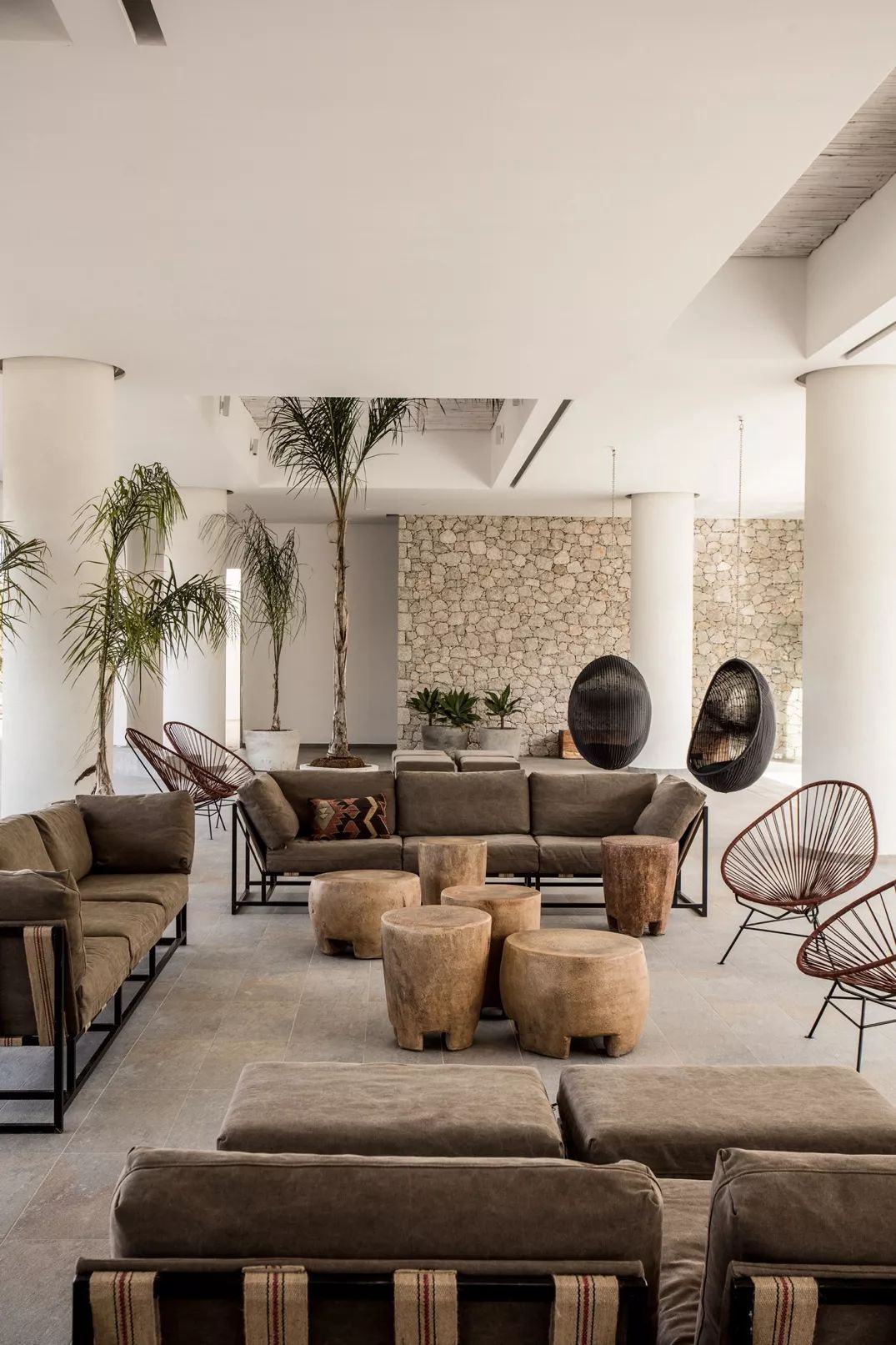
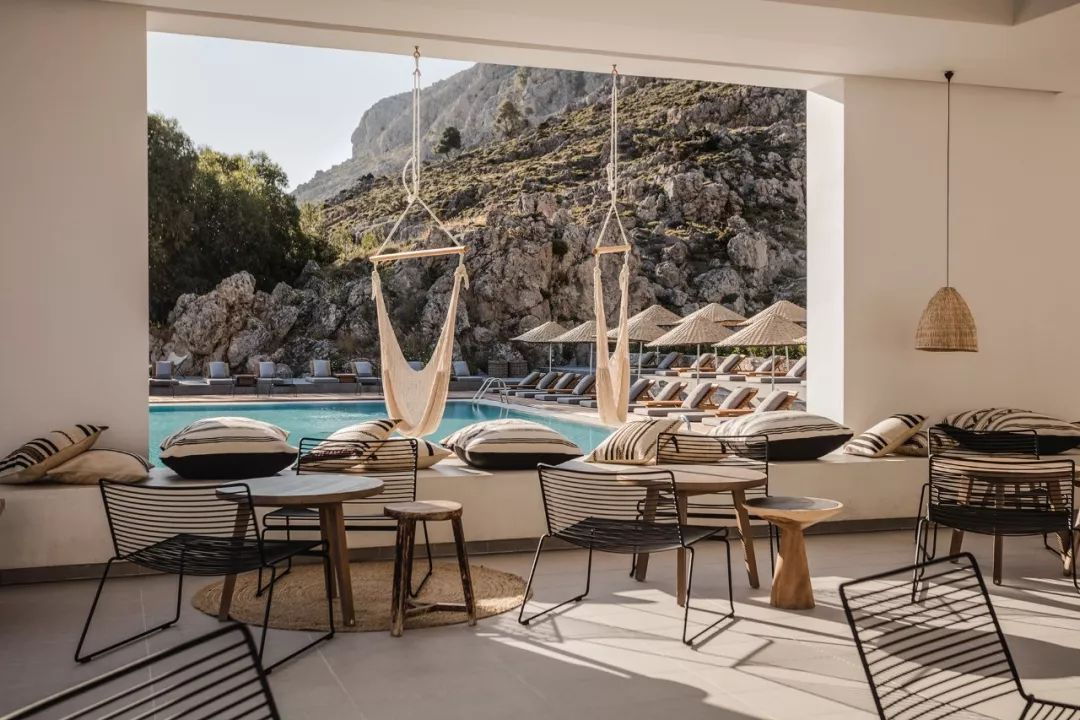
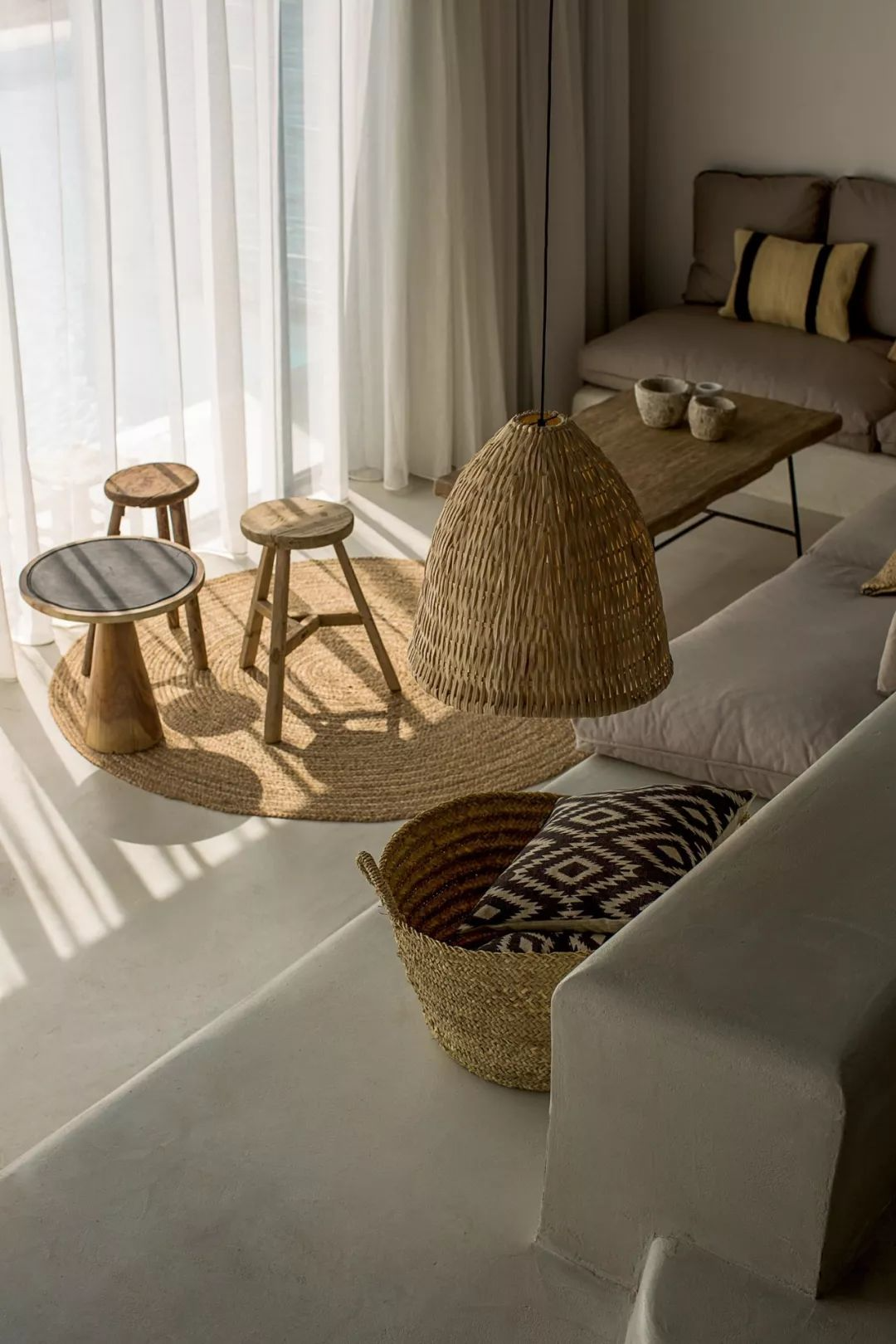
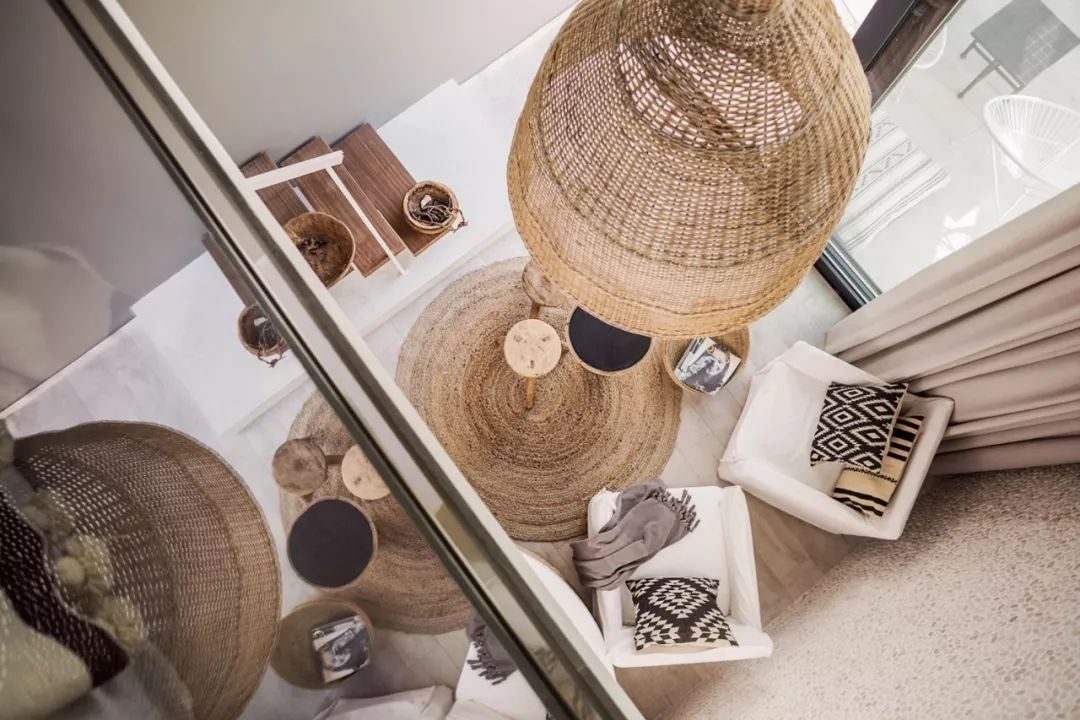
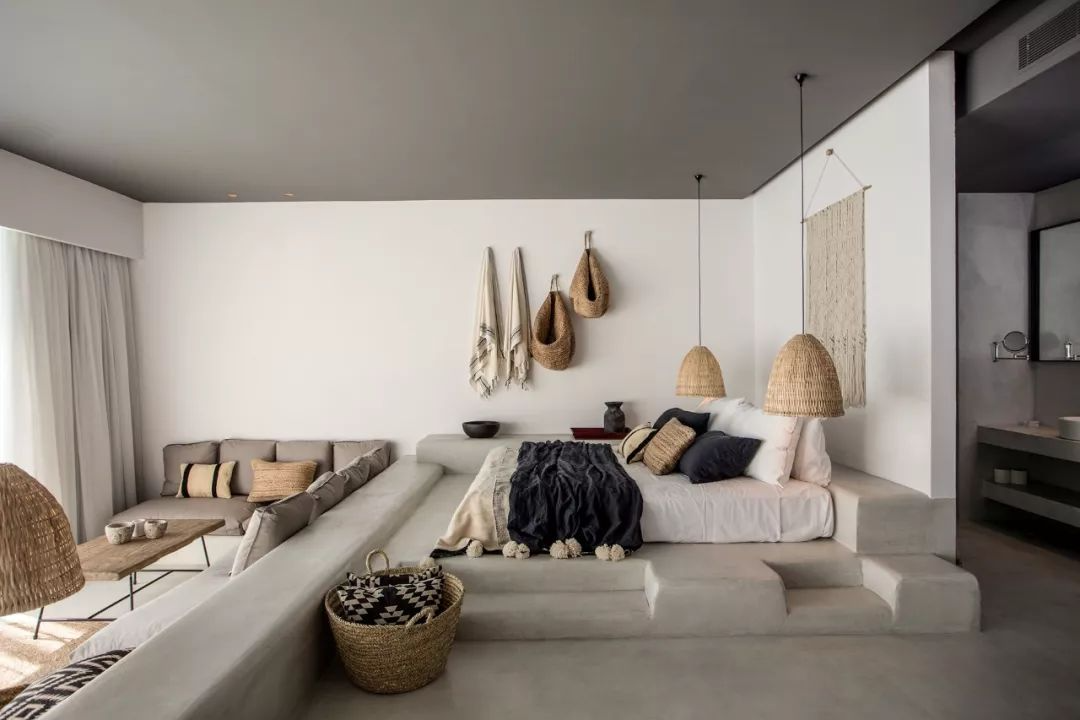
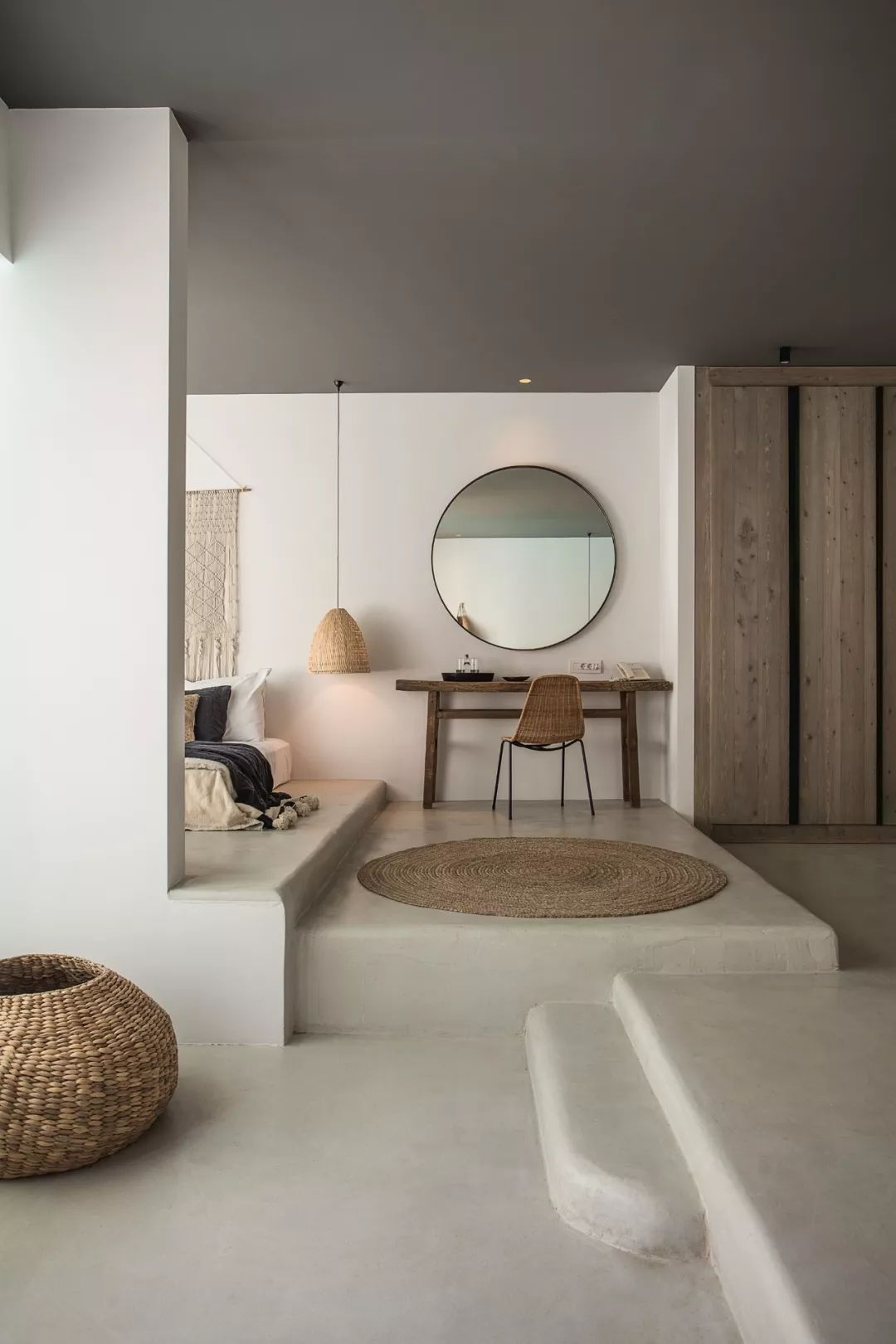
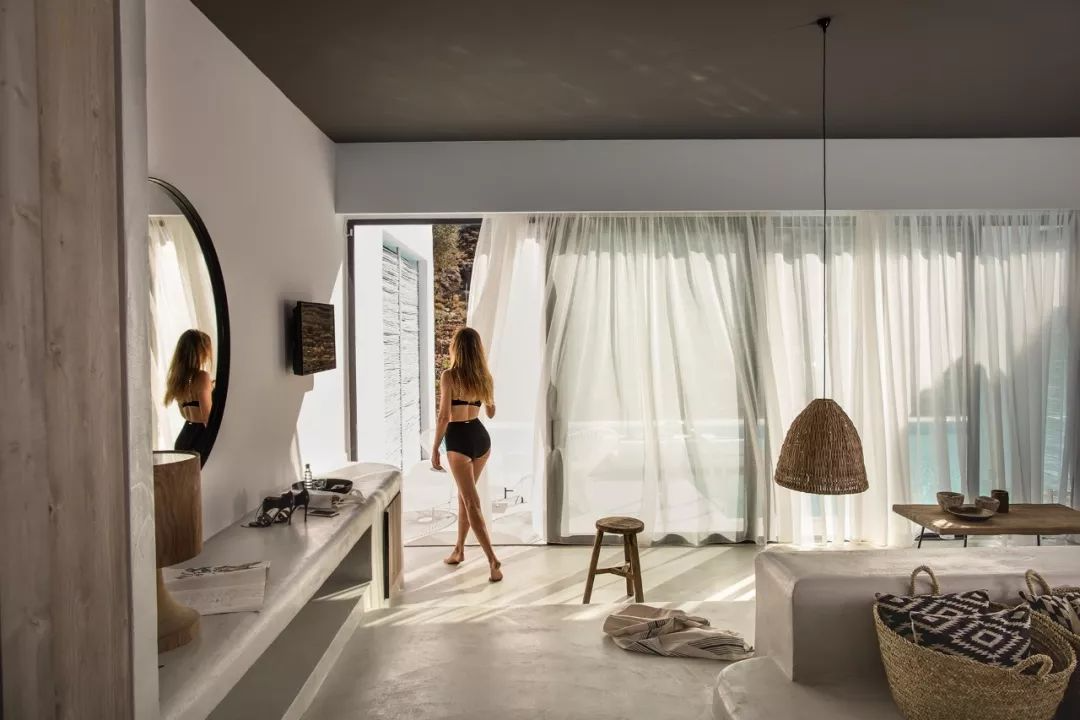
COOK HOUSE CHANIA
Design: K-studio & Lambs and Lions
The guest room space has achieved a delicate balance between luxurious life and a peaceful retreat. The designer seeks to integrate the atmosphere of wabi-sabi into a modern and simple leisure vacation, creating a stable and peaceful state of mind. The quiet objects overlap with light and shadow, inadvertently touching the depths of the heart.
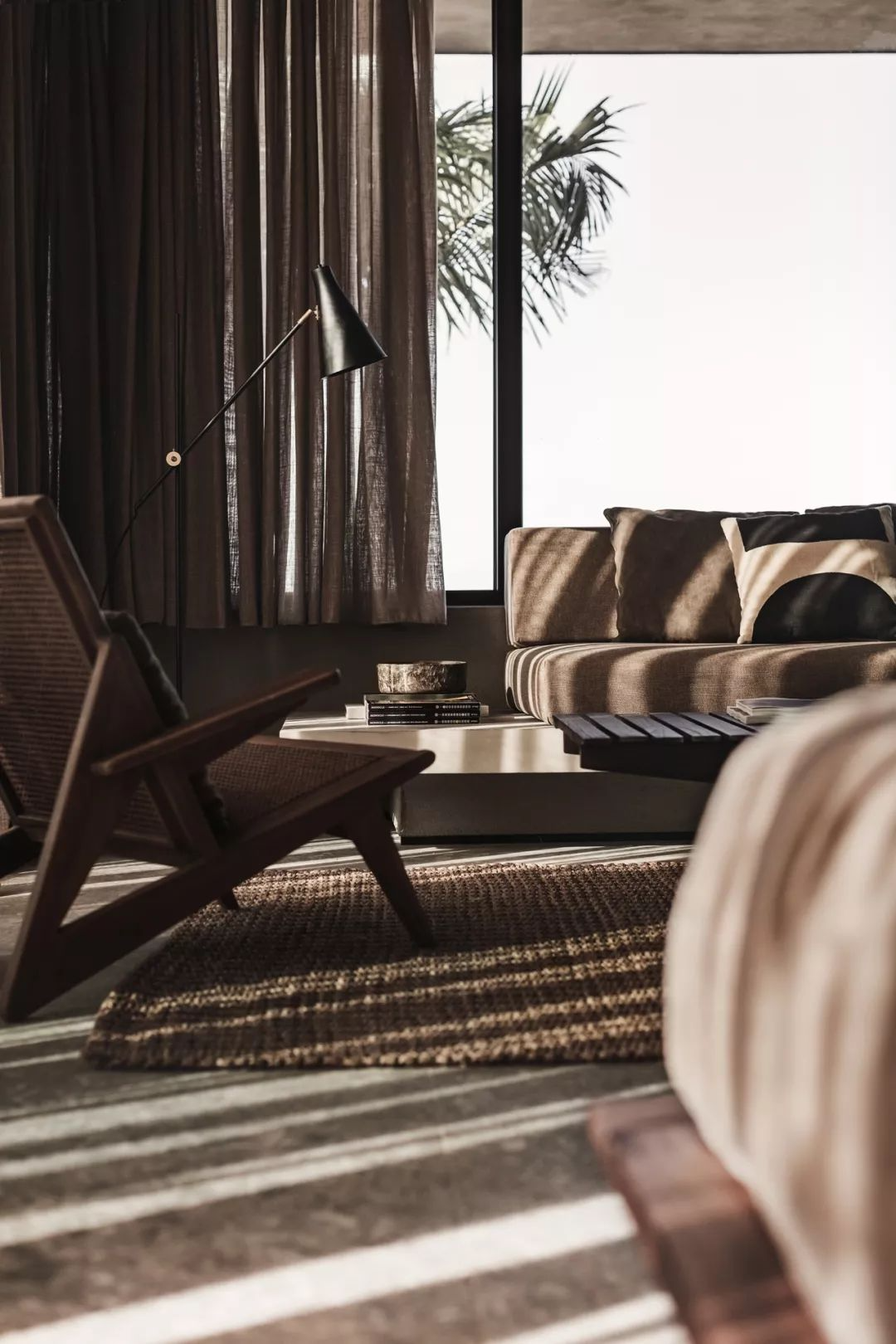
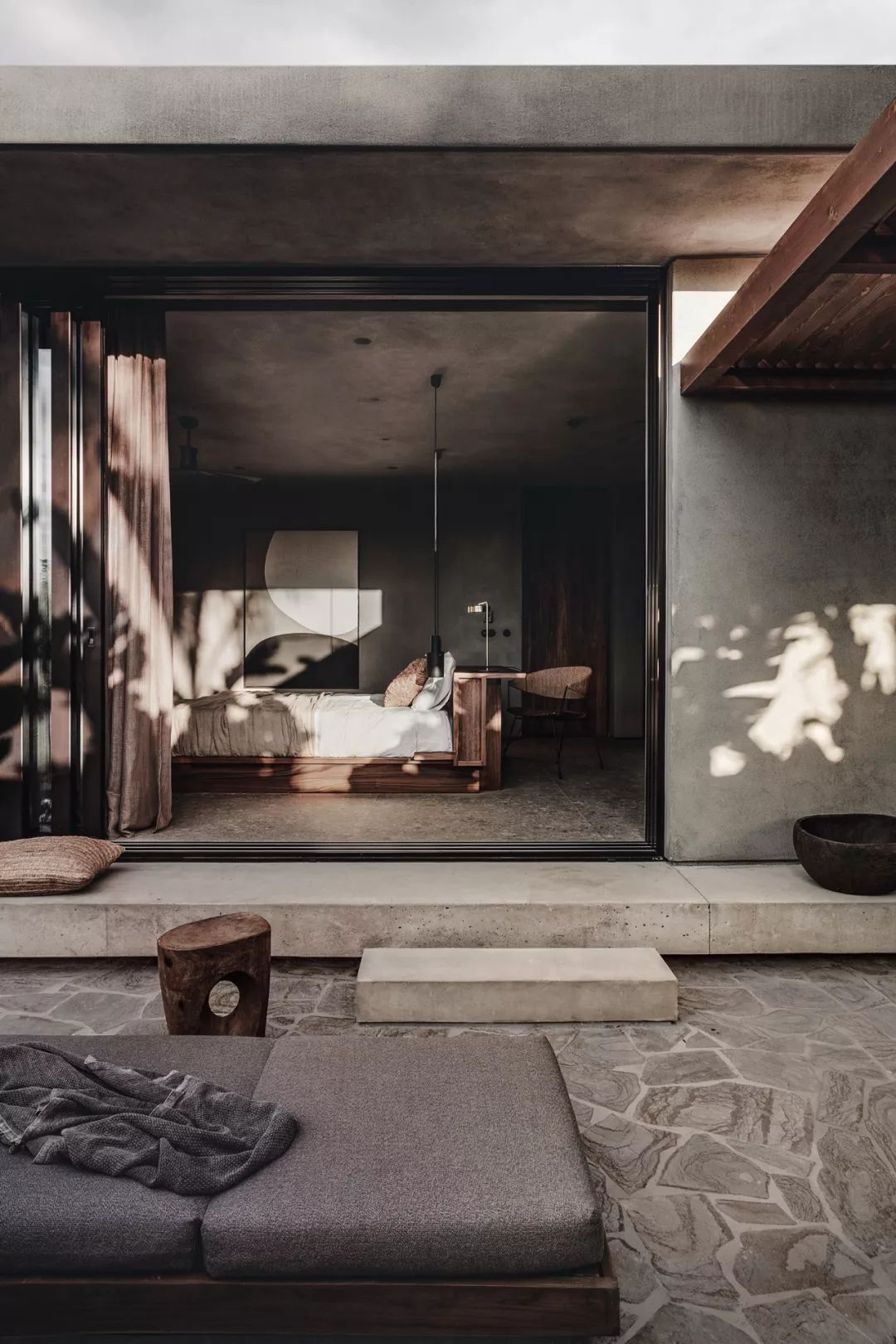
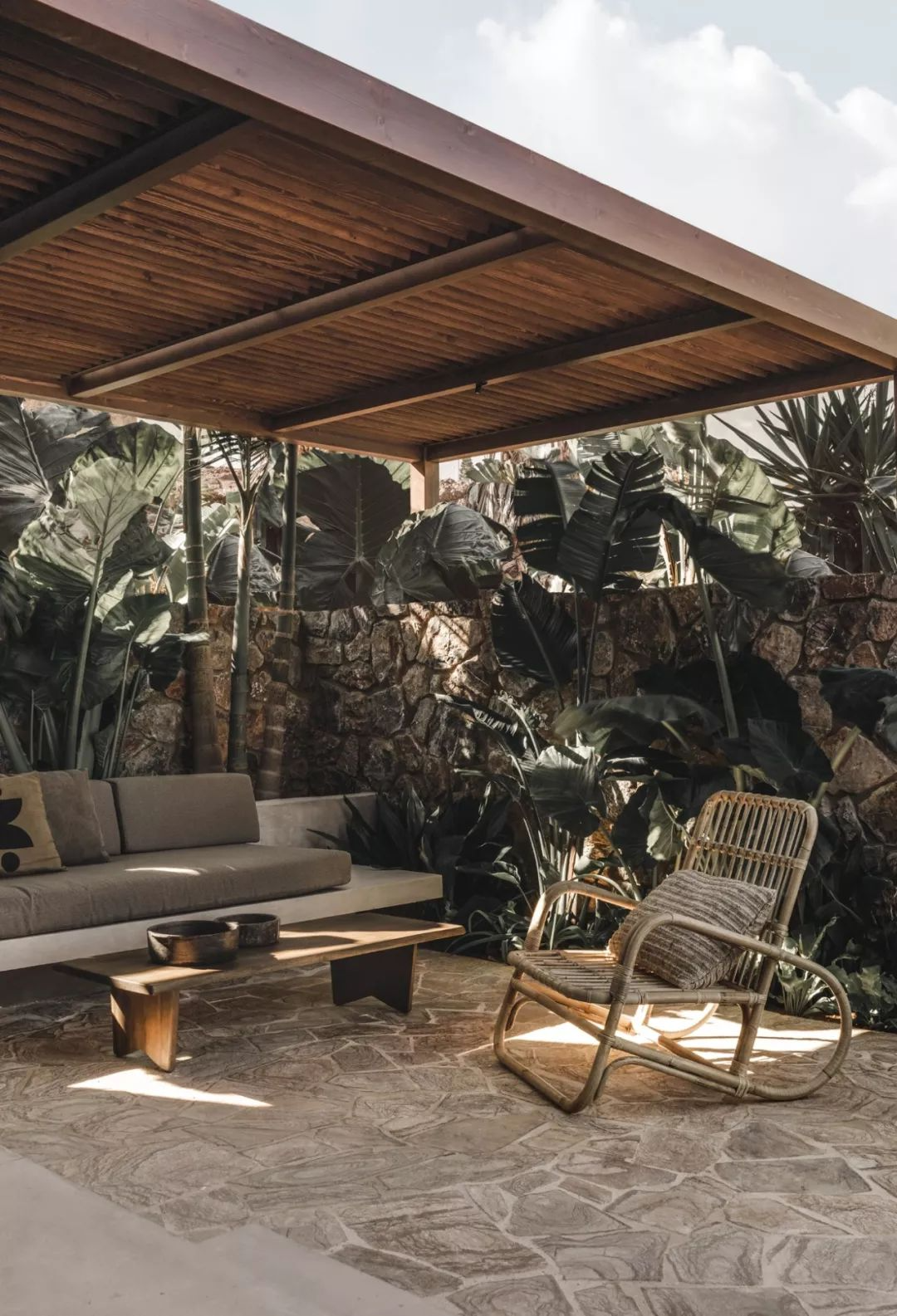
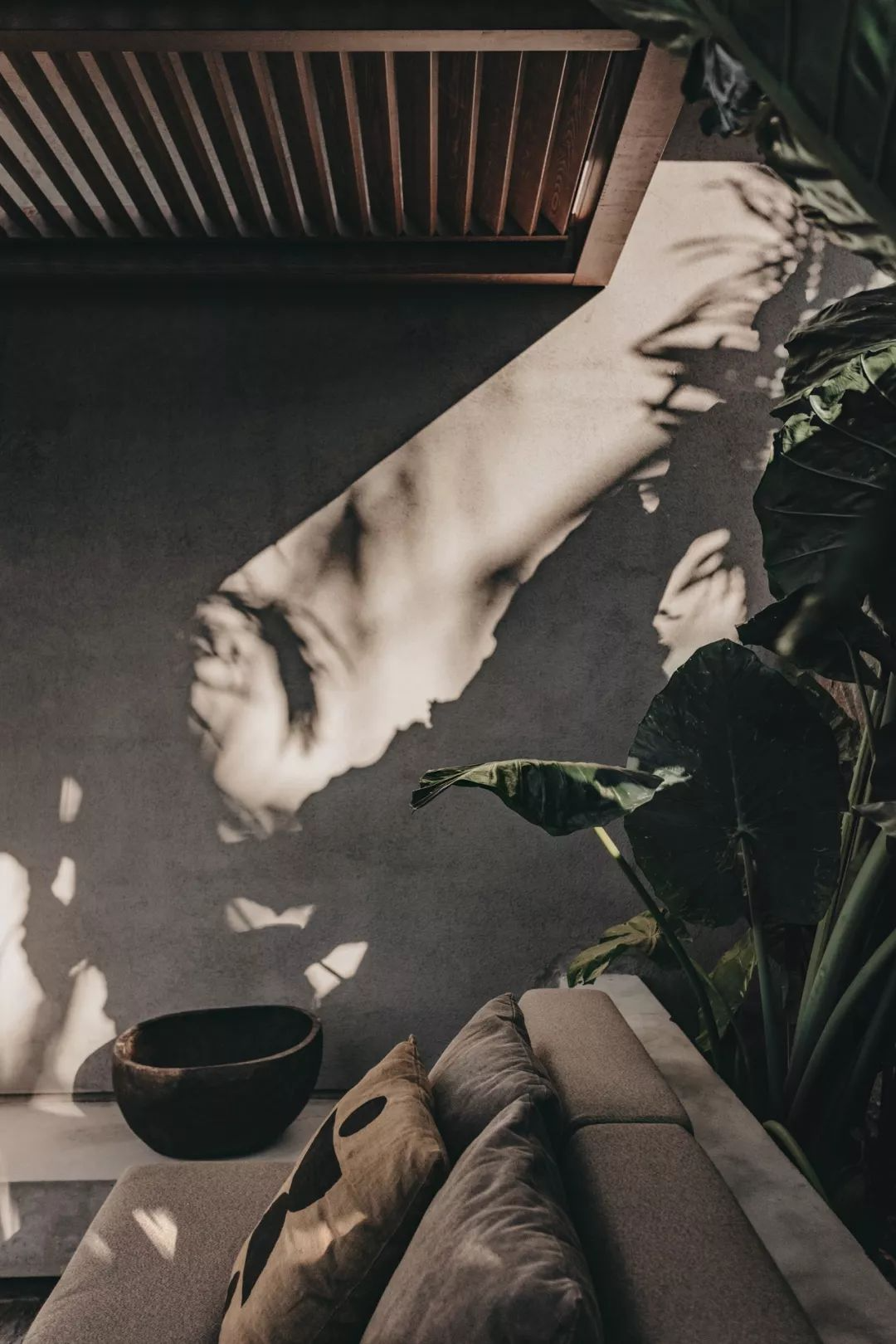
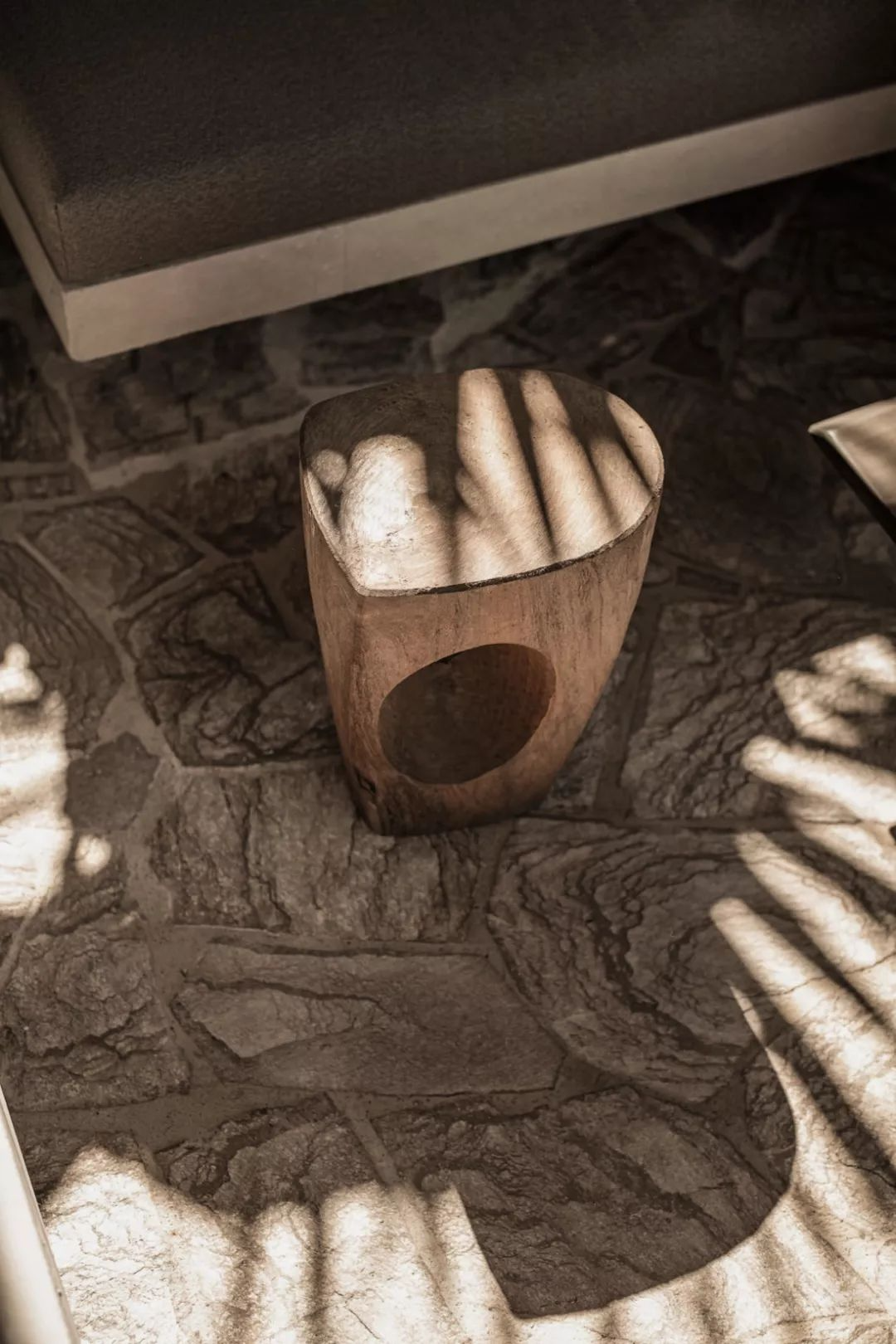
Jiaxing Wabi-Sabi House
Design: Chenyou Design
The house is located in Jiaxing. On the premise of respecting the structure of the building itself, the designer reorganized the space, integrating modern residential use and metaphors of traditional life. Through the use of materials, space, light and shadow, a "polysemous space" of both contrast and integration was formed, creating a sublime spatial relationship from the architectural structure, and presenting the beauty of wabi-sabi in spaces of different dimensions.
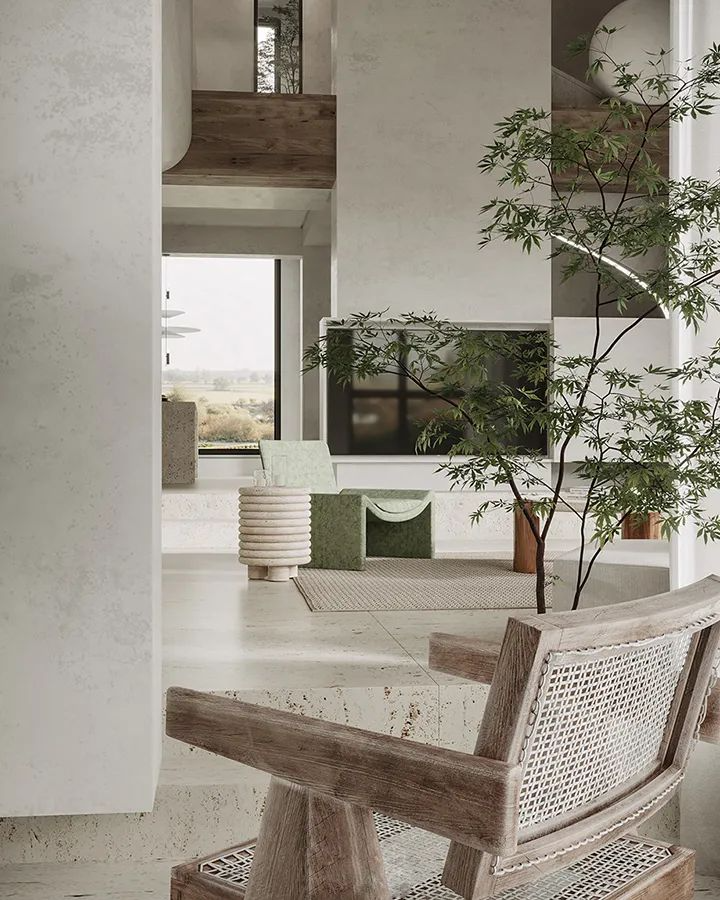
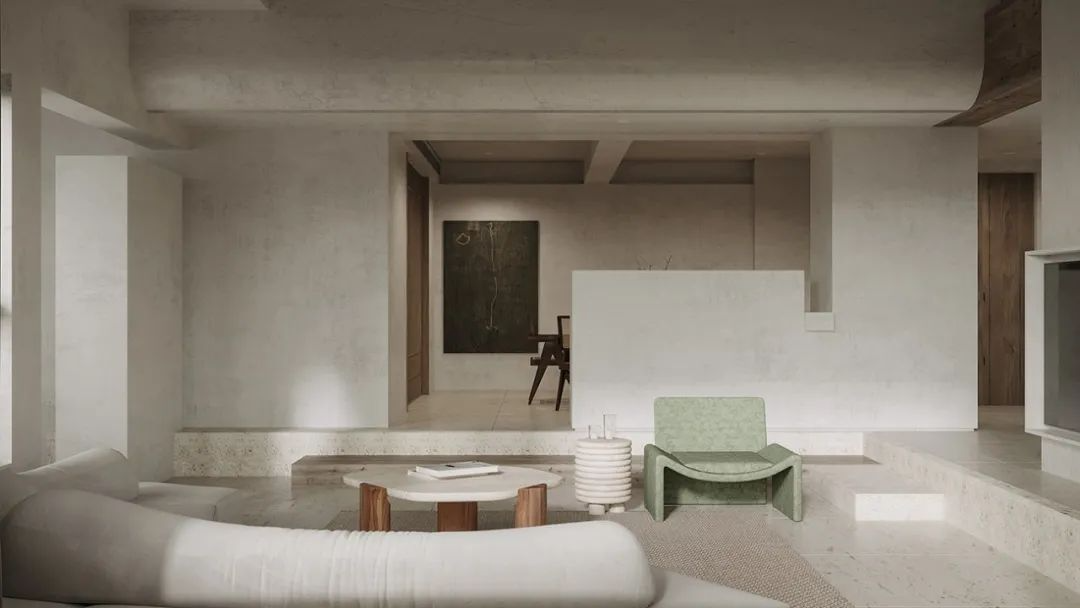
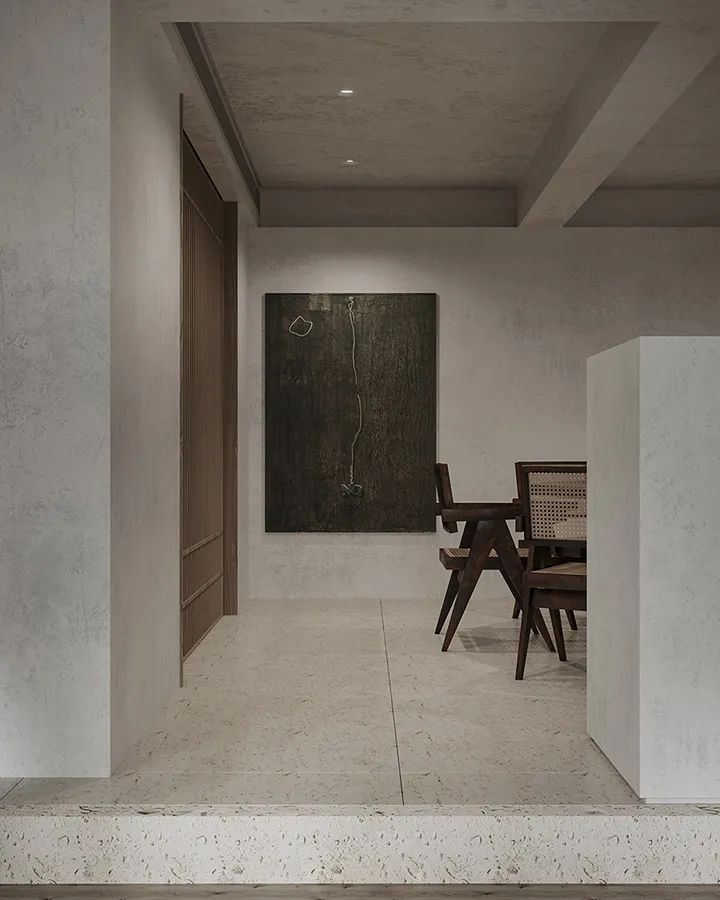
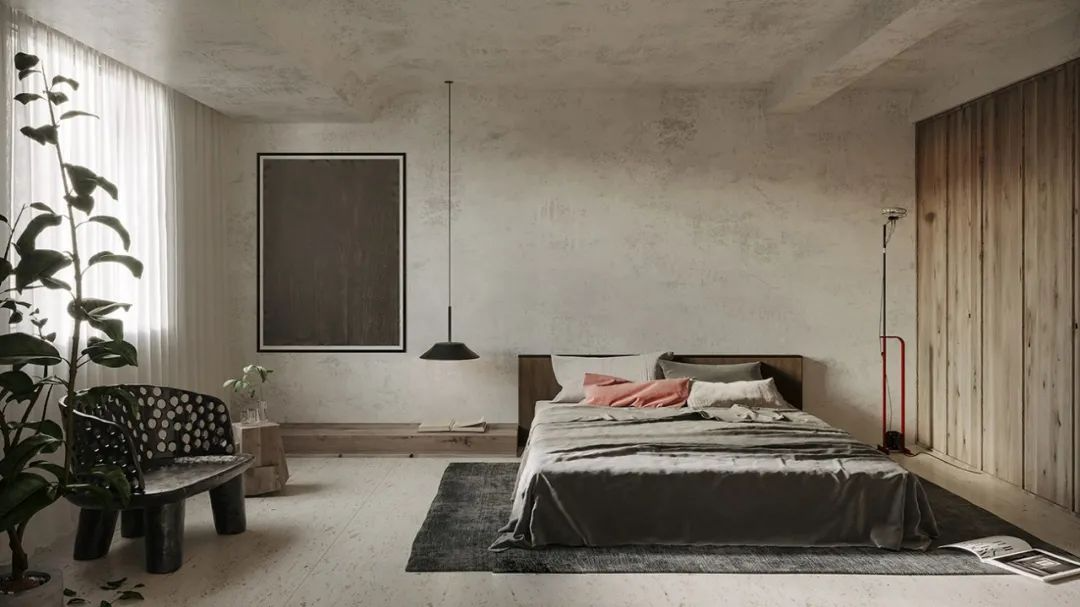
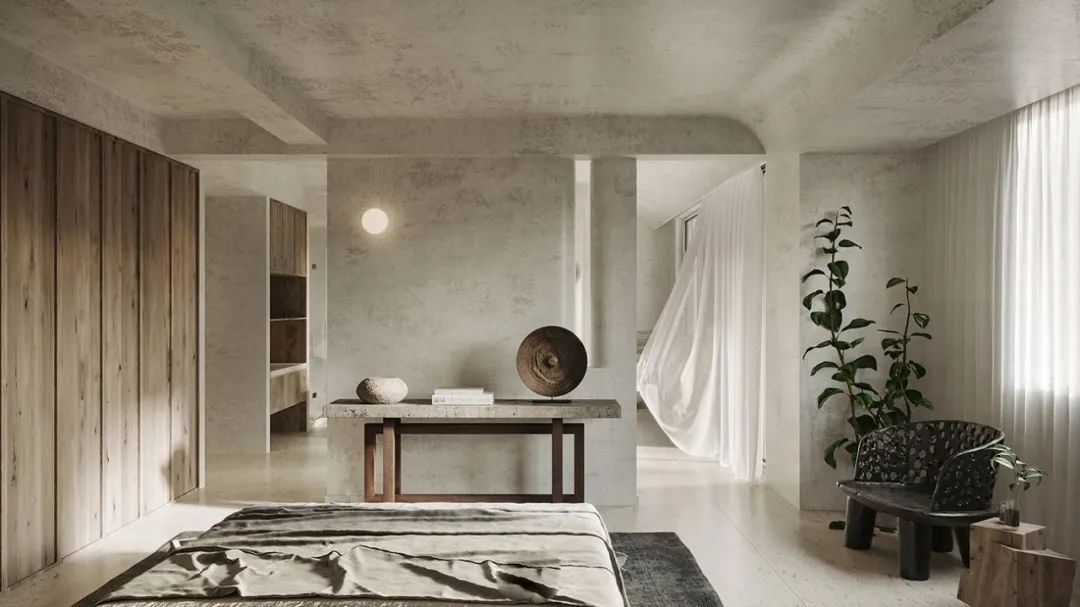
SEVEN HILLS
Design: Yana Prydalna
The semicircular bedroom background wall in this project is an incomplete and imperfect formal composition, which extends people's thinking and imagination and gives a beautiful artistic vision. A huge rattan lamp, table, decorations, and plants are arranged around the rhythmic home furnishings, which looks full of style.

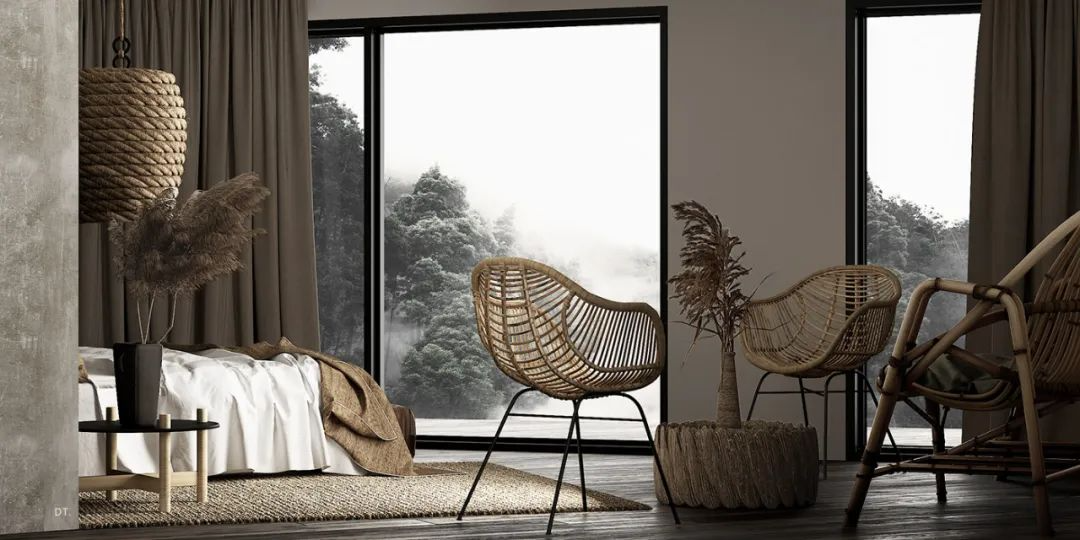
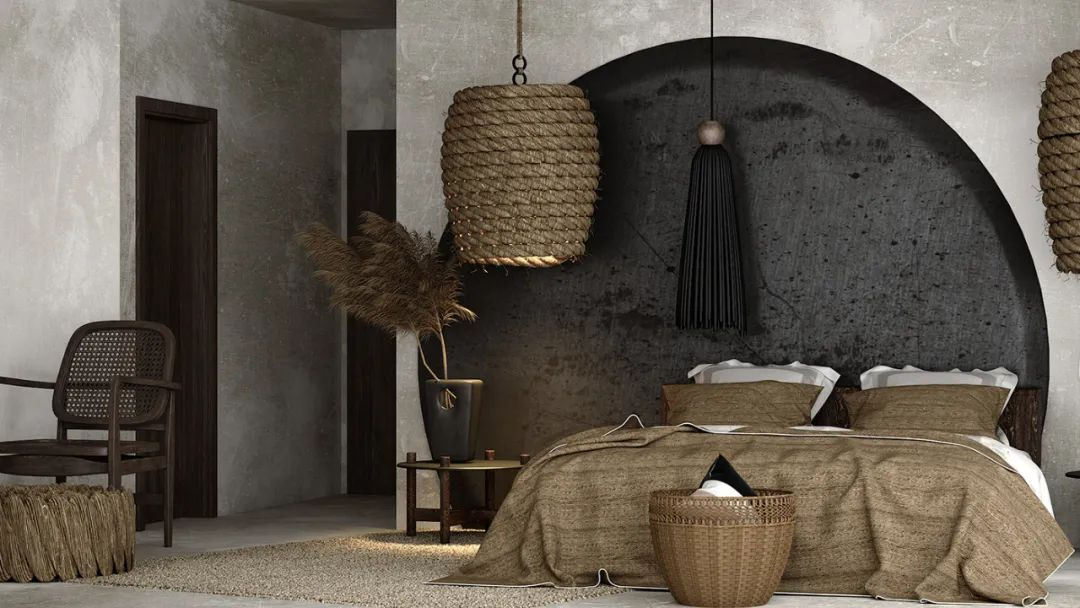
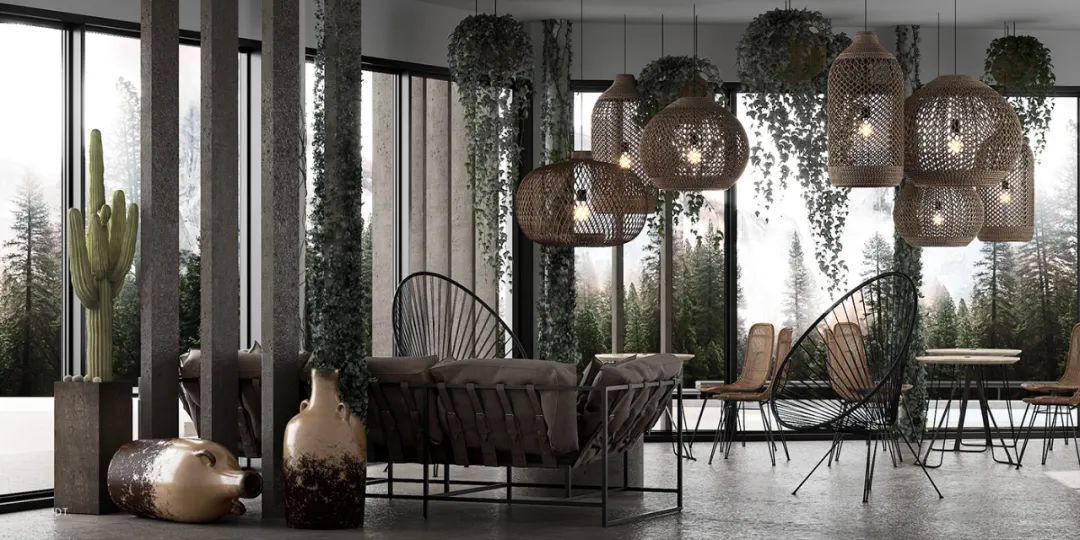
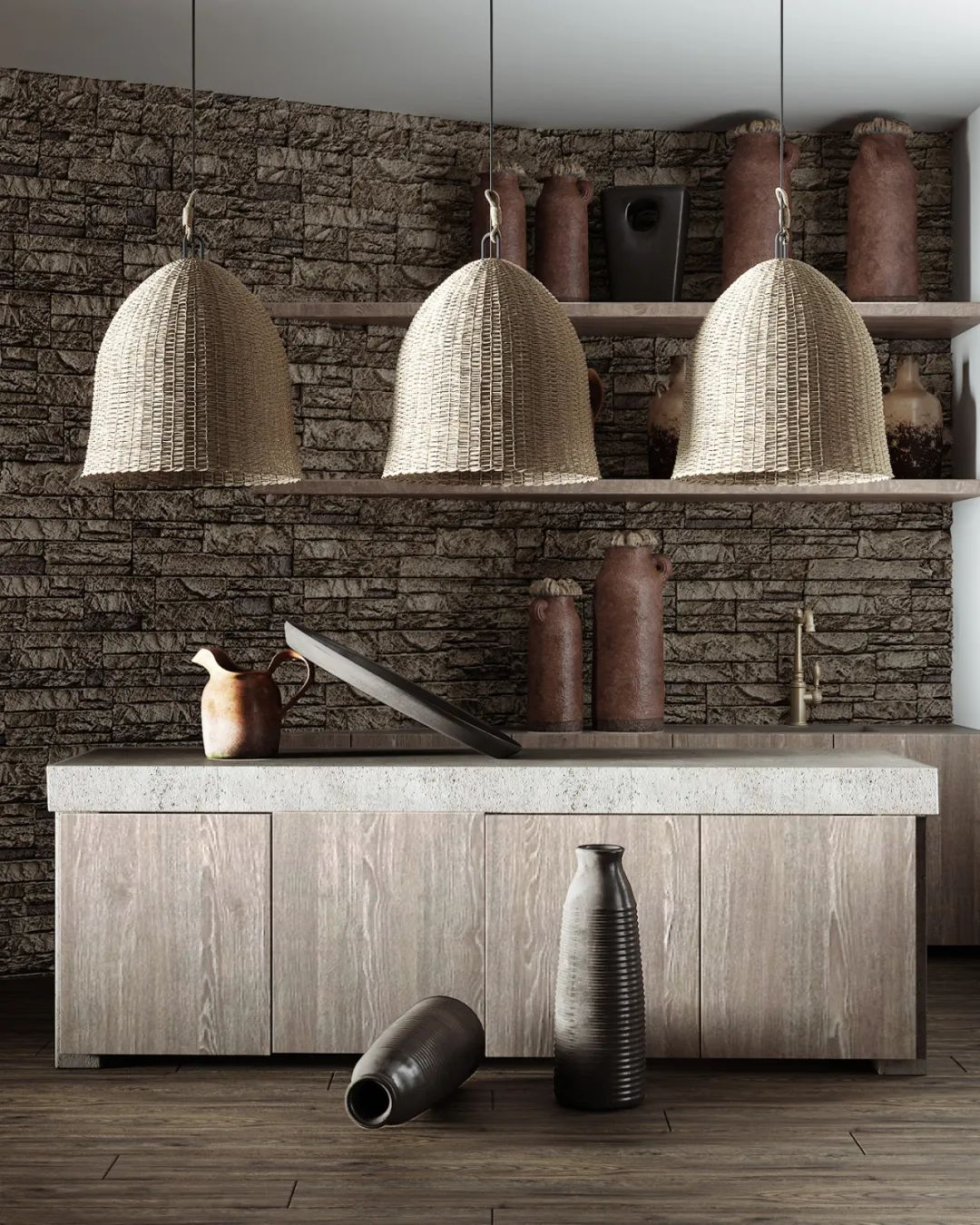
Apartment in Kiev
Design: Olga Fradina
Apartment in Kiev is a minimalist apartment located in Kiev, Ukraine, designed by Olga Fradina, whose design principle is to create a habitable interior space that is personally oriented. Therefore, the designer chose natural materials and neutral tones as the main theme of the interior.
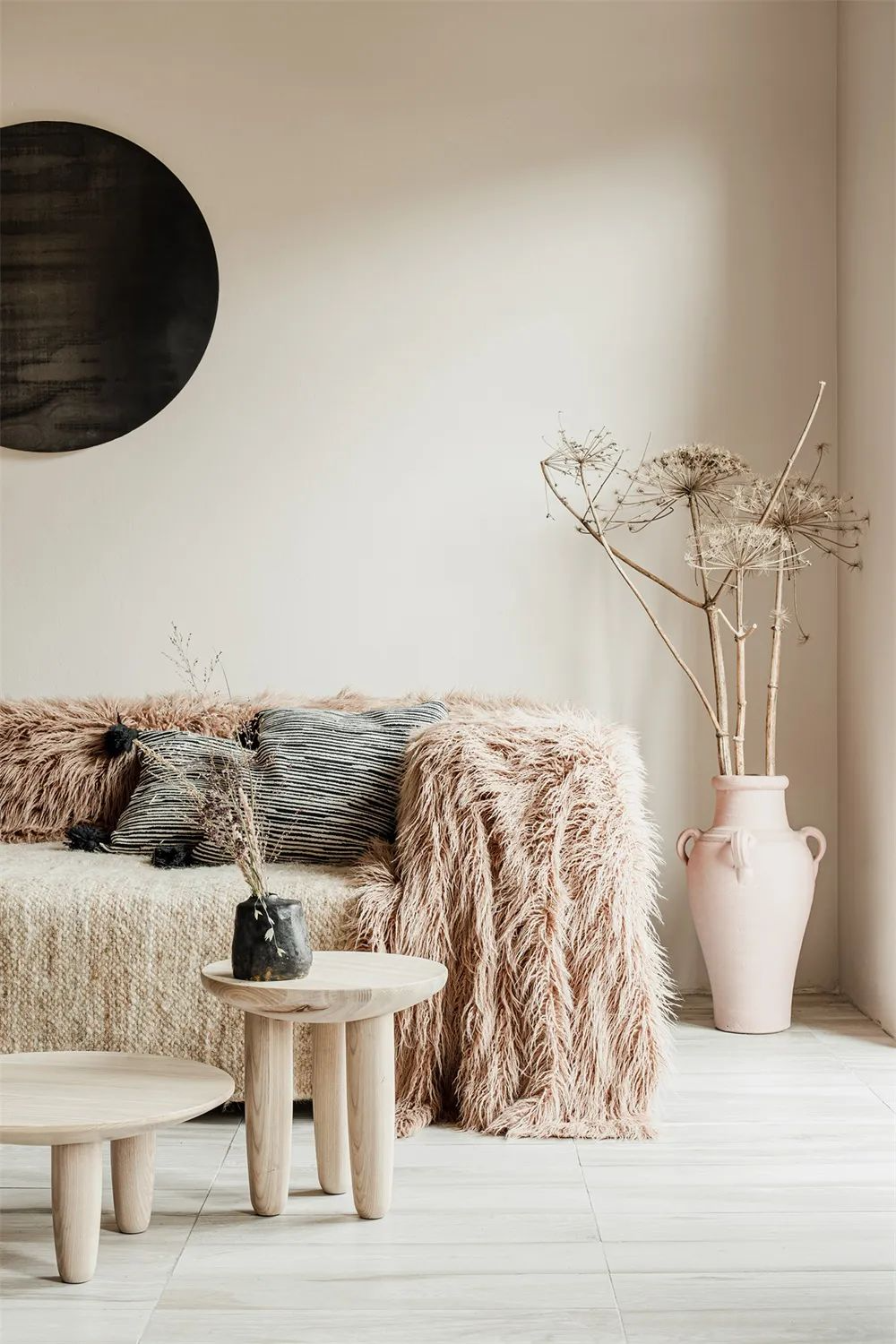
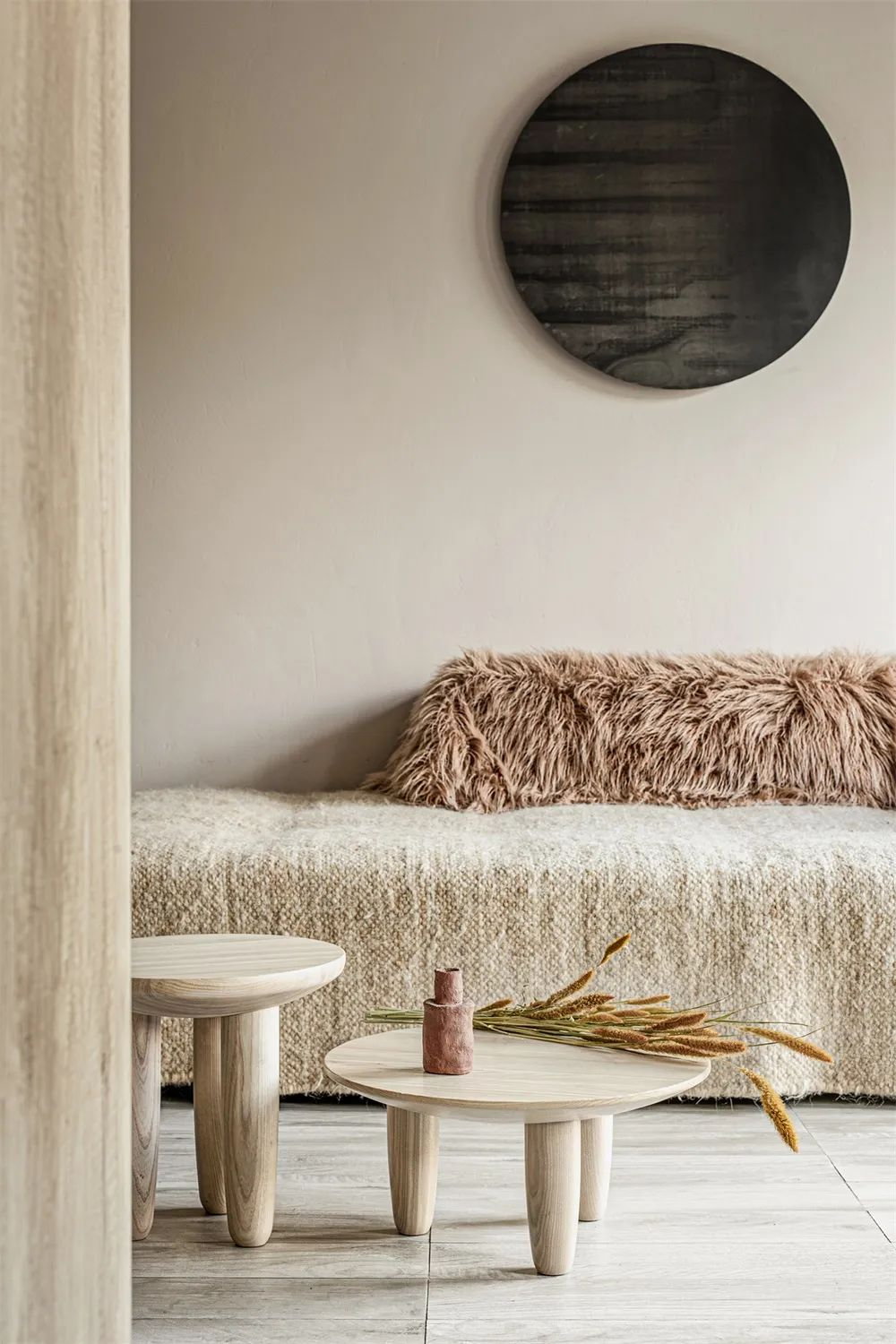
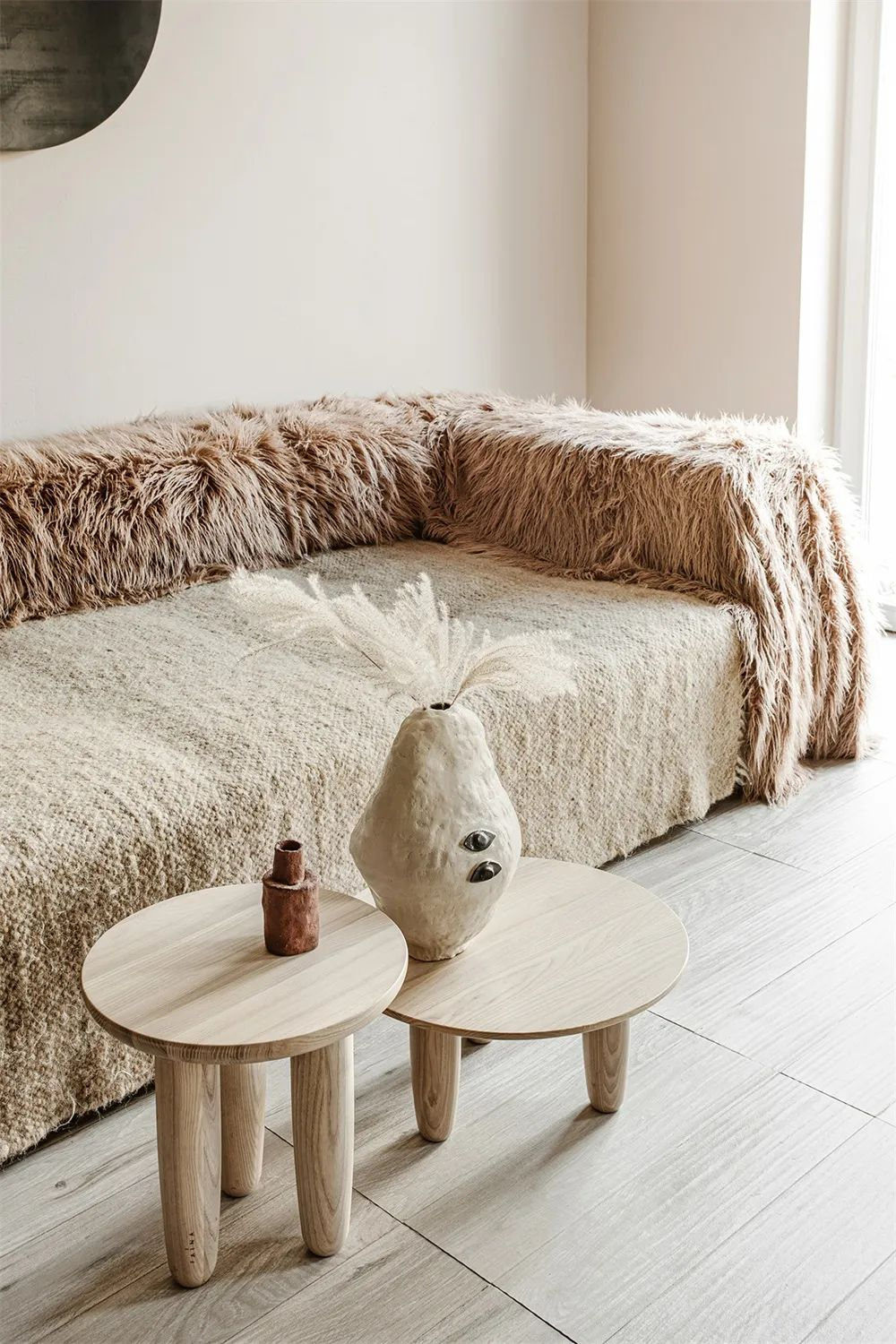
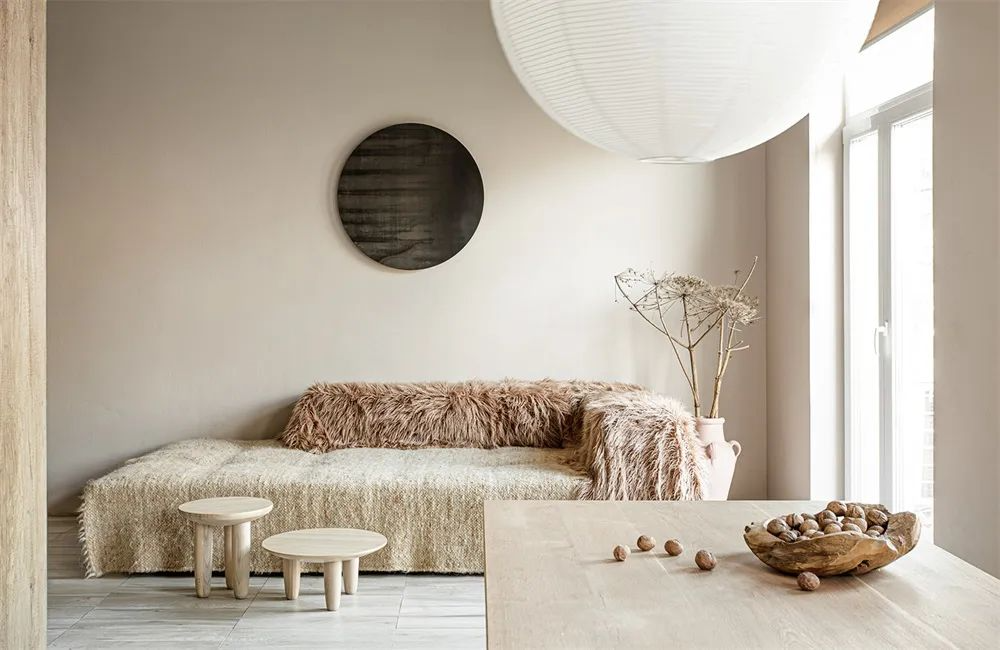
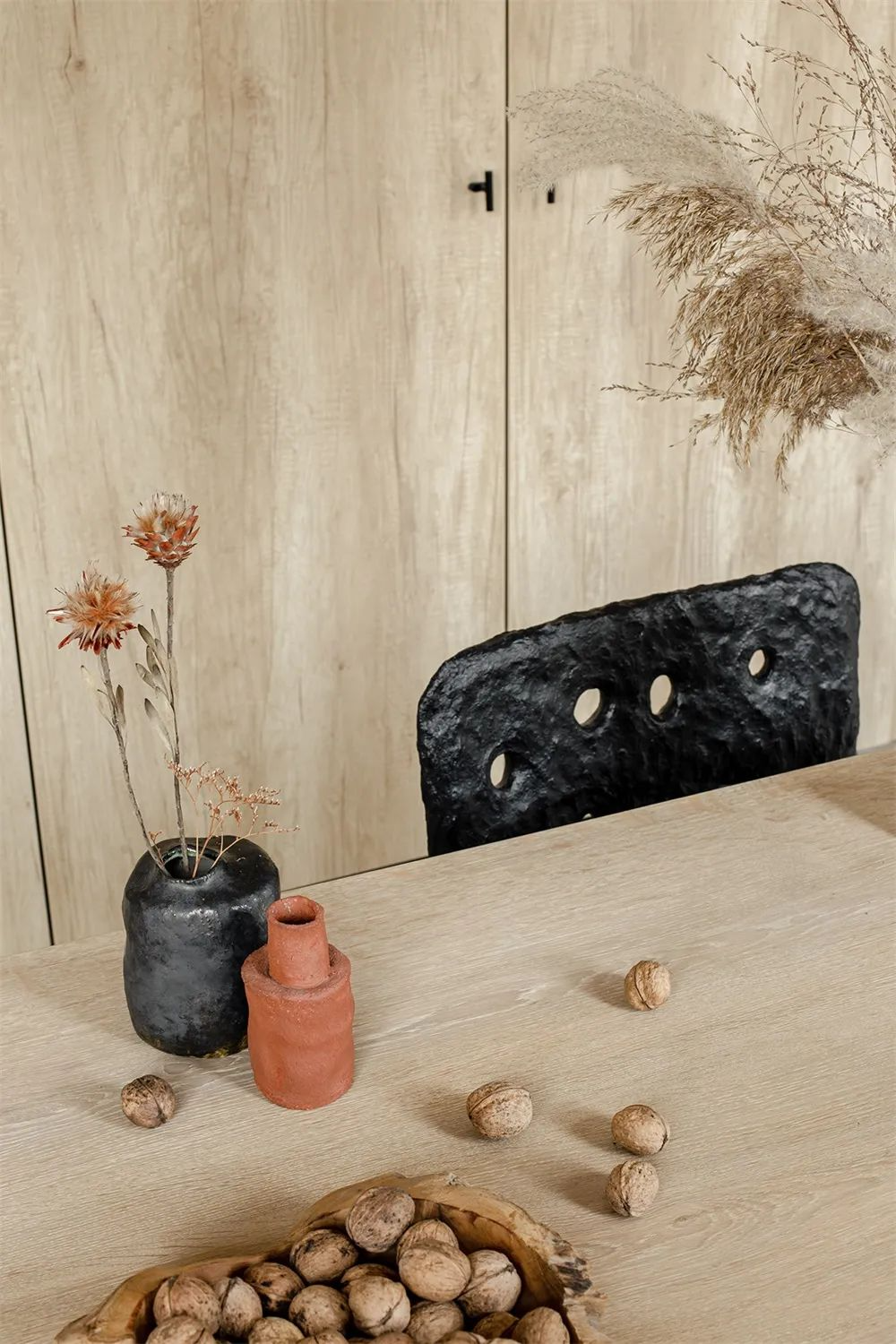
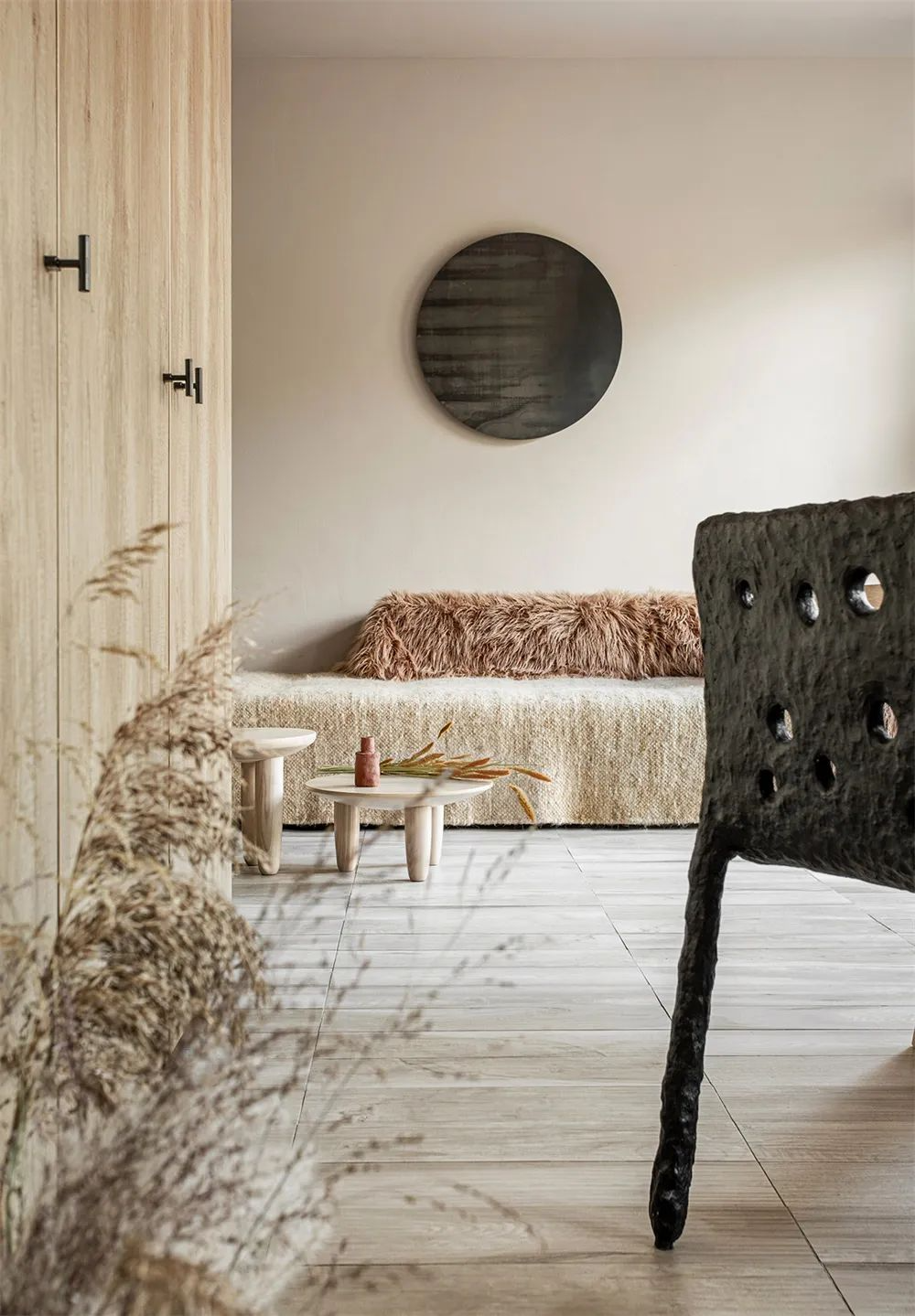
Park House
Design: MORQ
Park House is located in City Beach, Australia, covering an area of approximately 600 square meters. The low-key and unique entrance design creates a subtle sense of winding paths. Under the changes in natural light, it is like breaking into a light and shadow art gallery.
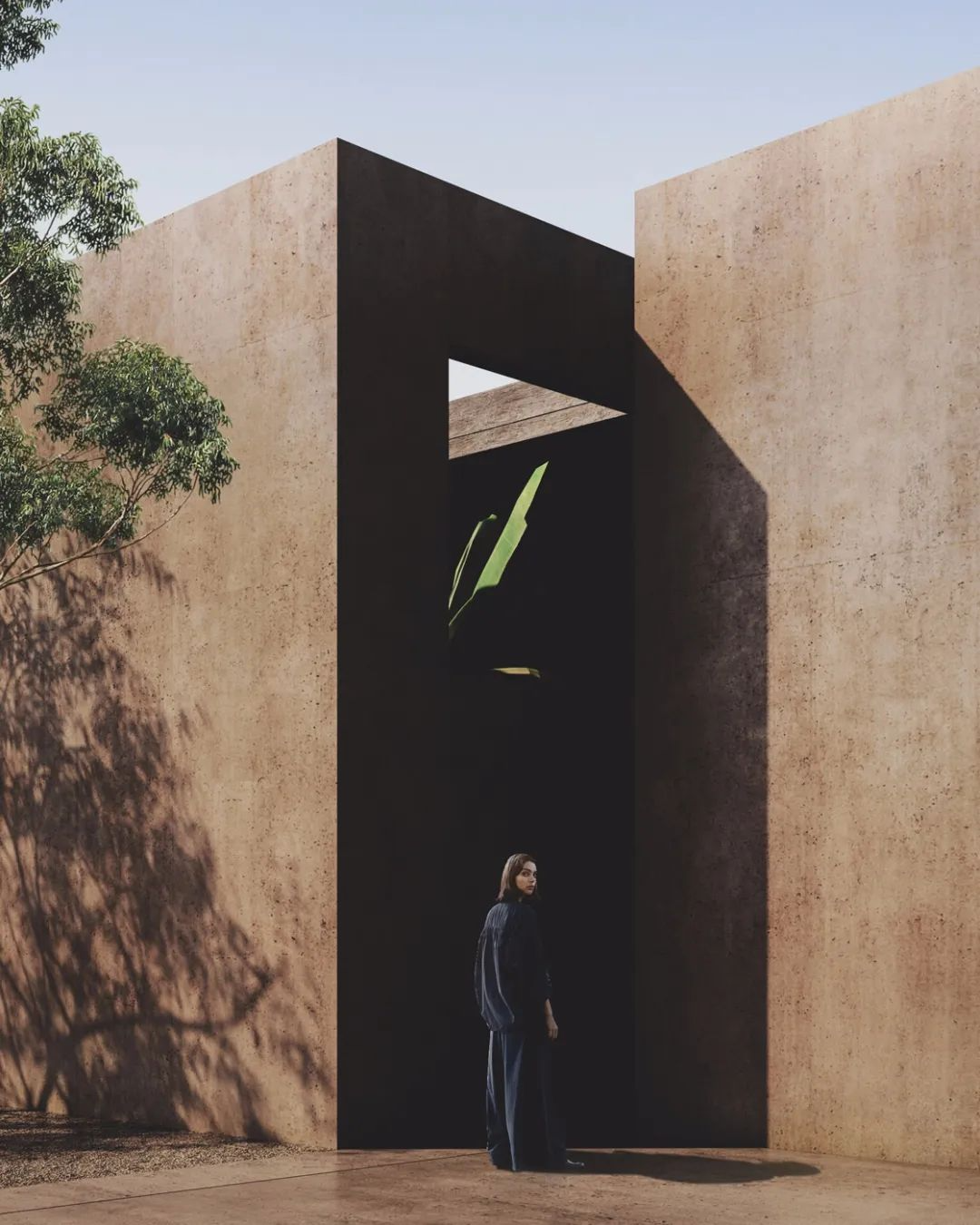
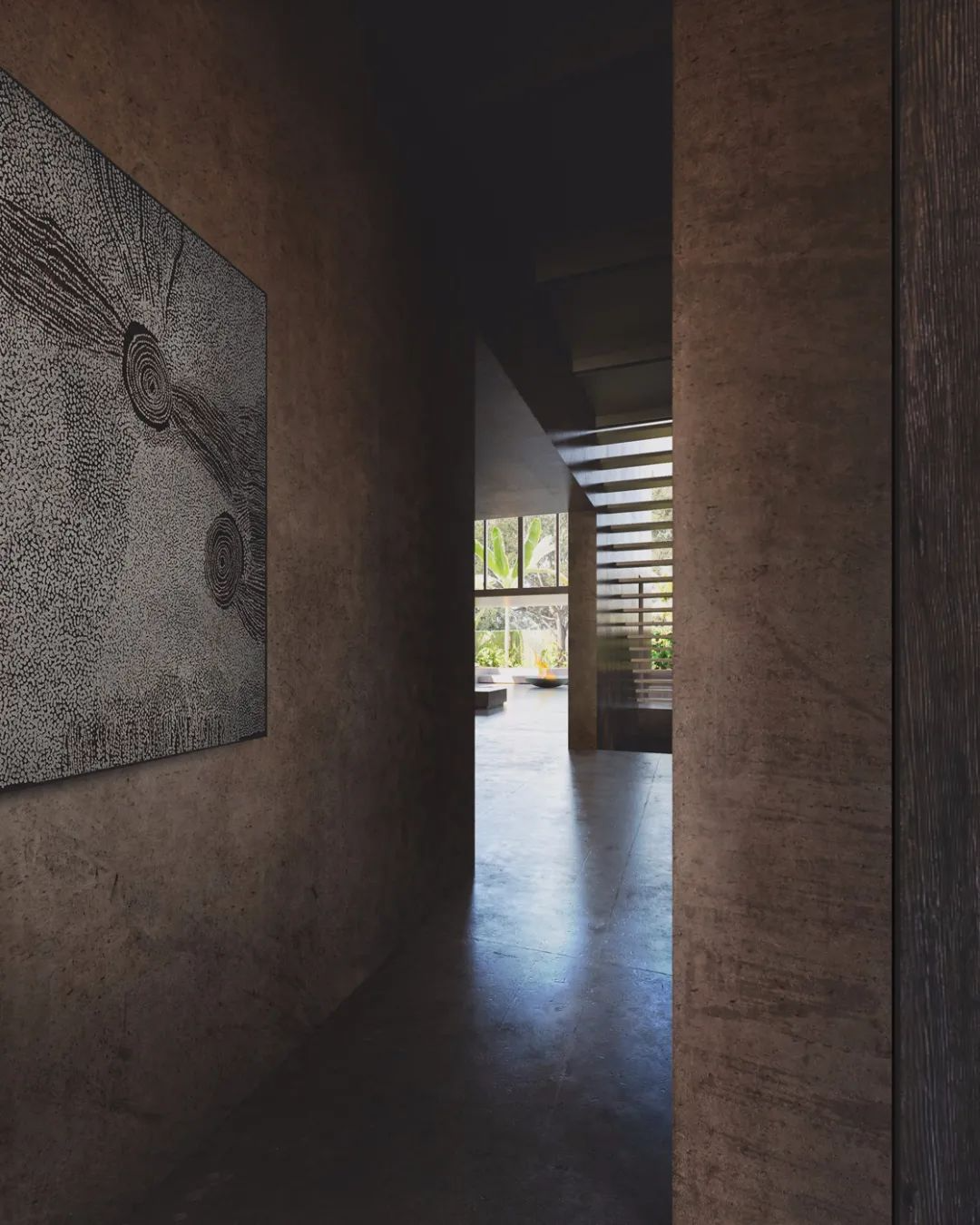
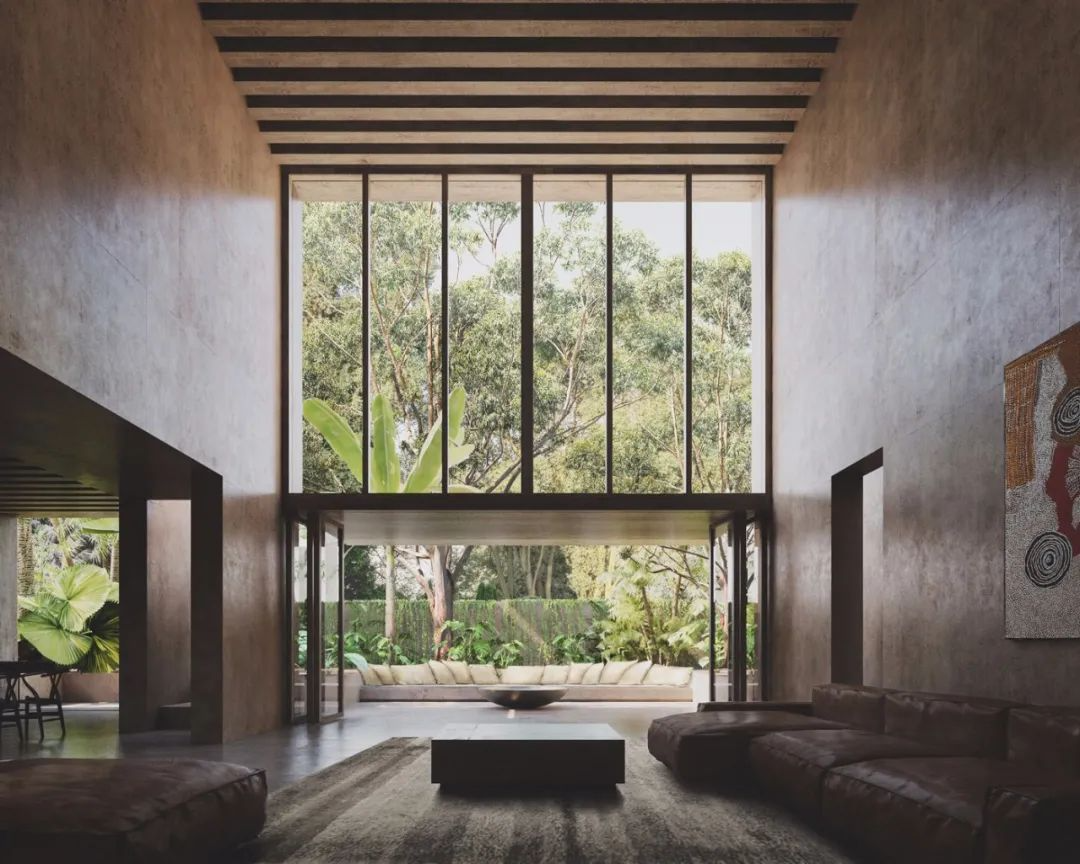
The interior design continues the simple texture of the building. The low-saturation colors make people relax instantly. The transparent glass brings in a lot of natural light, and the green plants everywhere bring the breath of nature to the residential space.
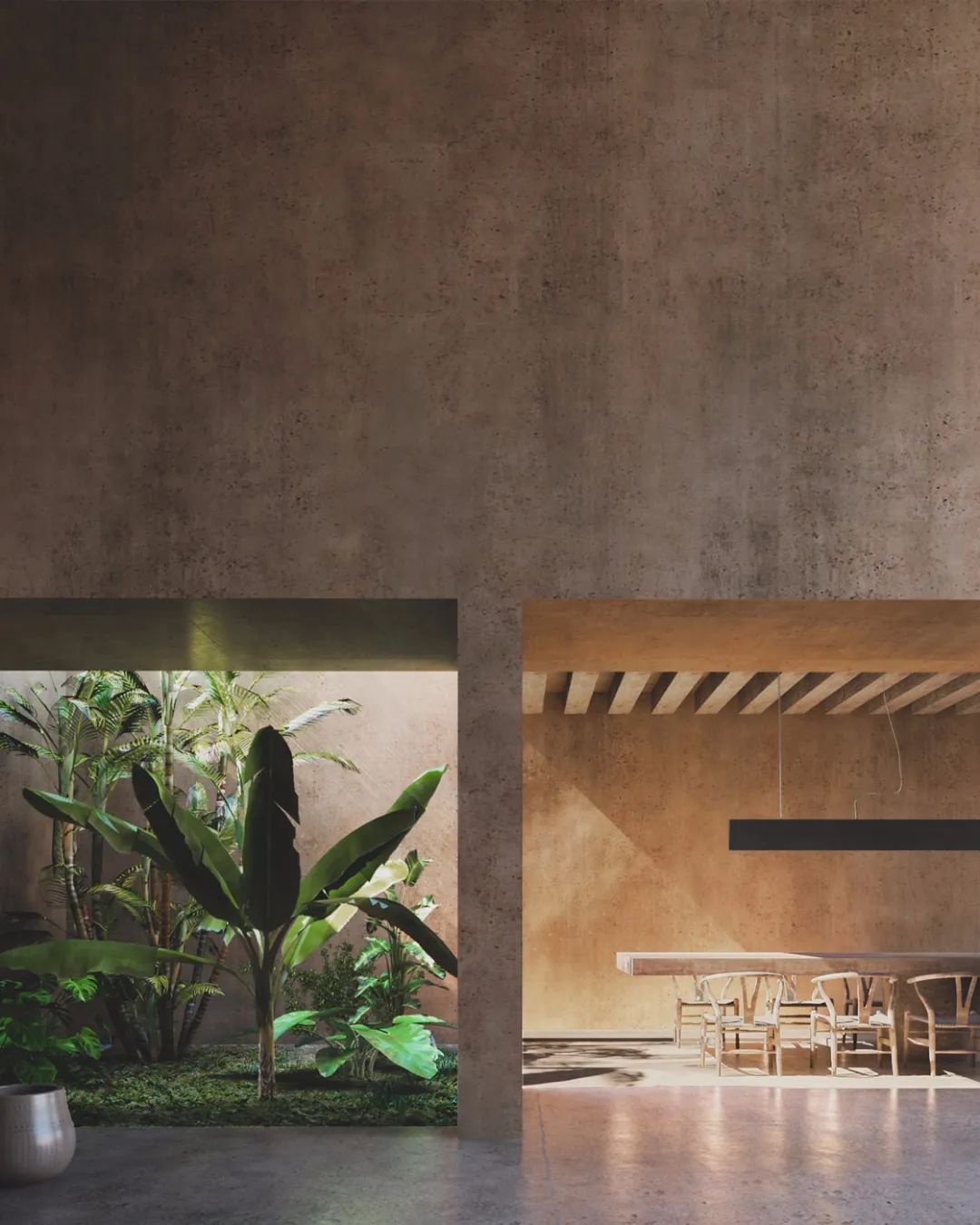
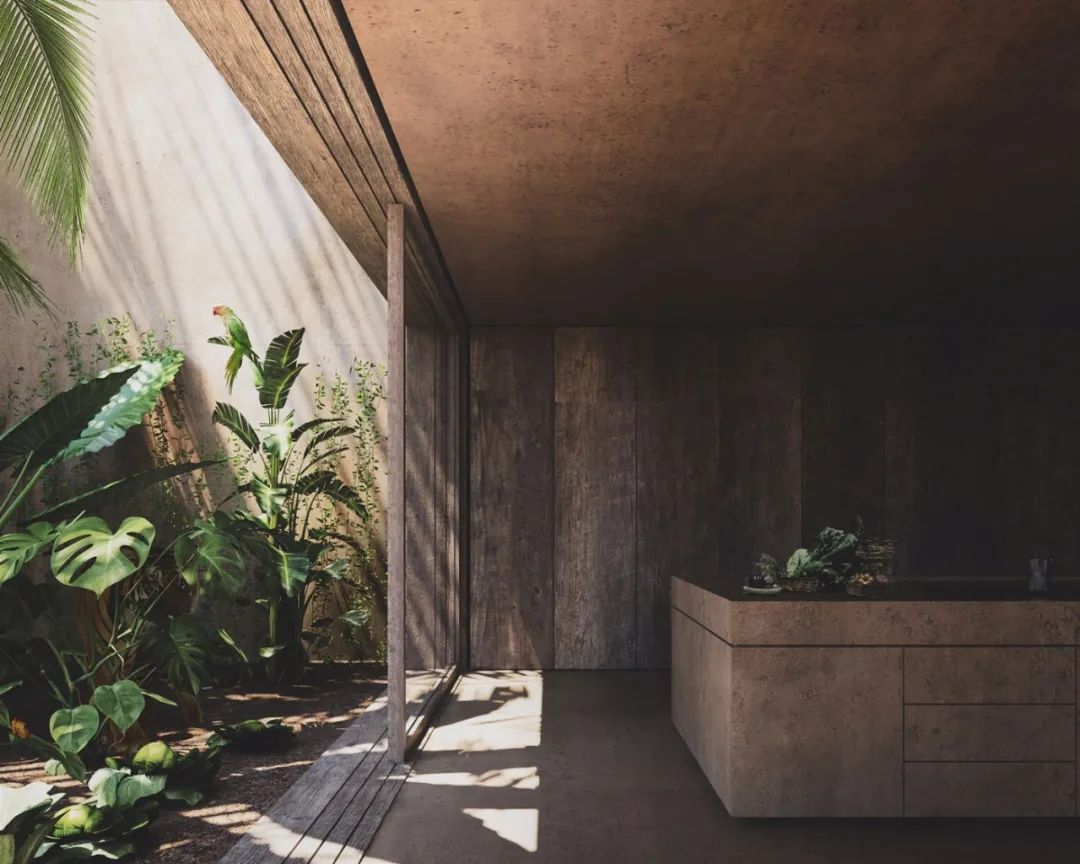
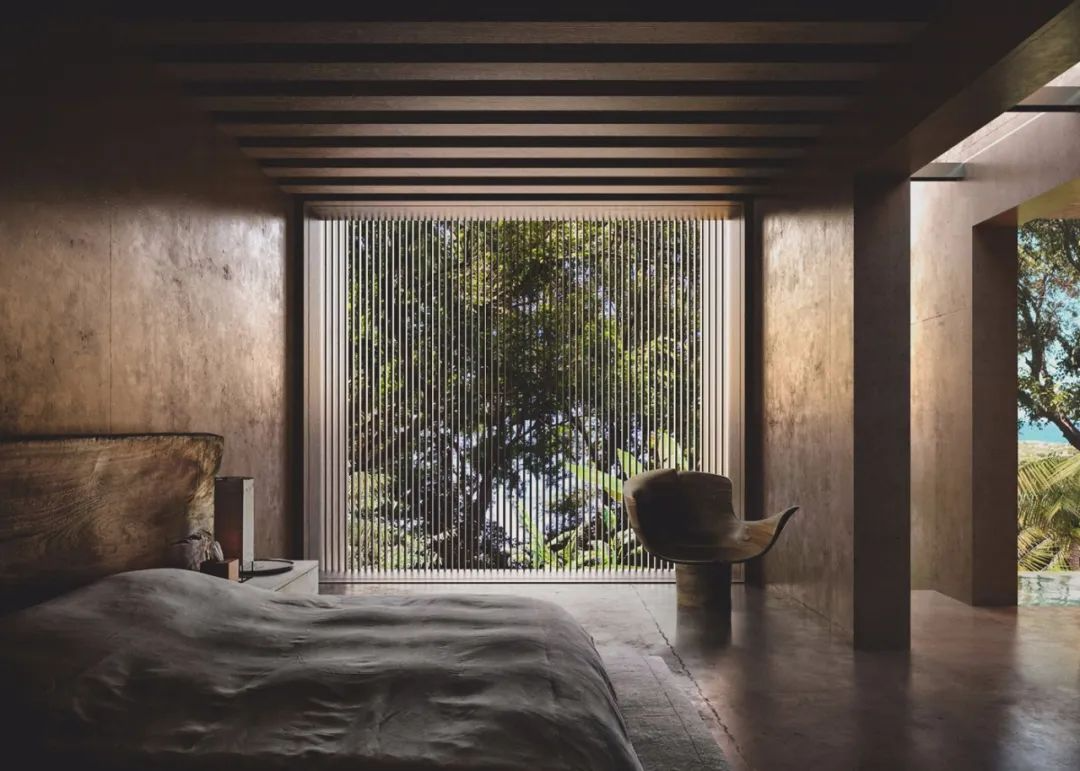
Villa RA
Design: MORQ
The project is located on a ridge 300 meters above sea level. The building reflects a subtle combination of modernism and vernacular architecture. The earthy yellow facade presents the wild beauty of the building, and the simple and low-key opening structure is like a movie screen.
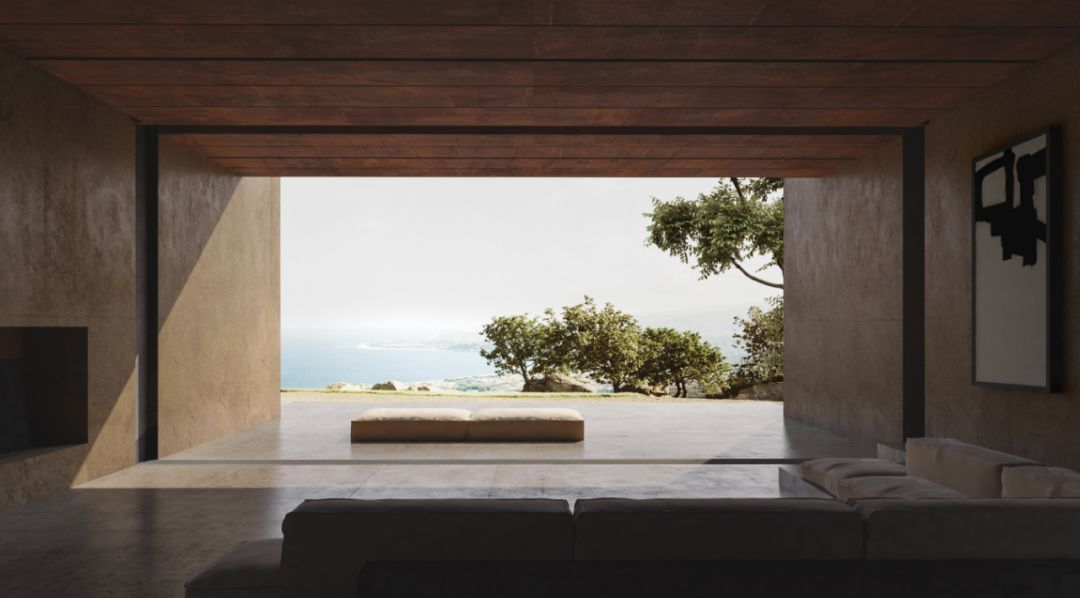
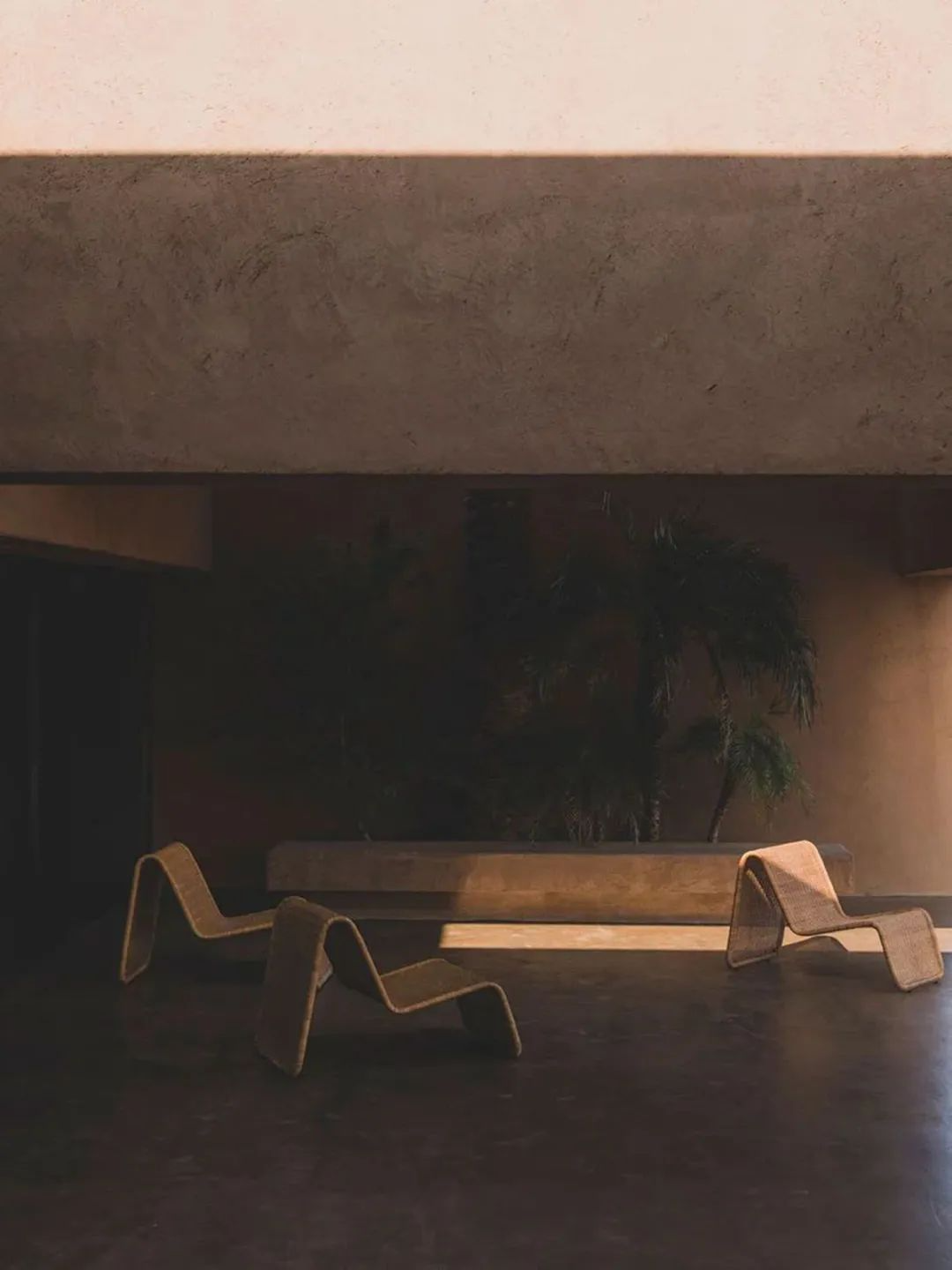
The interior space is simple and low-key, exuding a pure natural atmosphere.
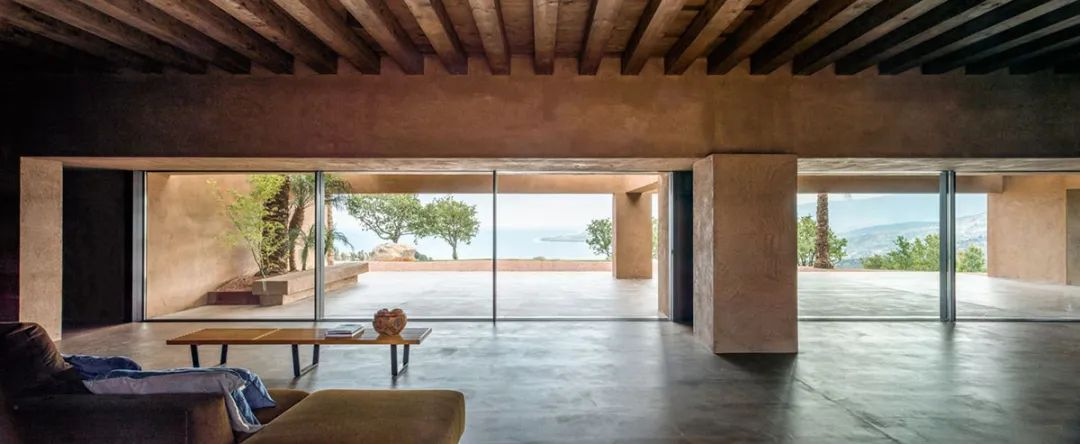
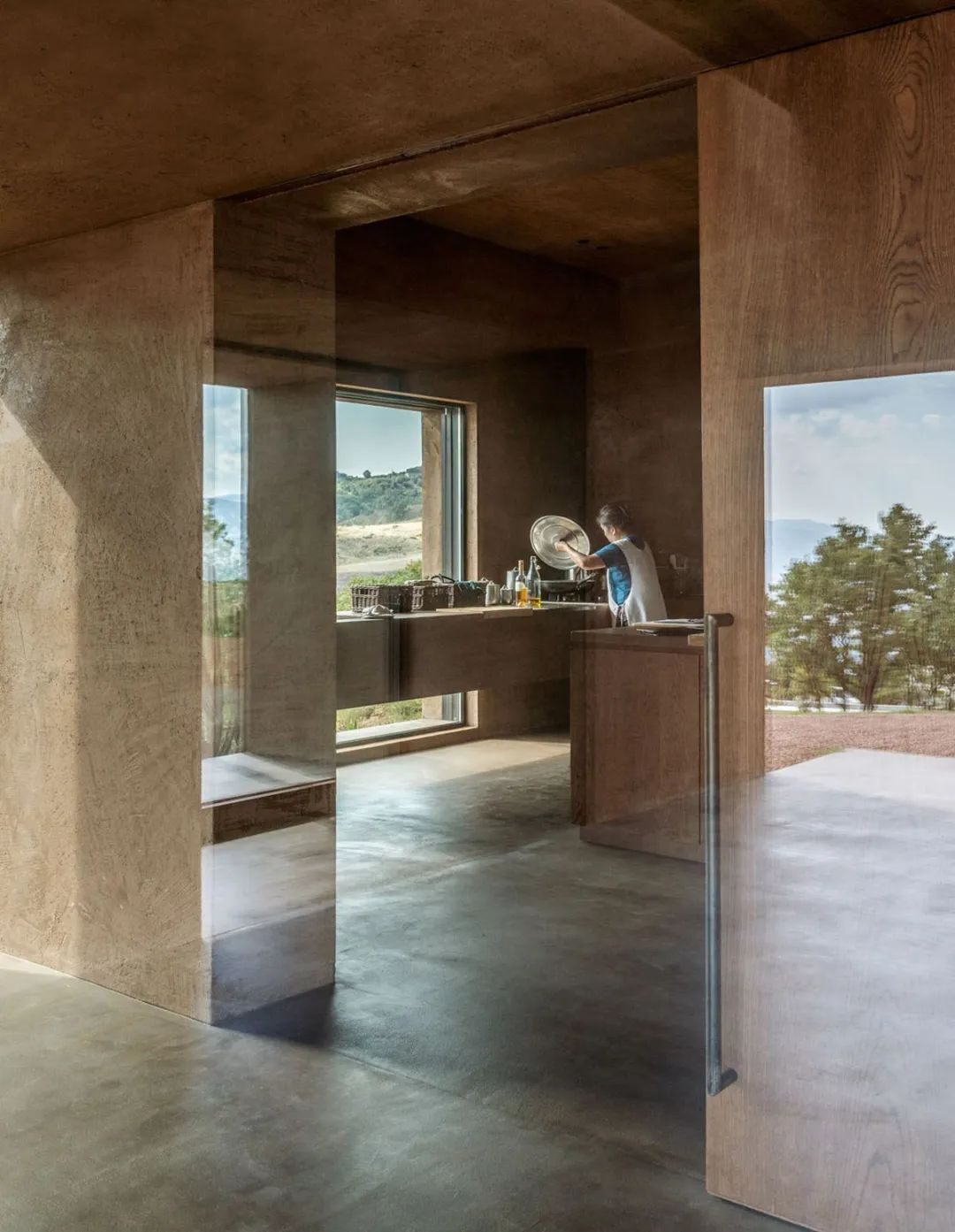
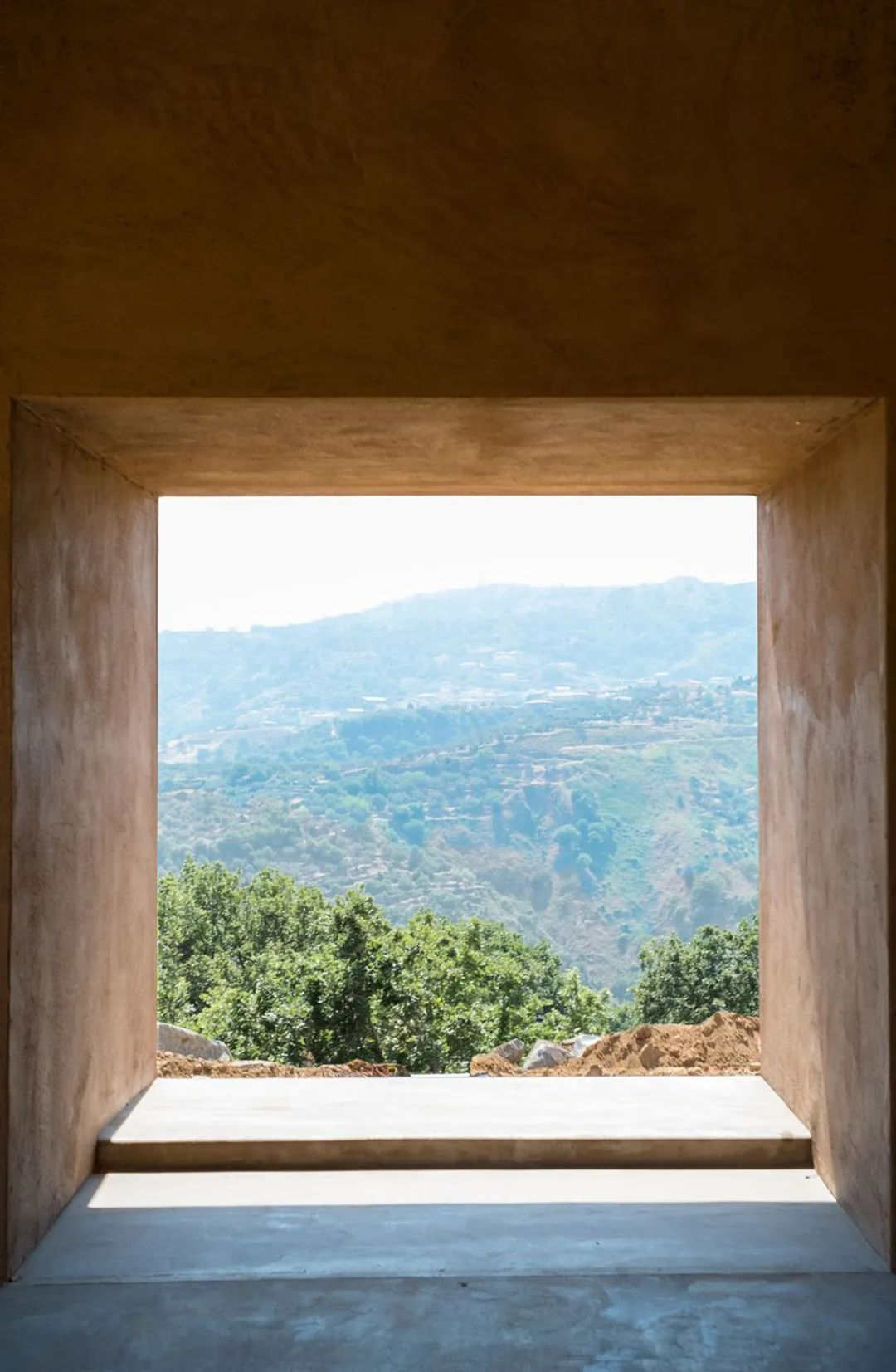
Manna Apartment
Design: Sergry Makhno
The project was designed by Ukrainian designer Sergey Makhno. Minimalism is combined with natural materials to create a modern wabi-sabi atmosphere of quiet, peace, natural comfort.
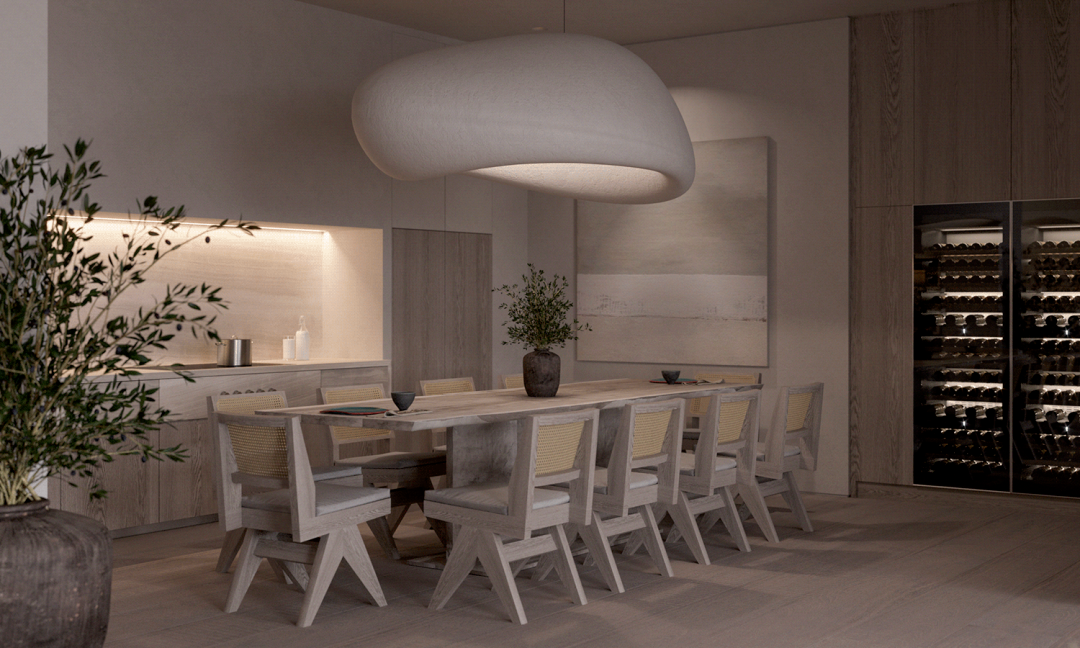
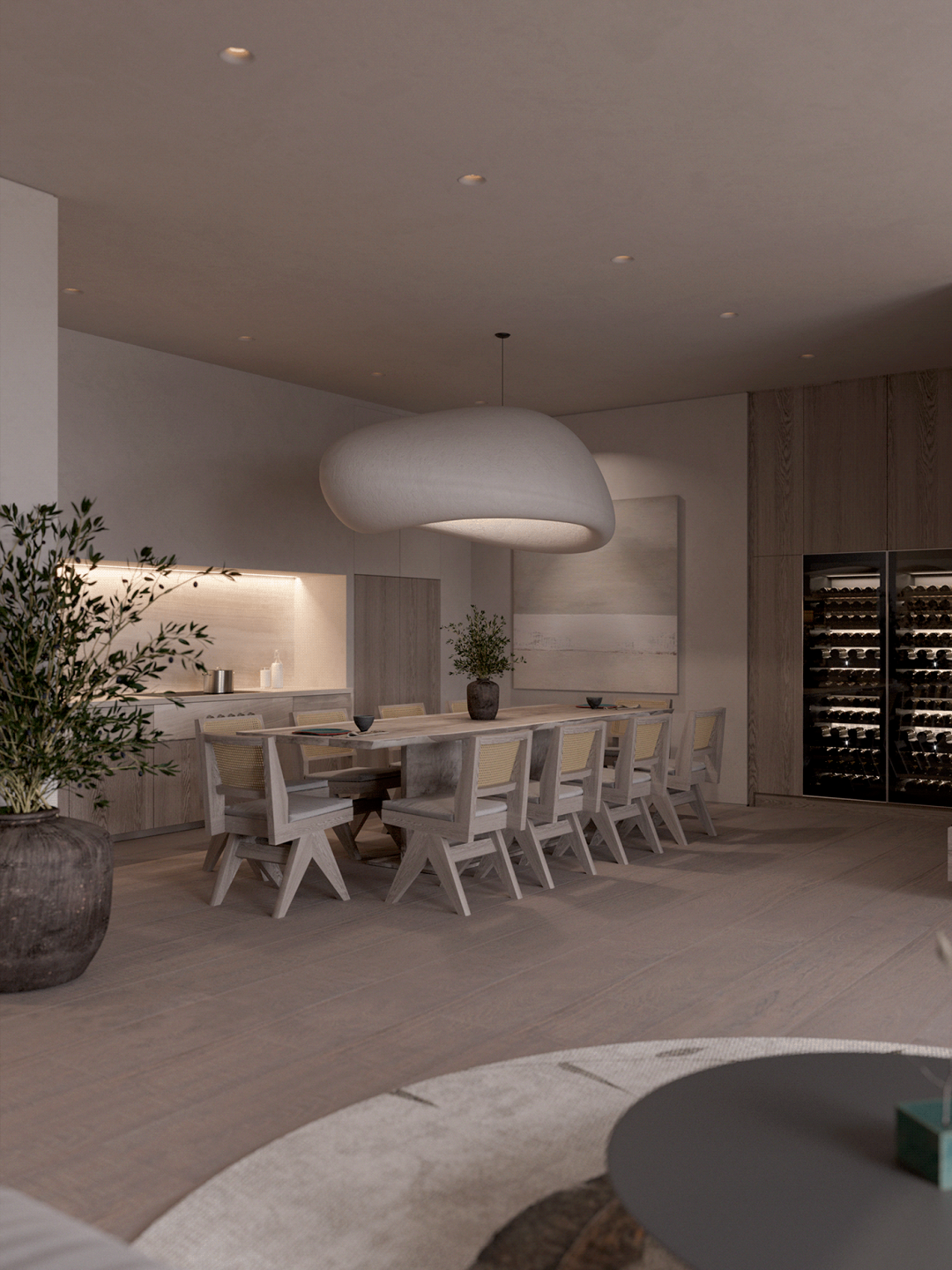
The dining and kitchen space is presented in pure cream and warm white tones, cleverly combining warmth and wabi-sabi.
The free shape of the ceramic chandelier makes people feel comfortable and relaxed.
The style of the guest rooms is calm and restrained, and a lot of natural wood brings comfort.
The simple texture of the background wall exudes a wabi-sabi style.
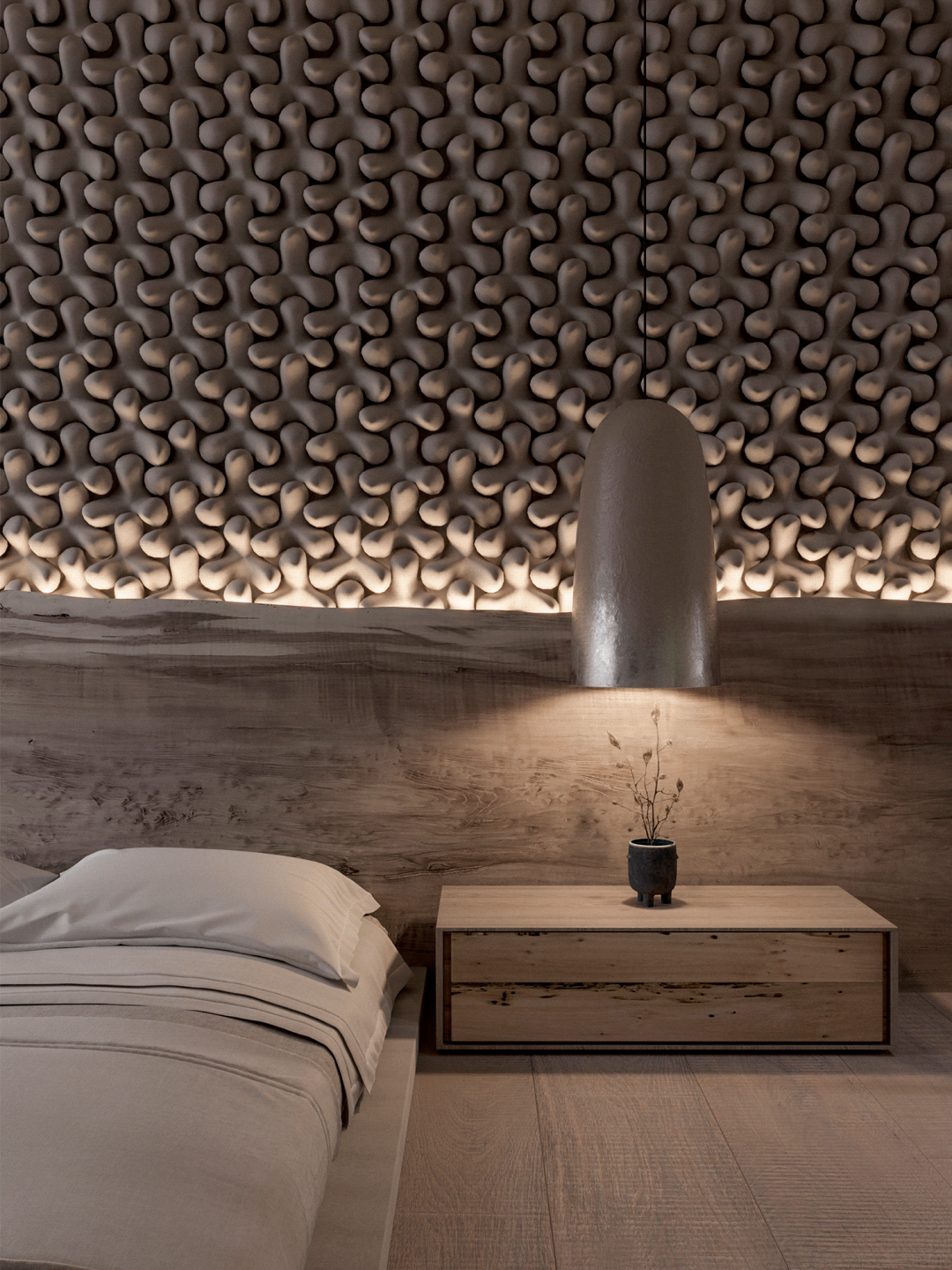
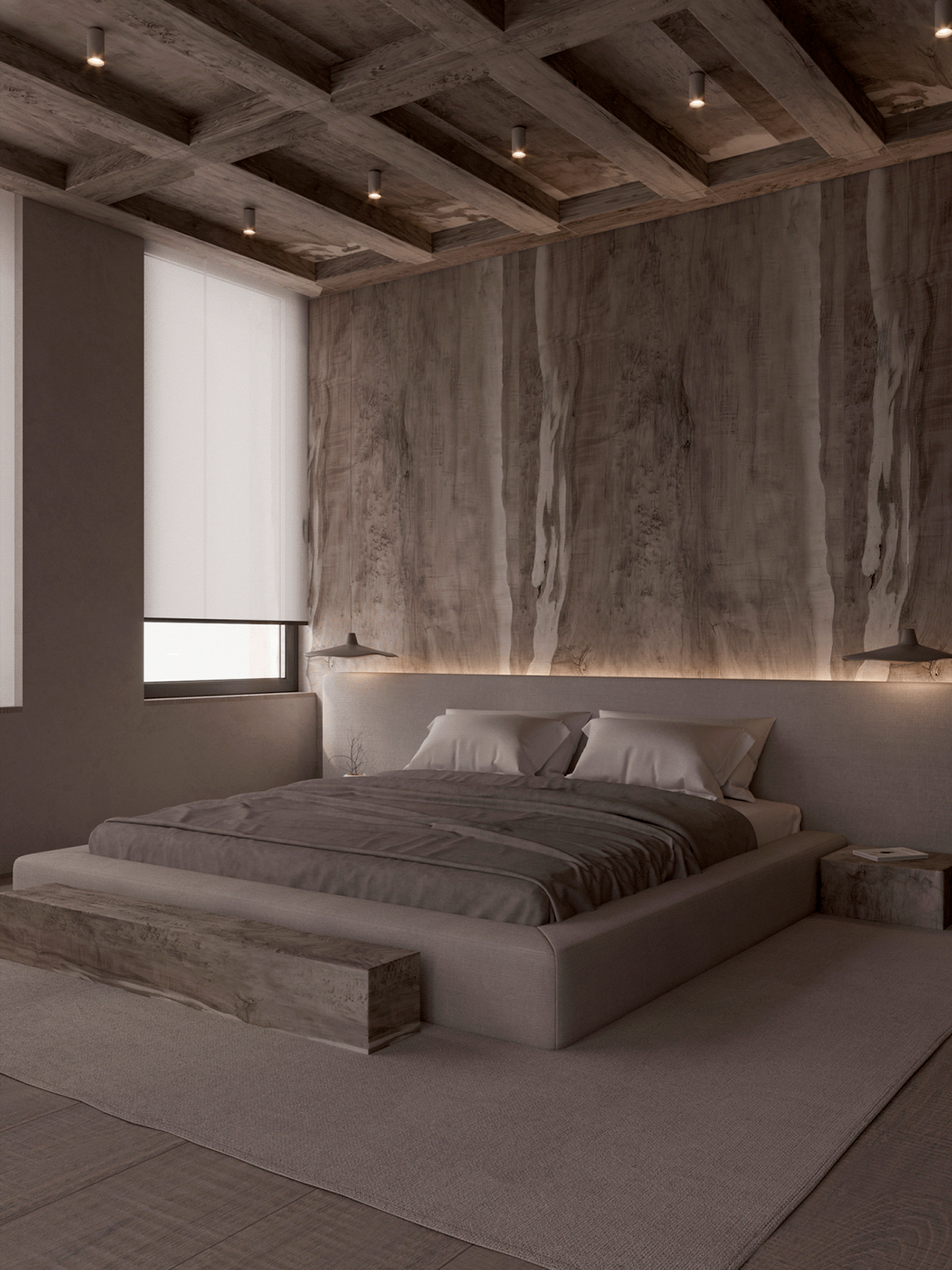
After reading these cases, I wonder if you have discovered that Wabi-Sabi aesthetic spaces like to use these elements:
Old wood
Old wood is old and rough, but it seems to have a magical power of springing back to life, which is irresistible. Under the appearance of old objects, there is always a kind of beauty full of time.
When old wood falls into the hands of designers, it has the potential to change in a variety of ways. Whether it is naturally dried, aged over the years, or artificially molded, it will always present a furniture form that fits the trend.
Clear cement
Clear cement is quiet, low-key and inclusive. Its texture and exquisite shape form a strong sense of compositional beauty, giving the whole a unique sense of power, simplicity, ultimate purity and other aesthetic expressions. No wonder it is loved by the Wabi-Sabi style.
Rattan elements
Handmade items like rattan weaving, in addition to their shape and function, also have a craftsmanship spirit rarely seen in other cultures. It can be said that the effective interaction between the craftsmen and the materials when making objects has produced an indescribable "life" in them, which is the natural concept advocated by the wabi-sabi style.
Linen elements
Like rattan, linen is naturally endowed with an irresistible charm. With its fine weaving technique and linen fabric, this kind of tactile creation can always bring tranquility to people.
Mottled wall
Even if the appearance is mottled or faded, it cannot hinder (and may even enhance) the stunning beauty.
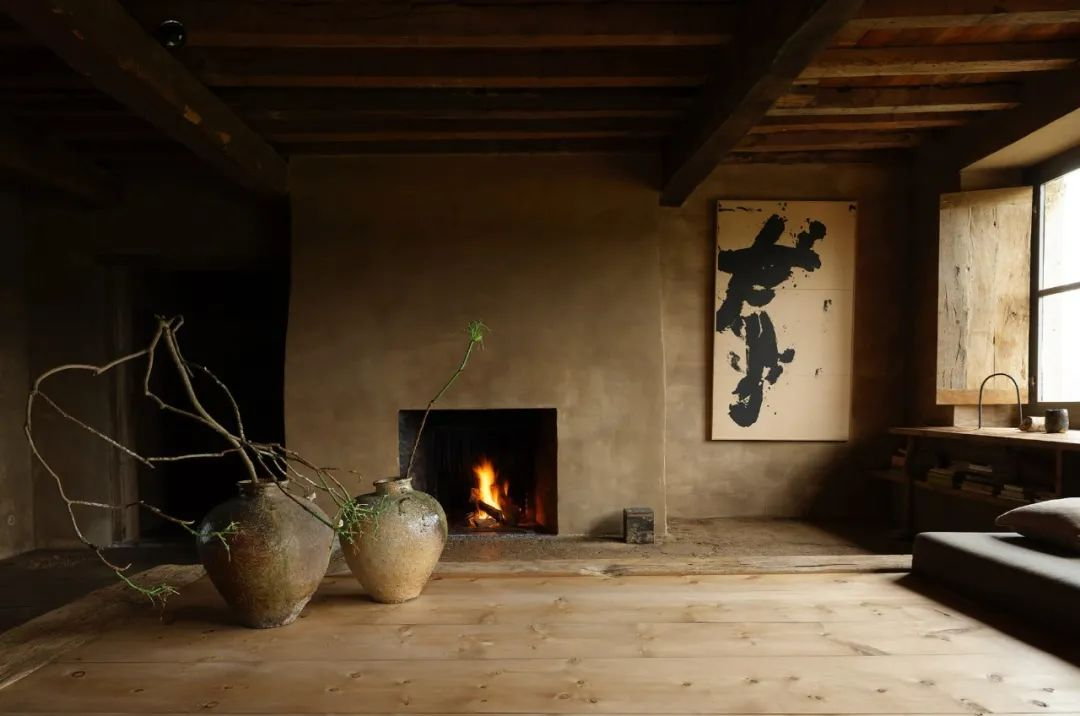
Finally, it is not difficult to find that in the design of objects, matte surface treatment is preferred to replace glossy surface; hand-made stains are preferred to replace artificial smoothness; exposed processing process is preferred to replace perfect precision sewing.
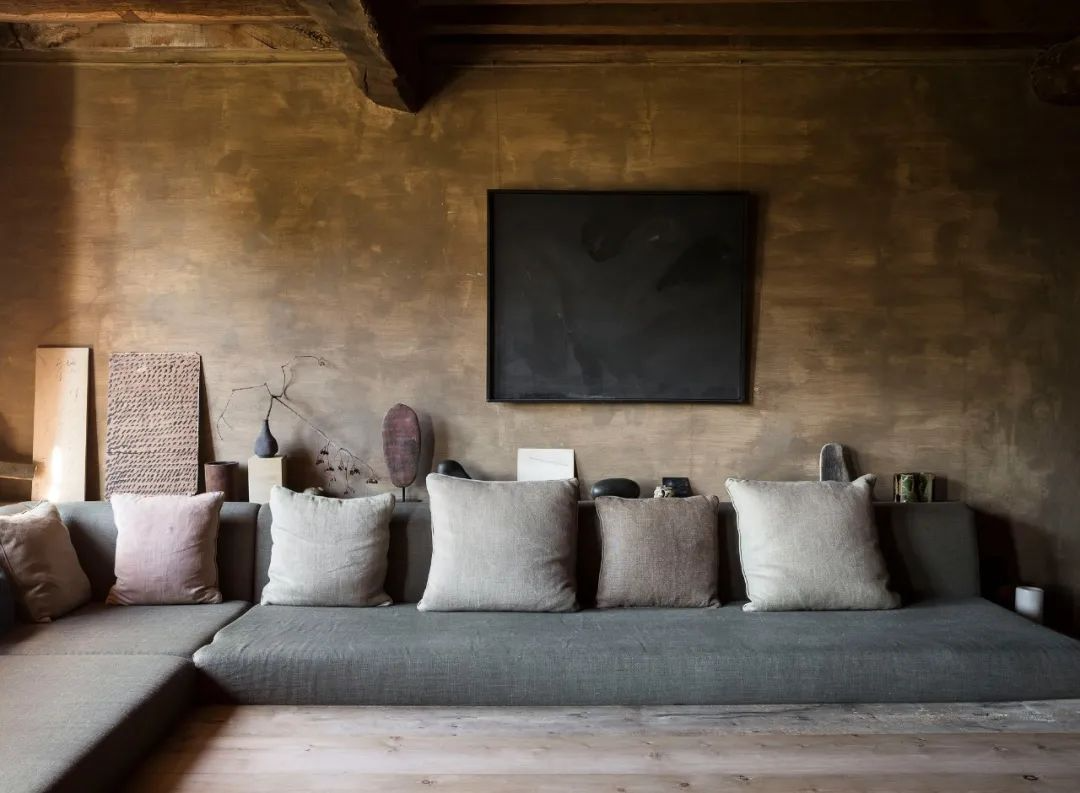
This also explains why more and more people like old things. The older they are, the more valuable they are. It is better to turn time into a friend than to be its enemy. This is the charm of "wabi-sabi".
